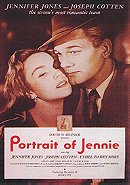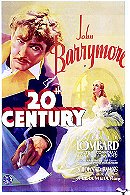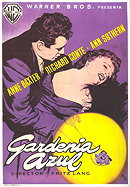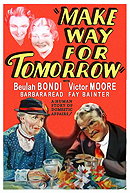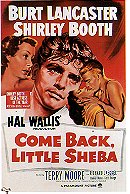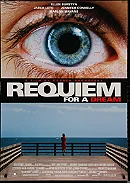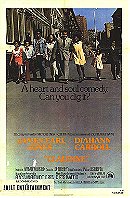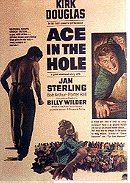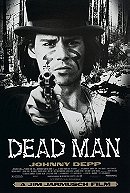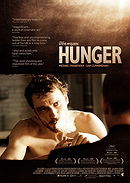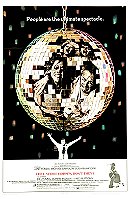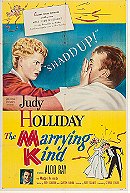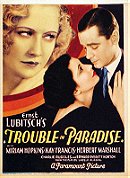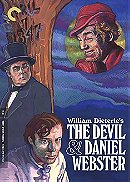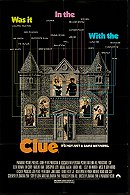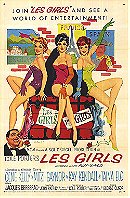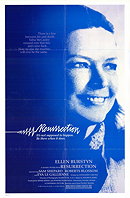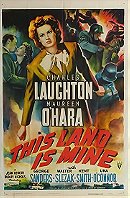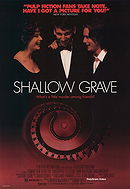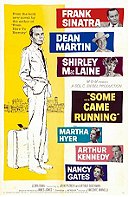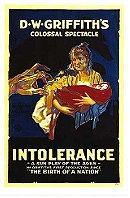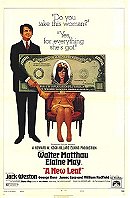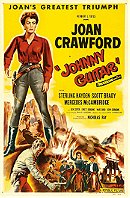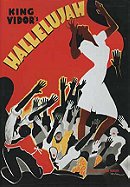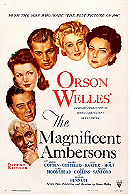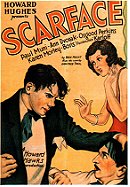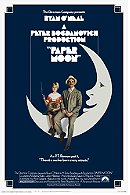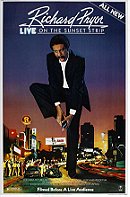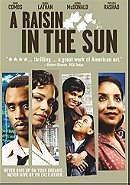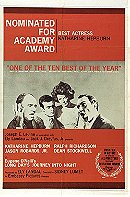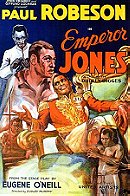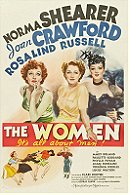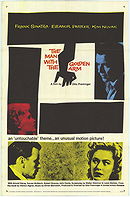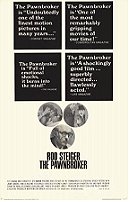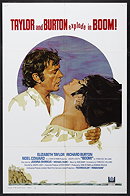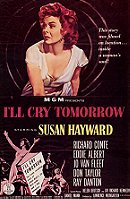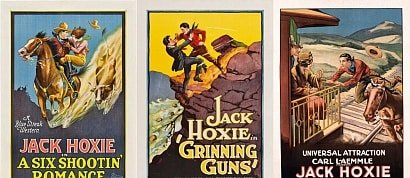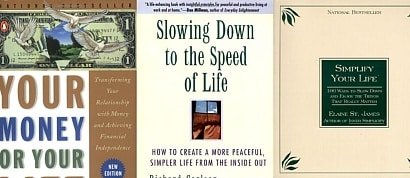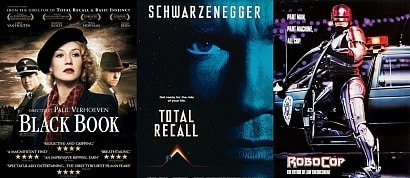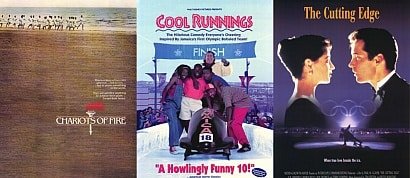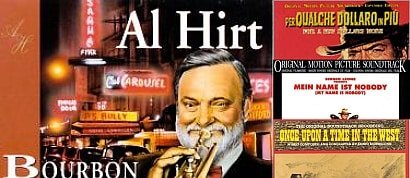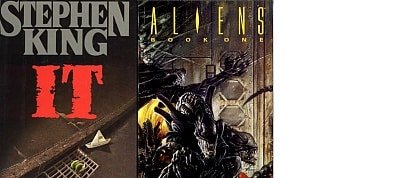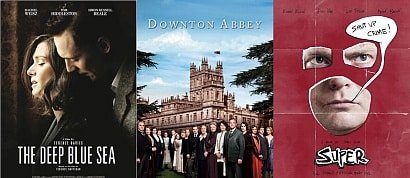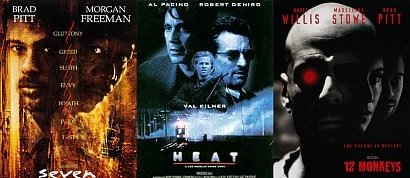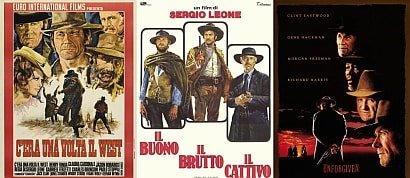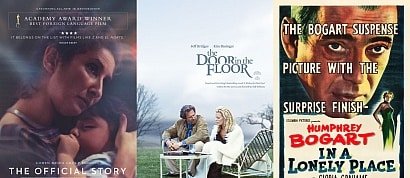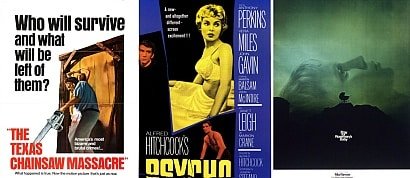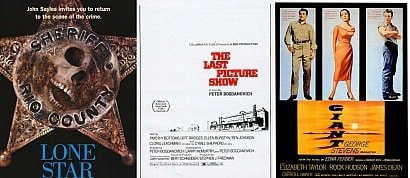PopMatter's Essential Film Performances - 2012
Sort by:
Showing 50 items
Decade:
Rating:
List Type:
PopMatters follows up last year's hugely popular 100 Essential Female and Male Performances feature with 50 additions to the essentials list.
Dance, Girl, Dance (1940)
UNDER THE RADAR
Lucille Ball
How on earth could an outright icon such as Lucille Ball ever be considered “Under the Radar”, you might ask. Yes, everyone’s favorite redhead became a household name for her brilliant eponymous television comedy and her legendary performance as a 1950s housewife that still rings hilariously true today and is beloved basically globally. Everyone knows Lucy. Yet, curiously, we rarely talk about Lucille Ball as a film actress of formidable skill, and it is high time this changes.
Pioneering director Dorothy Arzner, one of very few female directors working at the time, saw in proto-pioneer Ball something we rarely think of her as: the vamp, the bad girl, the one who uses her body and looks to get what she wants. Bubbles and her alter ego Tiger Lily White are part old-fashioned 1940s movie dames, part hybridized femmes fatale. Think the va-va-va-voom of the Rockettes colliding with Joan Blondell’s smart mouth. There’s a lot of sex in Dance, Girl, Dance, mainly courtesy of Ball. She’s tough, funny, and magnetic as Bubbles/Tiger Lilly finding a nice balance between the cat and the claw as a good time burlesque dancer out to seize whatever opportunity she can to further her career and her own security.
There’s a sparkle in her eye and on her ear, a vivaciousness in her body language. Bubbles/Tiger Lily seems wildly unpredictable, dangerous even at times, because she’s smarter, sexier and more determined than anyone else in the room. And she never really apologizes, which makes this performance all the more memorable and allows each bon mot she lets loose crackle with electricity. As one male character says to her: “Give ‘em all you got, baby!” Her reply? “They couldn’t take it.” Packed with nerve, Ball’s performance leaves much to be admired, and as directed by Arzner, she exposes each one in brilliantly subversive way, embracing the challenges of pure physical comedy and expert timing, singing and dancing with equal grace.
However, there is a raw undertone to her work here, a hard-to-pin down sparkling diamond hardness, the kind that is fascinating to stare at, but that can also cut deep. It is Ball’s choice to play her character with a strong, bitchy edge that elevates the characterization beyond just another working class dancehall girl of that era. She brings what can only be surmised is a sense of scrappy reality to the part of a woman trying to get ahead in life on her own steam, using whatever resource is at hand. Whether it’s money, power, or her friend’s man, nothing is off limits if it means Bubbles/Tiger Lilly gets her way. She may pay friends debts and attempt—in her own self-cherishing way—to “help” her fellow dancers achieve infamy through public humiliation, but that’s about the extent of this wild and sharp sex kitten’s good nature. It is this kind of impressive versatility on film that, along with her television achievements, cements Ball’s place in the pantheon of all-time great comediennes.
-Matt Mazur
Lucille Ball
How on earth could an outright icon such as Lucille Ball ever be considered “Under the Radar”, you might ask. Yes, everyone’s favorite redhead became a household name for her brilliant eponymous television comedy and her legendary performance as a 1950s housewife that still rings hilariously true today and is beloved basically globally. Everyone knows Lucy. Yet, curiously, we rarely talk about Lucille Ball as a film actress of formidable skill, and it is high time this changes.
Pioneering director Dorothy Arzner, one of very few female directors working at the time, saw in proto-pioneer Ball something we rarely think of her as: the vamp, the bad girl, the one who uses her body and looks to get what she wants. Bubbles and her alter ego Tiger Lily White are part old-fashioned 1940s movie dames, part hybridized femmes fatale. Think the va-va-va-voom of the Rockettes colliding with Joan Blondell’s smart mouth. There’s a lot of sex in Dance, Girl, Dance, mainly courtesy of Ball. She’s tough, funny, and magnetic as Bubbles/Tiger Lilly finding a nice balance between the cat and the claw as a good time burlesque dancer out to seize whatever opportunity she can to further her career and her own security.
There’s a sparkle in her eye and on her ear, a vivaciousness in her body language. Bubbles/Tiger Lily seems wildly unpredictable, dangerous even at times, because she’s smarter, sexier and more determined than anyone else in the room. And she never really apologizes, which makes this performance all the more memorable and allows each bon mot she lets loose crackle with electricity. As one male character says to her: “Give ‘em all you got, baby!” Her reply? “They couldn’t take it.” Packed with nerve, Ball’s performance leaves much to be admired, and as directed by Arzner, she exposes each one in brilliantly subversive way, embracing the challenges of pure physical comedy and expert timing, singing and dancing with equal grace.
However, there is a raw undertone to her work here, a hard-to-pin down sparkling diamond hardness, the kind that is fascinating to stare at, but that can also cut deep. It is Ball’s choice to play her character with a strong, bitchy edge that elevates the characterization beyond just another working class dancehall girl of that era. She brings what can only be surmised is a sense of scrappy reality to the part of a woman trying to get ahead in life on her own steam, using whatever resource is at hand. Whether it’s money, power, or her friend’s man, nothing is off limits if it means Bubbles/Tiger Lilly gets her way. She may pay friends debts and attempt—in her own self-cherishing way—to “help” her fellow dancers achieve infamy through public humiliation, but that’s about the extent of this wild and sharp sex kitten’s good nature. It is this kind of impressive versatility on film that, along with her television achievements, cements Ball’s place in the pantheon of all-time great comediennes.
-Matt Mazur
JxSxPx's rating:


Portrait of Jennie (1948)
LIFE SUPPORT
Ethel Barrymore
“I’m an old maid and nobody knows more about love than an old maid,” says Ethel Barrymore’s Spinny, the Upper East Side spinster-gallerist in William Dieterle’s stunning curio of a film, Portrait of Jennie. At this point in her career, Barrymore was a stage legend, her film appearances often reluctant and fleeting, though celebrated nonetheless. (During the mid-to-late-1940s, Barrymore got four Academy Award nominations for Best Supporting Actress, winning one.)
And so it is that Barrymore appears in Portrait of Jennie as the archetypal crone, a role she repeated often, but, aside perhaps from her stint in Vincente Minnelli’s portion of The Story of Three Loves, never did better. Spinny is the life coach of hapless Hawthornian artist Eben Adams, played by Joseph Cotten. She buys a poor flower sketch from him at the start of the film, out of pity—and a bit, as her bulging eyes and pursed lips suggest, out of lust. Later, he finds his muse, Jenny (Jennifer Jones), who exists out of time, maturing rapidly as a ghost, or an idea. Spinny recognizes that Eben must paint Jenny if he is to excel as an artist, and she encourages him, wistful and wise in her aging virginity.
Spinny and Jenny are opposites in the film, a subject-object dichotomy brilliantly embodied by Barrymore and Jones: one, the great interpreter, always observing and commenting; the other, a Hollywood ingénue, her lines secondary to her beauty. “There ought to be something eternal about a woman,” says Cecil Kellaway’s Mr. Matthews, Spinny’s colleague, when the film’s titular portrait is revealed. Spinny seems aware that this means more than he knows—that it has resonance for her as well.
Barrymore shines in Portrait of Jennie when she bids Eban goodbye as he makes his way to the coastal town of “Land’s End Light,” where he meets Jennie to try to rectify her haunted tale with romantic union. “You’re tough; the sea wouldn’t get you,” says Eban in response to Spinny’s grandmotherly warning for him to be safe. “Tough ones drown too, you know,” she responds, a bit lovelorn, and clearly aware that her own fate, unlike Jennie’s, is unalterably mortal.
-David Balzer
Ethel Barrymore
“I’m an old maid and nobody knows more about love than an old maid,” says Ethel Barrymore’s Spinny, the Upper East Side spinster-gallerist in William Dieterle’s stunning curio of a film, Portrait of Jennie. At this point in her career, Barrymore was a stage legend, her film appearances often reluctant and fleeting, though celebrated nonetheless. (During the mid-to-late-1940s, Barrymore got four Academy Award nominations for Best Supporting Actress, winning one.)
And so it is that Barrymore appears in Portrait of Jennie as the archetypal crone, a role she repeated often, but, aside perhaps from her stint in Vincente Minnelli’s portion of The Story of Three Loves, never did better. Spinny is the life coach of hapless Hawthornian artist Eben Adams, played by Joseph Cotten. She buys a poor flower sketch from him at the start of the film, out of pity—and a bit, as her bulging eyes and pursed lips suggest, out of lust. Later, he finds his muse, Jenny (Jennifer Jones), who exists out of time, maturing rapidly as a ghost, or an idea. Spinny recognizes that Eben must paint Jenny if he is to excel as an artist, and she encourages him, wistful and wise in her aging virginity.
Spinny and Jenny are opposites in the film, a subject-object dichotomy brilliantly embodied by Barrymore and Jones: one, the great interpreter, always observing and commenting; the other, a Hollywood ingénue, her lines secondary to her beauty. “There ought to be something eternal about a woman,” says Cecil Kellaway’s Mr. Matthews, Spinny’s colleague, when the film’s titular portrait is revealed. Spinny seems aware that this means more than he knows—that it has resonance for her as well.
Barrymore shines in Portrait of Jennie when she bids Eban goodbye as he makes his way to the coastal town of “Land’s End Light,” where he meets Jennie to try to rectify her haunted tale with romantic union. “You’re tough; the sea wouldn’t get you,” says Eban in response to Spinny’s grandmotherly warning for him to be safe. “Tough ones drown too, you know,” she responds, a bit lovelorn, and clearly aware that her own fate, unlike Jennie’s, is unalterably mortal.
-David Balzer
JxSxPx's rating:


THE CLASSICS YOU SHOULD HAVE SEEN BY NOW
John Barrymore
It must have taken a lot of energy to star in a great screwball comedy. Watch Rosalind Russell in the second half of His Girl Friday, for example. At a screwball climax, the situation runs at a fever pitch, and the actors have to keep up with the pace. Sometimes, the great screwball films feel designed to keep the audience in a continuous belly laugh for their duration. One such performance is John Barrymore’s in Howard Hawks’ screwball classic Twentieth Century.
You don’t know mania until you’ve seen this performance. John Barrymore is ferocious. He’s playing Oscar Jaffe, a flamboyant, egomaniacal thee-ay-tuh producer opposite Carole Lombard in her breakthrough role. Combined, the first generation of Barrymores brought more prestige to the “lesser” art of film acting than anyone else, save Lillian Gish. By the time Twentieth Century came along, this foundation was firmly in place, and Barrymore just wanted to have fun. With every crazed swoop of the arm and defeated snarl, he chews the scenery and mocks his own temperamental reputation.
It’s not just the outright wackiness of the role that’s so exciting, it’s the utter perverseness of it. I’ve never quite fully reconciled the joy of watching this movie with the film’s outrageous cruelty; most of the humor in the movie comes from Jaffe’s sadism. If Hitchcock ever actually said actors were cattle, Jaffe would’ve called it an understatement. He treats the Carole Lombard character so badly, you almost have to feel bad for laughing at her expense. Credit must be given to John Barrymore, for imbuing such a thankless role with a delicate balance of savagery, histrionics, and heart. It’s a shame that Twentieth Century was his last truly great film role, but his actorly grandeur and superbly over-the-top comedic timing positively spark.
-Austin Dale
John Barrymore
It must have taken a lot of energy to star in a great screwball comedy. Watch Rosalind Russell in the second half of His Girl Friday, for example. At a screwball climax, the situation runs at a fever pitch, and the actors have to keep up with the pace. Sometimes, the great screwball films feel designed to keep the audience in a continuous belly laugh for their duration. One such performance is John Barrymore’s in Howard Hawks’ screwball classic Twentieth Century.
You don’t know mania until you’ve seen this performance. John Barrymore is ferocious. He’s playing Oscar Jaffe, a flamboyant, egomaniacal thee-ay-tuh producer opposite Carole Lombard in her breakthrough role. Combined, the first generation of Barrymores brought more prestige to the “lesser” art of film acting than anyone else, save Lillian Gish. By the time Twentieth Century came along, this foundation was firmly in place, and Barrymore just wanted to have fun. With every crazed swoop of the arm and defeated snarl, he chews the scenery and mocks his own temperamental reputation.
It’s not just the outright wackiness of the role that’s so exciting, it’s the utter perverseness of it. I’ve never quite fully reconciled the joy of watching this movie with the film’s outrageous cruelty; most of the humor in the movie comes from Jaffe’s sadism. If Hitchcock ever actually said actors were cattle, Jaffe would’ve called it an understatement. He treats the Carole Lombard character so badly, you almost have to feel bad for laughing at her expense. Credit must be given to John Barrymore, for imbuing such a thankless role with a delicate balance of savagery, histrionics, and heart. It’s a shame that Twentieth Century was his last truly great film role, but his actorly grandeur and superbly over-the-top comedic timing positively spark.
-Austin Dale
JxSxPx's rating:


Strange Days (1995)
LIFE SUPPORT
Angela Bassett
When we first see her navigating the mean streets of a then-futuristic millennial Los Angeles as limousine driver Lornette Mason (more fittingly referred to throughout by her nickname, “Mace”), Angela Bassett is the literal personification of the vehicle she sits at the helm of: sleek, imposing, beautiful and impenetrable. It is an exterior that is proven to be both accurate and deceptive in the alternately dazzling and complex Strange Days, as Mace’s steely armor is gradually revealed to be shielding a thicket of emotional live wires every bit as much as it is protecting her physically from a world teetering on the edge of violent chaos. It’s a duality that makes Mace the most fascinating and resonant character scattered amongst the Rogues gallery of disgraced ex-cops, techno-druggies, desperate criminals and entertainment industry sleaze balls that populate this vibrant slice of sci-fi noir, locating Bassett’s Mace as the film’s center of gravity both in terms of its point-of-view and its thematic weight.
Set in an L.A. still reeling from the fallout of the Rodney King verdict and subsequent riots of 1992, James Cameron and Jay Cocks’ ambitiously and even bravely topical script allows for both a literally ass kicking African American heroine and an uncommented-upon interracial romance, as Mace follows, rescues and assists unrequited love interest Lenny Nero (Ralph Fiennes) through a seedy underworld of cover-ups, hate crimes and double crosses all centered around a frightening and seductive brand of virtual reality as the new drug of choice.
That Bassett bears the weight of all of this in what is essentially a supporting role (Fiennes is terrific in the lead, but his no-less-complicated role requires him to be every bit as frantic and colorful as the material) is as much of a testament to her strength, dignity, range and fearlessness as an actress as the role call of crucial real life figures, from Rosa Parks to Tina Turner, from Michael Jackson’s mother to Malcolm X’s wife Betty Shabazz, that she brought to life on screen. “Memories were meant to fade,” she lectures Fiennes in one crucial moment, but Bassett’s is one performance that is certain to remain vividly alive in the mind of anyone who witnesses it.
-Jer Fairall
Angela Bassett
When we first see her navigating the mean streets of a then-futuristic millennial Los Angeles as limousine driver Lornette Mason (more fittingly referred to throughout by her nickname, “Mace”), Angela Bassett is the literal personification of the vehicle she sits at the helm of: sleek, imposing, beautiful and impenetrable. It is an exterior that is proven to be both accurate and deceptive in the alternately dazzling and complex Strange Days, as Mace’s steely armor is gradually revealed to be shielding a thicket of emotional live wires every bit as much as it is protecting her physically from a world teetering on the edge of violent chaos. It’s a duality that makes Mace the most fascinating and resonant character scattered amongst the Rogues gallery of disgraced ex-cops, techno-druggies, desperate criminals and entertainment industry sleaze balls that populate this vibrant slice of sci-fi noir, locating Bassett’s Mace as the film’s center of gravity both in terms of its point-of-view and its thematic weight.
Set in an L.A. still reeling from the fallout of the Rodney King verdict and subsequent riots of 1992, James Cameron and Jay Cocks’ ambitiously and even bravely topical script allows for both a literally ass kicking African American heroine and an uncommented-upon interracial romance, as Mace follows, rescues and assists unrequited love interest Lenny Nero (Ralph Fiennes) through a seedy underworld of cover-ups, hate crimes and double crosses all centered around a frightening and seductive brand of virtual reality as the new drug of choice.
That Bassett bears the weight of all of this in what is essentially a supporting role (Fiennes is terrific in the lead, but his no-less-complicated role requires him to be every bit as frantic and colorful as the material) is as much of a testament to her strength, dignity, range and fearlessness as an actress as the role call of crucial real life figures, from Rosa Parks to Tina Turner, from Michael Jackson’s mother to Malcolm X’s wife Betty Shabazz, that she brought to life on screen. “Memories were meant to fade,” she lectures Fiennes in one crucial moment, but Bassett’s is one performance that is certain to remain vividly alive in the mind of anyone who witnesses it.
-Jer Fairall
JxSxPx's rating:


The Blue Gardenia (1953)
UNDER THE RADAR
Anne Baxter
“Do you know what a mermaid’s downfall is?”
Anne Baxter’s turn as Norah in Fritz Lang’s bombastic, sharply funny noir has her playing both of the classic types found in this genre: the anti-hero and the femme fatale. In this rarified world, it is highly unusual for women to be driving all of the action, so in this respect, Lange’s The Blue Gardenia could be called a “feminoir” and Baxter’s daffy, deft work as the woman at the center of the film’s mystery is a marvel of physical comedy and working class chutzpah.
As she demonstrated in her Oscar-winning performance in Elia Kazan’s The Razor’s Edge (1946) and perhaps in her most famous work opposite Bette Davis in All About Eve (1950), Baxter’s versatility as an actress enabled her to inhabit a wide range of characters (she was trained by the legendary Maria Ouspenskaya, after all). As Norah, a woman who stands accused of murder following a long, drunken night out after being jilted by her fiancee, the actress is put through some demanding paces, including playing both comedic and dramatic drunk scenes. Norah, who is as convinced of her guilt as the police, must piece together (through meticulously-constructed flashbacks) the truth about her fateful night out with a lech who ends up dead, and watching Baxter’s increasing paranoia, her lovelorn, broken-hearted telephone operator feels surprisingly modern even today.
Lang’s working class ladies’ milieu is punchy, a bit wicked, standing the test of time as a sharp look at single gals and just how tough it is to land a great catch. A timeless story, really. Norah is a reckless, jilted lover and the character feels like an anomaly in the world of noir: a passionate, grounded female protagonist who is equal parts comedienne and tragedienne. There is a vividness about her work, something bright, eager and instinctual that makes Norah feel real. Watching the mystery unravel with such balance and fairness expertly etched into the characterization is riveting and indeed rare.
-MM
Anne Baxter
“Do you know what a mermaid’s downfall is?”
Anne Baxter’s turn as Norah in Fritz Lang’s bombastic, sharply funny noir has her playing both of the classic types found in this genre: the anti-hero and the femme fatale. In this rarified world, it is highly unusual for women to be driving all of the action, so in this respect, Lange’s The Blue Gardenia could be called a “feminoir” and Baxter’s daffy, deft work as the woman at the center of the film’s mystery is a marvel of physical comedy and working class chutzpah.
As she demonstrated in her Oscar-winning performance in Elia Kazan’s The Razor’s Edge (1946) and perhaps in her most famous work opposite Bette Davis in All About Eve (1950), Baxter’s versatility as an actress enabled her to inhabit a wide range of characters (she was trained by the legendary Maria Ouspenskaya, after all). As Norah, a woman who stands accused of murder following a long, drunken night out after being jilted by her fiancee, the actress is put through some demanding paces, including playing both comedic and dramatic drunk scenes. Norah, who is as convinced of her guilt as the police, must piece together (through meticulously-constructed flashbacks) the truth about her fateful night out with a lech who ends up dead, and watching Baxter’s increasing paranoia, her lovelorn, broken-hearted telephone operator feels surprisingly modern even today.
Lang’s working class ladies’ milieu is punchy, a bit wicked, standing the test of time as a sharp look at single gals and just how tough it is to land a great catch. A timeless story, really. Norah is a reckless, jilted lover and the character feels like an anomaly in the world of noir: a passionate, grounded female protagonist who is equal parts comedienne and tragedienne. There is a vividness about her work, something bright, eager and instinctual that makes Norah feel real. Watching the mystery unravel with such balance and fairness expertly etched into the characterization is riveting and indeed rare.
-MM
JxSxPx's rating:


Winter Light (1963)
THE CLASSICS YOU SHOULD HAVE SEEN BY NOW
Gunnar Bjornstrand
In Winter Light, everyone is experiencing a crisis of faith of some sort: faith in a lover, faith in humanity, faith in suffering. But no crisis is more profound than that of Tomas Ericsson, a Lutheran pastor whose questioning of his relationship with God has made him question his very being.
Gunnar Björnstrand’s performance as Tomas is a lesson in subtly. Tomas keeps his breakdown private, pushing it inside himself. He responds to “God’s silence” with his own silence. The crisis is repressed and it only breaks through the surface every now and then, coming out as the flu and in coughs and fits of exhaustion. Otherwise, it is kept swallowed, and that is what is most amazing about Björnstrand’s feat. As an actor he can create a life-altering agony and then suppress it. Where other actors would want to emote, Björnstrand chooses to retreat, to utterly shun the very thing that is driving his character.
Björnstrand’s performance is made all the more challenging by Sven Nykvist’s cinematography. The camera fixes an unblinking gaze on Tomas, making every motion and every facial expression a subject to study and contemplate. As an actor, Björnstrand must be at his most aware while seeming totally unaware. Without pure dedication to the role and without being at the height of his craft, the game would be up and the illusion totally shattered.
This is what the priest is going through as well, but Tomas cannot pull it off as well as Björnstrand. Tomas’ audience is only a small congregation, but he’s crumbling, losing his own character because it has become too much to bear. In questioning his faith he questions his role in life, and so he cannot give to his job the dedication that Björnstrand gives to his. While preaching—both during and after a Sunday mass—Tomas’ speeches carry the seriousness of the whole universe, but his words have little meaning. Tomas cannot talk straight, cannot articulate the demons that are churning beneath his skin, ripping at his soul. There’s no substance behind his words because Tomas fears there’s no substance in existence, and Björnstrand is able to convey, with minimal movement and maximum effort, that this is a man who doesn’t even know if he can believe in himself.
-Daniel Tovrov
Gunnar Bjornstrand
In Winter Light, everyone is experiencing a crisis of faith of some sort: faith in a lover, faith in humanity, faith in suffering. But no crisis is more profound than that of Tomas Ericsson, a Lutheran pastor whose questioning of his relationship with God has made him question his very being.
Gunnar Björnstrand’s performance as Tomas is a lesson in subtly. Tomas keeps his breakdown private, pushing it inside himself. He responds to “God’s silence” with his own silence. The crisis is repressed and it only breaks through the surface every now and then, coming out as the flu and in coughs and fits of exhaustion. Otherwise, it is kept swallowed, and that is what is most amazing about Björnstrand’s feat. As an actor he can create a life-altering agony and then suppress it. Where other actors would want to emote, Björnstrand chooses to retreat, to utterly shun the very thing that is driving his character.
Björnstrand’s performance is made all the more challenging by Sven Nykvist’s cinematography. The camera fixes an unblinking gaze on Tomas, making every motion and every facial expression a subject to study and contemplate. As an actor, Björnstrand must be at his most aware while seeming totally unaware. Without pure dedication to the role and without being at the height of his craft, the game would be up and the illusion totally shattered.
This is what the priest is going through as well, but Tomas cannot pull it off as well as Björnstrand. Tomas’ audience is only a small congregation, but he’s crumbling, losing his own character because it has become too much to bear. In questioning his faith he questions his role in life, and so he cannot give to his job the dedication that Björnstrand gives to his. While preaching—both during and after a Sunday mass—Tomas’ speeches carry the seriousness of the whole universe, but his words have little meaning. Tomas cannot talk straight, cannot articulate the demons that are churning beneath his skin, ripping at his soul. There’s no substance behind his words because Tomas fears there’s no substance in existence, and Björnstrand is able to convey, with minimal movement and maximum effort, that this is a man who doesn’t even know if he can believe in himself.
-Daniel Tovrov
JxSxPx's rating:


FROM PAGE TO SCREEN
Beulah Bondi
Barkley and Lucy Cooper are an elderly couple with five grown children. Their children are a bit self-centered and preoccupied with their own lives. Luckily, their romance has never wavered, and as long as they have each other, they have someone to depend on. Unfortunately the Great Depression hits them hard, and they lose their home to foreclosure. None of their children are willing to take in both of them, so they must separate temporarily. This separation grows longer and longer. Eventually, Bark becomes ill and has to be sent to his daughter Addie in California. Lucy and Bark have one last afternoon together in New York before they must say goodbye to each other forever.
This is the sad story of Make Way For Tomorrow, Leo McCarey’s triumphantly sad masterpiece. It seems over the top doesn’t it? A little too melodramatic? You’d think so, wouldn’t you. Think again. Make Way For Tomorrow steers clear of histrionics and becomes a humanist tragedy of staggering proportions. Orson Welles said this film could make a stone cry. It’s not quite the story that makes you cry so much as the heartbreaking central performance by the Beulah Bondi.
Bondi was the quintessential ‘old woman’ of the movies. Even in her younger years, she made a long career playing old women. You’d know her from films like It’s a Wonderful Life; and in fact, she ended up playing Jimmy Stewart’s mother four times. She was in her 40s when she played Lucy Cooper, but you’d never know it. It’s not just because you could do a lot with age make-up in black and white. She was a just a brilliant chameleon.
Lucy Cooper is an everywoman with a quiet strength. Even at her most pathetic—annoying her daughter-in-law’s bridge class with her loopy, Granny behavior—she wins you over with her generous spirit. And when Lucy bears her soul, which she does many times in the film, she will break your heart. Bondi takes lines like “You were always my favorite child” and overwhelms you. She’s so hypnotic that I never remember exactly how she does it. Perhaps it’s because she knows your grandparents. Or maybe she’s just a genius.
People always talk about the final scene in the film. Bark and Lucy are at the train station and she must say goodbye to him forever. I won’t spoil the words she says to him, but when you do see the film, you might be watching the saddest scene in all of movies. I certainly can’t think of anything sadder. And it’s all because of Beulah Bondi.
-AD
Beulah Bondi
Barkley and Lucy Cooper are an elderly couple with five grown children. Their children are a bit self-centered and preoccupied with their own lives. Luckily, their romance has never wavered, and as long as they have each other, they have someone to depend on. Unfortunately the Great Depression hits them hard, and they lose their home to foreclosure. None of their children are willing to take in both of them, so they must separate temporarily. This separation grows longer and longer. Eventually, Bark becomes ill and has to be sent to his daughter Addie in California. Lucy and Bark have one last afternoon together in New York before they must say goodbye to each other forever.
This is the sad story of Make Way For Tomorrow, Leo McCarey’s triumphantly sad masterpiece. It seems over the top doesn’t it? A little too melodramatic? You’d think so, wouldn’t you. Think again. Make Way For Tomorrow steers clear of histrionics and becomes a humanist tragedy of staggering proportions. Orson Welles said this film could make a stone cry. It’s not quite the story that makes you cry so much as the heartbreaking central performance by the Beulah Bondi.
Bondi was the quintessential ‘old woman’ of the movies. Even in her younger years, she made a long career playing old women. You’d know her from films like It’s a Wonderful Life; and in fact, she ended up playing Jimmy Stewart’s mother four times. She was in her 40s when she played Lucy Cooper, but you’d never know it. It’s not just because you could do a lot with age make-up in black and white. She was a just a brilliant chameleon.
Lucy Cooper is an everywoman with a quiet strength. Even at her most pathetic—annoying her daughter-in-law’s bridge class with her loopy, Granny behavior—she wins you over with her generous spirit. And when Lucy bears her soul, which she does many times in the film, she will break your heart. Bondi takes lines like “You were always my favorite child” and overwhelms you. She’s so hypnotic that I never remember exactly how she does it. Perhaps it’s because she knows your grandparents. Or maybe she’s just a genius.
People always talk about the final scene in the film. Bark and Lucy are at the train station and she must say goodbye to him forever. I won’t spoil the words she says to him, but when you do see the film, you might be watching the saddest scene in all of movies. I certainly can’t think of anything sadder. And it’s all because of Beulah Bondi.
-AD
JxSxPx's rating:


Come Back, Little Sheba (1952)
FROM PAGE TO SCREEN
Shirley Booth
Shirley Booth won an Oscar for her portrayal of sweet, yet slovenly housewife Lola Delaney (as well as a Tony for her stage interpretation of the role). While Lola may be the haggard, middle-aged haus frau modern audiences are accustomed to seeing, her character was a silver screen anomaly in the ‘50s. Her life has been a string of disappointments. Not only did her pooch (the titular Sheba who never materializes) run away, but Lola’s marriage to chiropractor “Doc” Delaney (Burt Lancaster), a recovering alcoholic, is as loveless as it gets.
When the Delaneys board a pretty, young co-ed, Doc develops a crush on her—reminded of a time when Lola was young and beautiful. Lola, on the other hand, views their new tenant as the daughter she never had. The film eventually divulges the Delaneys’ secret at the root of their marital disharmony: Doc resents marrying Lola because she was pregnant and lost the baby, rendering her sterile. Despite his flaws and the fact he largely ignores her, Lola remains proud of her husband, even affectionately (and ironically) calling him “Daddy”.
Lola could have devolved into caricature with her squeaky, nasal voice, shambling about her house and scratching herself in a slip and bathrobe. Yet, Booth delivers a sensitive, nuanced portrayal, seamlessly transitioning between adoration, fear, and joy. Lola’s quirks are natural, not exaggerated. She’s lazy and when she wipes her mouth with her sleeve or eats crumbs off the table, these small actions aren’t played for comedy. Rather, Lola is a woman who sees little reason to be the civilized beauty she once was. She’s desperate for company and excitement, prone to (intentionally comedic) flights of fancy like grooving to bongo music on the radio; so lost in reverie she’s oblivious that she’s being watched.
“Oblivious” seems an adequate descriptor for Lola, but thanks to the subtleties of Booth’s performance, the viewer soon realizes that Lola is well-aware of what is going on around her. She just tries to content herself with the little she has in order to cope with tragedy. When Doc states that their lost dog should have never grown old, Lola clearly understands this comment is directed at her. This understanding is further demonstrated with a mixture of sweetness and sentimentality when she tells him, “You didn’t know I was gonna get old and fat and sloppy… I didn’t know that, either, Doc.” Her voice bears no indignation. Just a hint of hope.
-Lana Cooper
Shirley Booth
Shirley Booth won an Oscar for her portrayal of sweet, yet slovenly housewife Lola Delaney (as well as a Tony for her stage interpretation of the role). While Lola may be the haggard, middle-aged haus frau modern audiences are accustomed to seeing, her character was a silver screen anomaly in the ‘50s. Her life has been a string of disappointments. Not only did her pooch (the titular Sheba who never materializes) run away, but Lola’s marriage to chiropractor “Doc” Delaney (Burt Lancaster), a recovering alcoholic, is as loveless as it gets.
When the Delaneys board a pretty, young co-ed, Doc develops a crush on her—reminded of a time when Lola was young and beautiful. Lola, on the other hand, views their new tenant as the daughter she never had. The film eventually divulges the Delaneys’ secret at the root of their marital disharmony: Doc resents marrying Lola because she was pregnant and lost the baby, rendering her sterile. Despite his flaws and the fact he largely ignores her, Lola remains proud of her husband, even affectionately (and ironically) calling him “Daddy”.
Lola could have devolved into caricature with her squeaky, nasal voice, shambling about her house and scratching herself in a slip and bathrobe. Yet, Booth delivers a sensitive, nuanced portrayal, seamlessly transitioning between adoration, fear, and joy. Lola’s quirks are natural, not exaggerated. She’s lazy and when she wipes her mouth with her sleeve or eats crumbs off the table, these small actions aren’t played for comedy. Rather, Lola is a woman who sees little reason to be the civilized beauty she once was. She’s desperate for company and excitement, prone to (intentionally comedic) flights of fancy like grooving to bongo music on the radio; so lost in reverie she’s oblivious that she’s being watched.
“Oblivious” seems an adequate descriptor for Lola, but thanks to the subtleties of Booth’s performance, the viewer soon realizes that Lola is well-aware of what is going on around her. She just tries to content herself with the little she has in order to cope with tragedy. When Doc states that their lost dog should have never grown old, Lola clearly understands this comment is directed at her. This understanding is further demonstrated with a mixture of sweetness and sentimentality when she tells him, “You didn’t know I was gonna get old and fat and sloppy… I didn’t know that, either, Doc.” Her voice bears no indignation. Just a hint of hope.
-Lana Cooper
JxSxPx's rating:


Requiem for a Dream (2000)
THE DARK SIDE
Ellen Burstyn
Burstyn’s Requiem for a Dream transformation is a cinematic cousine to the great character work of Lon Chaney or Boris Karloff, or perhaps even Robert De Niro in Raging Bull, which makes Sara Goldfarb a classically-defined monster in many ways. In Monster Culture (Seven Theses), writer Jeffrey Jerome Cohen says that “everyone is a monster on Halloween night”, but what connects everyday “monster” Sara to the traditional creature narrative discussed by Cohen is how Burstyn’s body “literally incorporates fear, desire, anxiety, and fantasy”. By going so far into the physical (and mental) dimensions of the character, Burstyn holds up a dark mirror to the character’s soul, showcasing a woman who is pathetic, who makes mistakes, who is doing the best she knows how, and who, in the end, provides a revealing, strangely relatable catharsis for viewers.
After all, the essential function of any true “monster” is not to scare, but to educate, to warn humans of their own dangerous bodies. Sara’s body, and the body of “the monster”, according to Cohen, is “incoherent, [and] resists any systematic structuration. And so the monster is dangerous [...] demanding a radical rethinking of boundary and normality.” And so is the task of playing of playing Sara Goldfarb, a character we are simultaneously attracted to and repulsed by, just as we are by monsters; both “call horrid attention to the border that cannot—must not—be crossed,” according to Cohen.
Utilizing the gestural, the corporeal, the facial, and the vocal as building blocks for conveying the mood of Requiem for a Dream‘s hardscrabble milieu, Burstyn, by playing Sara, not only proved to the world that actors of her familiarity and caliber do possess the ability to become completely different people, but that female performers of her generation (she was 66 at the time of filming), should never be discounted because of their age. The star seemingly suppressed herself to occupy a character that would be the biggest challenge of her career, and took her biggest risk, which resulted in perhaps her most successful, adventurous acting performance to date. An acting performance that redefined her yet again.
Speaking directly to the drug culture-savvy Generations X and Y, Aronofsky, acting as an ambassador for the new guard, introduced Burstyn’s old guard school of Actors Studio discipline to many film-goers who likely hadn’t even been born during the height of the actresses’ popularity in the 1970s. All you need to do is watch Alice Doesn’t Live Here Anymore (Martin Scorsese, 1974) and Darren Aronofsky’s Requiem for a Dream (2000) in a double bill, and you will see with your own eyes that Burstyn is never the same woman onscreen. She constantly transforms.
-MM
Ellen Burstyn
Burstyn’s Requiem for a Dream transformation is a cinematic cousine to the great character work of Lon Chaney or Boris Karloff, or perhaps even Robert De Niro in Raging Bull, which makes Sara Goldfarb a classically-defined monster in many ways. In Monster Culture (Seven Theses), writer Jeffrey Jerome Cohen says that “everyone is a monster on Halloween night”, but what connects everyday “monster” Sara to the traditional creature narrative discussed by Cohen is how Burstyn’s body “literally incorporates fear, desire, anxiety, and fantasy”. By going so far into the physical (and mental) dimensions of the character, Burstyn holds up a dark mirror to the character’s soul, showcasing a woman who is pathetic, who makes mistakes, who is doing the best she knows how, and who, in the end, provides a revealing, strangely relatable catharsis for viewers.
After all, the essential function of any true “monster” is not to scare, but to educate, to warn humans of their own dangerous bodies. Sara’s body, and the body of “the monster”, according to Cohen, is “incoherent, [and] resists any systematic structuration. And so the monster is dangerous [...] demanding a radical rethinking of boundary and normality.” And so is the task of playing of playing Sara Goldfarb, a character we are simultaneously attracted to and repulsed by, just as we are by monsters; both “call horrid attention to the border that cannot—must not—be crossed,” according to Cohen.
Utilizing the gestural, the corporeal, the facial, and the vocal as building blocks for conveying the mood of Requiem for a Dream‘s hardscrabble milieu, Burstyn, by playing Sara, not only proved to the world that actors of her familiarity and caliber do possess the ability to become completely different people, but that female performers of her generation (she was 66 at the time of filming), should never be discounted because of their age. The star seemingly suppressed herself to occupy a character that would be the biggest challenge of her career, and took her biggest risk, which resulted in perhaps her most successful, adventurous acting performance to date. An acting performance that redefined her yet again.
Speaking directly to the drug culture-savvy Generations X and Y, Aronofsky, acting as an ambassador for the new guard, introduced Burstyn’s old guard school of Actors Studio discipline to many film-goers who likely hadn’t even been born during the height of the actresses’ popularity in the 1970s. All you need to do is watch Alice Doesn’t Live Here Anymore (Martin Scorsese, 1974) and Darren Aronofsky’s Requiem for a Dream (2000) in a double bill, and you will see with your own eyes that Burstyn is never the same woman onscreen. She constantly transforms.
-MM
JxSxPx's rating:


Claudine (1974) (1974)
UNDER THE RADAR
Diahann Carroll
From the moment she steps onto the scene in Claudine, Diahann Carroll commands your attention. You see, she’s not your stereotypical down-on-her-luck black woman from the projects waving her finger in your face and speaking at ridiculously high volumes.
Rather, our heroine is just coming home from a long day’s work, eight-plus hours of cleaning after folks and cooking warm meals for them. As a single mother of six, you’d think she’d be going home to the same tasks. But instead, she walks through the front door interrupting the natural chaos of her apartment—son blasting music, daughter hogging the bathroom, etc. But with just one look at her face, the whole apartment quiets down.
It’s that respect that Carroll’s title character demands from not only her children, but from the audience, whose preconceived notions about her are quickly evaporated once she introduces herself to us. She’s tough but not abrasive, aware but not haughty. In essence, she represents many single women—of any color—today. While Claudine isn’t a weak character, she’s certainly not a perfect one. She’s not neat. And she doesn’t claim to always have the answers, like she just leapt out of an after school special. She goes through many of the same issues women face today—trying to provide for her kids, being a good mother, a good person, dating as a single parent, etc.
That said, viewers empathize with her, while not having to sympathize or pity a downtrodden character. In other words, we march with her instead of looking down at her. As respected as she comes across onscreen, those who know her best—her kids—still run to her side when her heart gets broken after a romantic disappointment, which speaks to Carroll’s ability to humanize a character whose sensitivity isn’t first evident. Carroll creates a character that goes far outside the tight constraints of many of today’s leading female characters of color. She shows us a whole character, not one whose fractured story orbits around others. We get to see her fail, and we see her succeed. She’s juggling a lot and understandably feels the urge to wring a few necks, but we always get her, we get why. She’s just one of the gals, relatable, real.
-Candice Frederick
Diahann Carroll
From the moment she steps onto the scene in Claudine, Diahann Carroll commands your attention. You see, she’s not your stereotypical down-on-her-luck black woman from the projects waving her finger in your face and speaking at ridiculously high volumes.
Rather, our heroine is just coming home from a long day’s work, eight-plus hours of cleaning after folks and cooking warm meals for them. As a single mother of six, you’d think she’d be going home to the same tasks. But instead, she walks through the front door interrupting the natural chaos of her apartment—son blasting music, daughter hogging the bathroom, etc. But with just one look at her face, the whole apartment quiets down.
It’s that respect that Carroll’s title character demands from not only her children, but from the audience, whose preconceived notions about her are quickly evaporated once she introduces herself to us. She’s tough but not abrasive, aware but not haughty. In essence, she represents many single women—of any color—today. While Claudine isn’t a weak character, she’s certainly not a perfect one. She’s not neat. And she doesn’t claim to always have the answers, like she just leapt out of an after school special. She goes through many of the same issues women face today—trying to provide for her kids, being a good mother, a good person, dating as a single parent, etc.
That said, viewers empathize with her, while not having to sympathize or pity a downtrodden character. In other words, we march with her instead of looking down at her. As respected as she comes across onscreen, those who know her best—her kids—still run to her side when her heart gets broken after a romantic disappointment, which speaks to Carroll’s ability to humanize a character whose sensitivity isn’t first evident. Carroll creates a character that goes far outside the tight constraints of many of today’s leading female characters of color. She shows us a whole character, not one whose fractured story orbits around others. We get to see her fail, and we see her succeed. She’s juggling a lot and understandably feels the urge to wring a few necks, but we always get her, we get why. She’s just one of the gals, relatable, real.
-Candice Frederick
The Docks of New York (1928)
UNDER THE RADAR
Betty Compson
One of the most prolific stars to cross over from silent to sound film, Betty Compson, despite an Academy Award nomination for Best Actress for her turn in The Barker (1928), remains largely spoken of in hushed tones in the dialog on actresses of this era. Though a fair amount of her films have been lost and her ability to successfully make the transition between the old style and new style of acting would become the focus of her legend, her work for director Josef von Sternberg in his sharply-etched expressionist masterwork The Docks of New York remains vital and lusty. The sheer frenzy that in-your-face eroticism must have sent movie-goers of that era into can only be imagined, but as Mae (“a girl”, natch), Compson’s slatternly, depressed, blowsy creation induces a blush or two even today . All nervously penetrating eyes topped with a frizzy shock of blonde hair can be seen in glimpses in the work of women from Jean Harlow to Madonna (in fact, Erotica-era Madonna owes much to Compson’s performance here).
Compson gives a lived-in, refreshingly bleak performance of great skill and nuance, appropriately saucy and tarty when need be, but also chock full of shipyard grit. She revels in the nightlife and the seamy culture that congregates on the waterfront. She is the queen of this underworld, of these derelict sea captains, miscreants, and toughs. When her suicide attempt—she is broke, desperate and turning tricks— is thwarted by Bill (George Bancroft) a stoker who is immediately fascinated by her, marrying her after fishing her out of the drink. Mae emerges from an impossible situation as a hothouse flower in full bloom. Witness her sensual, bloody-rare eyeballing of a sailor’s beefy, tattooed forearm, where Compson adds a deliriously, deliciously carnal twist to the ogling (please remember, this was 1928 and women weren’t (quite yet) encouraged to openly objectify men). Compson finds an impressive balance in this hooker-with-a-heart-of-gold archetype, never quite making her likable, playing loose and fast with the audience’s perceptions of her twisty moral codes and bad choices. Just like Mae might with everyone she comes into contact with.
-MM
Betty Compson
One of the most prolific stars to cross over from silent to sound film, Betty Compson, despite an Academy Award nomination for Best Actress for her turn in The Barker (1928), remains largely spoken of in hushed tones in the dialog on actresses of this era. Though a fair amount of her films have been lost and her ability to successfully make the transition between the old style and new style of acting would become the focus of her legend, her work for director Josef von Sternberg in his sharply-etched expressionist masterwork The Docks of New York remains vital and lusty. The sheer frenzy that in-your-face eroticism must have sent movie-goers of that era into can only be imagined, but as Mae (“a girl”, natch), Compson’s slatternly, depressed, blowsy creation induces a blush or two even today . All nervously penetrating eyes topped with a frizzy shock of blonde hair can be seen in glimpses in the work of women from Jean Harlow to Madonna (in fact, Erotica-era Madonna owes much to Compson’s performance here).
Compson gives a lived-in, refreshingly bleak performance of great skill and nuance, appropriately saucy and tarty when need be, but also chock full of shipyard grit. She revels in the nightlife and the seamy culture that congregates on the waterfront. She is the queen of this underworld, of these derelict sea captains, miscreants, and toughs. When her suicide attempt—she is broke, desperate and turning tricks— is thwarted by Bill (George Bancroft) a stoker who is immediately fascinated by her, marrying her after fishing her out of the drink. Mae emerges from an impossible situation as a hothouse flower in full bloom. Witness her sensual, bloody-rare eyeballing of a sailor’s beefy, tattooed forearm, where Compson adds a deliriously, deliciously carnal twist to the ogling (please remember, this was 1928 and women weren’t (quite yet) encouraged to openly objectify men). Compson finds an impressive balance in this hooker-with-a-heart-of-gold archetype, never quite making her likable, playing loose and fast with the audience’s perceptions of her twisty moral codes and bad choices. Just like Mae might with everyone she comes into contact with.
-MM
JxSxPx's rating:


Ace in the Hole (1951)
UNDER THE RADAR
Kirk Douglas
Journalists don’t come more cynical than Kirk Douglas’s Chuck Tatum, a big-city writer who lands in Albuquerque after drinking, womanizing, and otherwise sabotaging his career. Now he has to hustle up a job at the Albuquerque Sun-Bulletin, whose only distinction is that it’s the paper published nearest to where his car broke down. Yet Tatum manages to treat even his entrance into town like a royal procession, riding in his towed car as if he were a king touring his lands.
Douglas is on screen for most Billy Wilder’s Ace in the Hole, and the “big carnival” which gave the film its alternate title can be seen as the physical extension of his own corrupt persona. Scorning the paper’s motto, “Tell the truth,” Tatum is only interested in finding a story so big that his reporting will be picked up by the wire services and he’ll be rehired by his old paper in New York. Opportunity presents itself when a local man (Leo Minosa, played by Richard Benedict) is trapped in an abandoned mine; contrary to the rules of ethical journalism, as well as those of human decency, Tatum inserts himself into the story and delays Leo’s rescue in order to milk the potential tragedy for all it’s worth.
It’s worth quite a bit, at least in the short term—news of Leo’s plight draws other reporters, tourists, and politicians, as well as any hustler eager for a chance to work the crowd. The area near the mine quickly comes to resemble the midway of a state fair, complete with cotton candy and rides on the Ferris wheel. Tatum positions himself as the ringmaster of the resulting circus, cultivating a relationship with the naïve Leo and bribing the local sheriff to be sure it’s Tatum’s story and no one else’s.
Ace in the Hole may be the darkest of Billy Wilder’s films, and Chuck Tatum the most unredeemable of his characters; that’s saying quite a bit for the man who directed Sunset Boulevard and Double Indemnity. Yet you can’t turn away from Douglas’ performance, which is as luridly fascinating as watching a train wreck in slow motion. Perhaps we, like the fictional crowds in Ace in the Hole, are always ready to witness human tragedy, as long as it’s happening to someone else.
-Sarah Boslaugh
Kirk Douglas
Journalists don’t come more cynical than Kirk Douglas’s Chuck Tatum, a big-city writer who lands in Albuquerque after drinking, womanizing, and otherwise sabotaging his career. Now he has to hustle up a job at the Albuquerque Sun-Bulletin, whose only distinction is that it’s the paper published nearest to where his car broke down. Yet Tatum manages to treat even his entrance into town like a royal procession, riding in his towed car as if he were a king touring his lands.
Douglas is on screen for most Billy Wilder’s Ace in the Hole, and the “big carnival” which gave the film its alternate title can be seen as the physical extension of his own corrupt persona. Scorning the paper’s motto, “Tell the truth,” Tatum is only interested in finding a story so big that his reporting will be picked up by the wire services and he’ll be rehired by his old paper in New York. Opportunity presents itself when a local man (Leo Minosa, played by Richard Benedict) is trapped in an abandoned mine; contrary to the rules of ethical journalism, as well as those of human decency, Tatum inserts himself into the story and delays Leo’s rescue in order to milk the potential tragedy for all it’s worth.
It’s worth quite a bit, at least in the short term—news of Leo’s plight draws other reporters, tourists, and politicians, as well as any hustler eager for a chance to work the crowd. The area near the mine quickly comes to resemble the midway of a state fair, complete with cotton candy and rides on the Ferris wheel. Tatum positions himself as the ringmaster of the resulting circus, cultivating a relationship with the naïve Leo and bribing the local sheriff to be sure it’s Tatum’s story and no one else’s.
Ace in the Hole may be the darkest of Billy Wilder’s films, and Chuck Tatum the most unredeemable of his characters; that’s saying quite a bit for the man who directed Sunset Boulevard and Double Indemnity. Yet you can’t turn away from Douglas’ performance, which is as luridly fascinating as watching a train wreck in slow motion. Perhaps we, like the fictional crowds in Ace in the Hole, are always ready to witness human tragedy, as long as it’s happening to someone else.
-Sarah Boslaugh
JxSxPx's rating:


Melancholia (2011)
THE DARK SIDE
Kirsten Dunst
I’m convinced that Kirsten Dunst is the best actress of her generation and has been for many years. Still, the remarkable range she has shown throughout her career—in films spanning from Interview with a Vampire to Bring It On to Marie Antoinette—didn’t fully prepare me for the refined, mature and deeply soulful nuances that Dunst brings to the elegantly manic depressive character of Justine in Lars Von Trier’s Melancholia. In a performance that plays like a piece of classical music (perhaps “Death and the Maiden”), Dunst navigates an extreme spectrum of highs and lows, uncovering the troubled mind of a young bride who must come to terms with impending doom. What power does the planet Melancholia have over Justine? To quote another Von Trier film, Dancer in the Dark, she’s “seen it all, there is no more to see”. Her burden seems to be bearing the knowledge of the world’s destruction before anyone else, and this knowledge (temporarily) unravels her.
Before her premonitions are eventually be proven true, Justine is put through the wringer, ravaged by debilitating anxieties and depression. Following an intense, reptilian-eyed showdown with her caretaker sister, Justine, freed of the anxiety that once pummeled her into the ground, sets out to construct a “magic cave” shelter with her nephew in preparation for the last act’s planetary collision as her sister falls apart. Dunst swings her character’s arc into one of redemption, of strength, just as Earth is destroyed, without it ever being cliched or gooey. Justine’s nephew calls her “Auntie Steel Breaker”, a term that is never really explained, but I think that implies he sees her as being strong enough to break through steel, she is his hero. When he calls her this while she is in the throes of despair, laying paralyzed with grief, it is hard to listen to.However, by the film’s end, as the planet crumbles, Dunst reveals Justine’s solid core and earns that moniker as this once fragile creature shockingly becomes the story’s most grounded, sensible, strong voice.
No matter how flawed the heroines of Von Trier’s oeuvre may or may not be, each one of these women is expertly drawn by the performer and Von Trier. These are wholly original, daring and cinematic female characters. Whether you love him or hate him, he is still one of the only major working auteurs to consistently depict interesting, complicated women with such razor sharp edges and subtleties. Dunst’s prickly, coolly venomous portrayal of Justine is a work of vision and bravado that hints on even greater things to come. Bring it on, apocalypse.
-MM
Kirsten Dunst
I’m convinced that Kirsten Dunst is the best actress of her generation and has been for many years. Still, the remarkable range she has shown throughout her career—in films spanning from Interview with a Vampire to Bring It On to Marie Antoinette—didn’t fully prepare me for the refined, mature and deeply soulful nuances that Dunst brings to the elegantly manic depressive character of Justine in Lars Von Trier’s Melancholia. In a performance that plays like a piece of classical music (perhaps “Death and the Maiden”), Dunst navigates an extreme spectrum of highs and lows, uncovering the troubled mind of a young bride who must come to terms with impending doom. What power does the planet Melancholia have over Justine? To quote another Von Trier film, Dancer in the Dark, she’s “seen it all, there is no more to see”. Her burden seems to be bearing the knowledge of the world’s destruction before anyone else, and this knowledge (temporarily) unravels her.
Before her premonitions are eventually be proven true, Justine is put through the wringer, ravaged by debilitating anxieties and depression. Following an intense, reptilian-eyed showdown with her caretaker sister, Justine, freed of the anxiety that once pummeled her into the ground, sets out to construct a “magic cave” shelter with her nephew in preparation for the last act’s planetary collision as her sister falls apart. Dunst swings her character’s arc into one of redemption, of strength, just as Earth is destroyed, without it ever being cliched or gooey. Justine’s nephew calls her “Auntie Steel Breaker”, a term that is never really explained, but I think that implies he sees her as being strong enough to break through steel, she is his hero. When he calls her this while she is in the throes of despair, laying paralyzed with grief, it is hard to listen to.However, by the film’s end, as the planet crumbles, Dunst reveals Justine’s solid core and earns that moniker as this once fragile creature shockingly becomes the story’s most grounded, sensible, strong voice.
No matter how flawed the heroines of Von Trier’s oeuvre may or may not be, each one of these women is expertly drawn by the performer and Von Trier. These are wholly original, daring and cinematic female characters. Whether you love him or hate him, he is still one of the only major working auteurs to consistently depict interesting, complicated women with such razor sharp edges and subtleties. Dunst’s prickly, coolly venomous portrayal of Justine is a work of vision and bravado that hints on even greater things to come. Bring it on, apocalypse.
-MM
JxSxPx's rating:


LIFE SUPPORT
Gary Farmer
He enters the screen grimacing and hovering as he attempts to remove a bullet from Johnny Depp. With an abrupt, fierce disregard for white men, Nobody, as played by Gary Farmer becomes the spiritual healer and trusted sidekick in Jim Jarmusch’s Dead Man. The gruff and decisive facade that Farmer gives our anti-hero, dubbed “Nobody”, is merely a shadow, an imitation. The stunning achievement of Farmer’s performance is how he slowly emerges as a big man with a soft heart. Farmer enters William Blake’s life to rescue him but it is he himself who needs rescuing. Farmer beautifully shows the audience how Nobody is an outsider in his land. He roams alone and he struggles to find his identity amidst the ruins of his stolen sense of history.
And this is precisely what is so startling about Farmer’s performance: as a supporting player to the presence of Depp, you find it is Farmer’s journey that is equally as compelling, if not far more. Farmer’s performance carries an eccentric sense of loneliness. You can tell he has been on his own for a very long time and that is how he likes it. With limited dialogue and an intermittent presence on the screen, Farmer is able to give the mysterious Nobody such depth with his lived-in performance. Farmer, at the time of release of this film when his performance was receiving much deserved praise, revealed that he was able to draw on his own personal quest to find his Native American roots, which becomes apparent as the story unfolds. Farmer channels the dispossession that underlines Nobody’s existence into every hint of affection for William Blake. Farmer’s calm and reassuring presence does not deliver a happy ending. The way Farmer maintains his distance and assumes his role as a guide to Blake so hauntingly tells us that he knows the best he can give this man is dignity in death. Farmer’s final farewell is as menacing as his entry. His expression portrays both grief and an innate understanding that the spirit of Blake can no longer be denied.
-Kylie Little
Gary Farmer
He enters the screen grimacing and hovering as he attempts to remove a bullet from Johnny Depp. With an abrupt, fierce disregard for white men, Nobody, as played by Gary Farmer becomes the spiritual healer and trusted sidekick in Jim Jarmusch’s Dead Man. The gruff and decisive facade that Farmer gives our anti-hero, dubbed “Nobody”, is merely a shadow, an imitation. The stunning achievement of Farmer’s performance is how he slowly emerges as a big man with a soft heart. Farmer enters William Blake’s life to rescue him but it is he himself who needs rescuing. Farmer beautifully shows the audience how Nobody is an outsider in his land. He roams alone and he struggles to find his identity amidst the ruins of his stolen sense of history.
And this is precisely what is so startling about Farmer’s performance: as a supporting player to the presence of Depp, you find it is Farmer’s journey that is equally as compelling, if not far more. Farmer’s performance carries an eccentric sense of loneliness. You can tell he has been on his own for a very long time and that is how he likes it. With limited dialogue and an intermittent presence on the screen, Farmer is able to give the mysterious Nobody such depth with his lived-in performance. Farmer, at the time of release of this film when his performance was receiving much deserved praise, revealed that he was able to draw on his own personal quest to find his Native American roots, which becomes apparent as the story unfolds. Farmer channels the dispossession that underlines Nobody’s existence into every hint of affection for William Blake. Farmer’s calm and reassuring presence does not deliver a happy ending. The way Farmer maintains his distance and assumes his role as a guide to Blake so hauntingly tells us that he knows the best he can give this man is dignity in death. Farmer’s final farewell is as menacing as his entry. His expression portrays both grief and an innate understanding that the spirit of Blake can no longer be denied.
-Kylie Little
Down to the Bone (2005)
UNDER THE RADAR
Vera Farminga
Telling the story of a drug-addicted mother of two, maybe-wife of one, and lover of another, Down to the Bone feels like a movie we’ve seen a thousand times before. First she’s addicted. Then she goes to rehab. Then she relapses. Then, well, you get it. So what pulls Down to the Bone up from the dreck of all the other indie druggie movies? Simply put, one element: Vera Farmiga in a performance of such guts and vision that it justly won her the Los Angeles Film Critics’ Best Actress prize.
Unlike many of her peers, Farmiga’s take on a highly-functioning junkie is one of subtle grace. Watching Irene is like watching the world’s most exhausted thief pull a job night after night. She knows she’s doing something wrong—a trigger pulled by the near-constant presence of her children—but she can’t stop. Watching Irene is like watching the world’s most exhausted thief pull a job over and over again, night after night.., That brand of cringe-inducing self-awareness makes the viewer feel like she feels like she’ll get caught eventually, whether by her boss, sponsor, or the police, and she’s just stealing as much time as she can before it happens. You keep waiting for the breakdown. The emotional outburst all Hollywood drug addicts reach after the worst has happened—usually running out of drugs. Yet Farmiga refuses to go there. She doesn’t want to take the easy way out, even if the story surrounding her (perhaps) does in certain respects. Instead, Farmiga crafts an indelible and original model of addiction for generations of her peers to imitate—the silent sufferer.
Some may dismiss the movie (as most mainstream audiences did) and Farmiga because both are so laid back, too-natural almost. It’s fitting and, when you think about it, fierce. She makes Down to the Bone worth looking up.
-Matt Mazur and Ben Travers
Vera Farminga
Telling the story of a drug-addicted mother of two, maybe-wife of one, and lover of another, Down to the Bone feels like a movie we’ve seen a thousand times before. First she’s addicted. Then she goes to rehab. Then she relapses. Then, well, you get it. So what pulls Down to the Bone up from the dreck of all the other indie druggie movies? Simply put, one element: Vera Farmiga in a performance of such guts and vision that it justly won her the Los Angeles Film Critics’ Best Actress prize.
Unlike many of her peers, Farmiga’s take on a highly-functioning junkie is one of subtle grace. Watching Irene is like watching the world’s most exhausted thief pull a job night after night. She knows she’s doing something wrong—a trigger pulled by the near-constant presence of her children—but she can’t stop. Watching Irene is like watching the world’s most exhausted thief pull a job over and over again, night after night.., That brand of cringe-inducing self-awareness makes the viewer feel like she feels like she’ll get caught eventually, whether by her boss, sponsor, or the police, and she’s just stealing as much time as she can before it happens. You keep waiting for the breakdown. The emotional outburst all Hollywood drug addicts reach after the worst has happened—usually running out of drugs. Yet Farmiga refuses to go there. She doesn’t want to take the easy way out, even if the story surrounding her (perhaps) does in certain respects. Instead, Farmiga crafts an indelible and original model of addiction for generations of her peers to imitate—the silent sufferer.
Some may dismiss the movie (as most mainstream audiences did) and Farmiga because both are so laid back, too-natural almost. It’s fitting and, when you think about it, fierce. She makes Down to the Bone worth looking up.
-Matt Mazur and Ben Travers
Hunger (2008)
THE DARK SIDE
Michael Fassbender
In Hunger, Steve McQueen’s elliptical, brutal, and utterly devastating 2008 film about the martyring of Irishman Bobby Sands (among others) to the cause of republicanism in 1981, Michael Fassbender turns in one of recent cinema’s most astounding performances. Playing (but one wants to say inhabiting) one of the most famous figures in the long and bloody history of the Troubles, Fassbender breathes into Sands an emotional sensitivity, a wiry electricity, and an intellectual complexity that radiates and compels. This is one of the toughest films of the past few years, one of the hardest pictures to sit through.
Indeed, McQueen’s approach to this harrowing subject—a hunger strike among Irish Republican Army political prisoners amid the deplorable conditions in the Maze, their British-run penitentiary, which leaves ten of them, including Sands, finally, dead—is a stunningly intricate combination of dialogue-heavy vérité, dream-like visions, and sudden, tortuous violence. This oscillation between sudden, graphic brutality, dreamy meditations, and lengthy periods of utter calm (even boredom) suggests the mundane reality of life in lock down; this is a slow, tedious way to live. And to die.
The centerpiece of the film, and surely the most extraordinary bit of work in Fassbender’s already pretty extraordinary career, is the nearly 20-minute dialogue between his emaciated, shirtless, Bobby Sands and a brilliant, but cautious priest played by Liam Cunningham. As they sit facing each other across a cafeteria table, cigarette smoke rising and swirling around them both, they talk. And talk. Cunningham’s priest pushes Sands to see that this hunger strike is cynical, pointless; to choose to destroy one’s body is not heroic, but rather an affront to God, to life itself.
Fassbender’s Sands counters with a knockout punch: a lengthy monologue, shot in a single take in roughly five uninterrupted minutes, in which he recounts a childhood incident in which he and some other kids found an injured foal suffering in its agony. While the other boys debated what to do, stalling as the foal bled and writhed, he bent down and put it out of its misery. An act of mercy, despite his knowledge that he would be punished, perhaps severely, for this act by a nearby priest who, having spied them, was shouting for him to stop. “But I know I did the right thing by that wee foal”, he says, Fassbender’s eyes blazing. “And I could take the punishment for all our boys.”
-Stuart Henderson
Michael Fassbender
In Hunger, Steve McQueen’s elliptical, brutal, and utterly devastating 2008 film about the martyring of Irishman Bobby Sands (among others) to the cause of republicanism in 1981, Michael Fassbender turns in one of recent cinema’s most astounding performances. Playing (but one wants to say inhabiting) one of the most famous figures in the long and bloody history of the Troubles, Fassbender breathes into Sands an emotional sensitivity, a wiry electricity, and an intellectual complexity that radiates and compels. This is one of the toughest films of the past few years, one of the hardest pictures to sit through.
Indeed, McQueen’s approach to this harrowing subject—a hunger strike among Irish Republican Army political prisoners amid the deplorable conditions in the Maze, their British-run penitentiary, which leaves ten of them, including Sands, finally, dead—is a stunningly intricate combination of dialogue-heavy vérité, dream-like visions, and sudden, tortuous violence. This oscillation between sudden, graphic brutality, dreamy meditations, and lengthy periods of utter calm (even boredom) suggests the mundane reality of life in lock down; this is a slow, tedious way to live. And to die.
The centerpiece of the film, and surely the most extraordinary bit of work in Fassbender’s already pretty extraordinary career, is the nearly 20-minute dialogue between his emaciated, shirtless, Bobby Sands and a brilliant, but cautious priest played by Liam Cunningham. As they sit facing each other across a cafeteria table, cigarette smoke rising and swirling around them both, they talk. And talk. Cunningham’s priest pushes Sands to see that this hunger strike is cynical, pointless; to choose to destroy one’s body is not heroic, but rather an affront to God, to life itself.
Fassbender’s Sands counters with a knockout punch: a lengthy monologue, shot in a single take in roughly five uninterrupted minutes, in which he recounts a childhood incident in which he and some other kids found an injured foal suffering in its agony. While the other boys debated what to do, stalling as the foal bled and writhed, he bent down and put it out of its misery. An act of mercy, despite his knowledge that he would be punished, perhaps severely, for this act by a nearby priest who, having spied them, was shouting for him to stop. “But I know I did the right thing by that wee foal”, he says, Fassbender’s eyes blazing. “And I could take the punishment for all our boys.”
-Stuart Henderson
JxSxPx's rating:


FROM PAGE TO SCREEN
Jane Fonda
You’ve got to hand it to Jane Fonda. She started her movie career fifty years ago as the daughter of America’s hero, and has weathered controversy, a dump truck full of hits and flops, and even blacklisting. And now? Well, she’s still as charming and relevant as ever. Her new film, Peace, Love, and Misunderstanding, shows that she can take so-so writing and an almost unthinkably unplayable character, look at her squarely, with almost pathological empathy and—voila!—she becomes the latest progression in her long legacy of playing fascinating women that reflect her own equally fascinating personal journey.
But let’s turn back to where it all began. Her first major success as a dramatic actress came with the unforgettable They Shoot Horses, Don’t They? The setting: an auditorium in Depression-era Santa Monica. A big gang of contestants sign up to dance non-stop for as long as it takes in order to win a paltry cash prize. You’d expect these poor souls to crash after a few hours, but no. They hold on for weeks and weeks, getting more desperate and losing touch with reality. Human ambition grows stronger than the body. The film was originally promoted with the tagline “people are the ultimate spectacle”, and the proto-reality television misery that stems from a consuming desire for easy fame underlines this at every turn of the film, but especially in Fonda’s wounded performance.
As Gloria, a would-be actress who is woeful and down-on-her-luck, Fonda runs an incredible gamut of emotions. She dances day and night with her substitute parter Robert, and they draw their strength from one another when Huston they’re not sleeping on each other’s shoulders. Her confidence is unwavering. At one point, the exhausted contestants must run in a derby designed to eliminate the weakest dancers. When one man has a heart attack, Gloria picks him up and carries his limp, old body across the finish line. Fonda, covered in sweat, with her make-up smeared and her dresses dirty, forgoes the slightest trace of 30’s glamour. Instead, she’s more like a depressed Tennessee Williams heroine crossed with an action star. Her sadness is her starter fluid and watching Gloria ignite and flame out like a spectacular pyrotechnic effect is agonizing as Fonda unsparingly plays this character as a woman hopelessly trapped in a burning building, dancing her life away.
-AD
Jane Fonda
You’ve got to hand it to Jane Fonda. She started her movie career fifty years ago as the daughter of America’s hero, and has weathered controversy, a dump truck full of hits and flops, and even blacklisting. And now? Well, she’s still as charming and relevant as ever. Her new film, Peace, Love, and Misunderstanding, shows that she can take so-so writing and an almost unthinkably unplayable character, look at her squarely, with almost pathological empathy and—voila!—she becomes the latest progression in her long legacy of playing fascinating women that reflect her own equally fascinating personal journey.
But let’s turn back to where it all began. Her first major success as a dramatic actress came with the unforgettable They Shoot Horses, Don’t They? The setting: an auditorium in Depression-era Santa Monica. A big gang of contestants sign up to dance non-stop for as long as it takes in order to win a paltry cash prize. You’d expect these poor souls to crash after a few hours, but no. They hold on for weeks and weeks, getting more desperate and losing touch with reality. Human ambition grows stronger than the body. The film was originally promoted with the tagline “people are the ultimate spectacle”, and the proto-reality television misery that stems from a consuming desire for easy fame underlines this at every turn of the film, but especially in Fonda’s wounded performance.
As Gloria, a would-be actress who is woeful and down-on-her-luck, Fonda runs an incredible gamut of emotions. She dances day and night with her substitute parter Robert, and they draw their strength from one another when Huston they’re not sleeping on each other’s shoulders. Her confidence is unwavering. At one point, the exhausted contestants must run in a derby designed to eliminate the weakest dancers. When one man has a heart attack, Gloria picks him up and carries his limp, old body across the finish line. Fonda, covered in sweat, with her make-up smeared and her dresses dirty, forgoes the slightest trace of 30’s glamour. Instead, she’s more like a depressed Tennessee Williams heroine crossed with an action star. Her sadness is her starter fluid and watching Gloria ignite and flame out like a spectacular pyrotechnic effect is agonizing as Fonda unsparingly plays this character as a woman hopelessly trapped in a burning building, dancing her life away.
-AD
UNDER THE RADAR
Danny Glover
Danny Glover is an actor of formidable talent. He’s been working steadily for more than 32 years, and in that time has provided memorable turns in such terrific films as The Color Purple, Lonesome Dove, Beloved, and The Royal Tenenbaums (not to mention Silverado, a personal favorite). None of those roles are nearly as memorable nor as culturally substantial as his portrayal of the reluctant hero Roger Murtaugh in Lethal Weapon.
Glover’s performance has become nothing short of iconic. He and Mel Gibson may not have been the first buddy cops on the beat, but they changed the game with their dramatic, no-wink portrayals of two men on the edge of their lives. Take a minute and think about this—how many movies can you name that so brilliantly balance colorful comedy (slapstick, situational, and, of course, those wonderful one-liners) with deep drama (Riggs is suicidal in the first film. Not “Haha, he’s kind of sad,” but putting-a-pistol-in-his-mouth-and-squeezing-the-trigger DEPRESSED)?
Not too many, I’m guessing. Those that you can doubtfully have had the afterlife of the Lethal Weapon franchise. Credit the cast. Gibson played a borderline psychotic, a trait that parallels the actor a little too closely these days. Glover’s Murtaugh, though, was your world-weary everyman with a heart of gold and a quick trigger finger. He conveyed the moral dilemma of a moral man—stick by my new, possibly crazy partner or protect my pension/family—with a flustered precision many have since mimicked.
None have surpassed the originator, though. How many actors could play the role of a disgruntled, always-on-the-edge-of-retirement veteran police officer as straight and pure as Glover did, while still being able to send a smirk across every audience member’s face with a clever one-liner? Who could then continue that role believably for four movies over 11 years? Though widely regarded as Mel’s movies, Glover is who holds the “Lethal Weapon” films together—dramatically and comedically. In my book, he’s never too old for this shit.
-Ben Travers
Danny Glover
Danny Glover is an actor of formidable talent. He’s been working steadily for more than 32 years, and in that time has provided memorable turns in such terrific films as The Color Purple, Lonesome Dove, Beloved, and The Royal Tenenbaums (not to mention Silverado, a personal favorite). None of those roles are nearly as memorable nor as culturally substantial as his portrayal of the reluctant hero Roger Murtaugh in Lethal Weapon.
Glover’s performance has become nothing short of iconic. He and Mel Gibson may not have been the first buddy cops on the beat, but they changed the game with their dramatic, no-wink portrayals of two men on the edge of their lives. Take a minute and think about this—how many movies can you name that so brilliantly balance colorful comedy (slapstick, situational, and, of course, those wonderful one-liners) with deep drama (Riggs is suicidal in the first film. Not “Haha, he’s kind of sad,” but putting-a-pistol-in-his-mouth-and-squeezing-the-trigger DEPRESSED)?
Not too many, I’m guessing. Those that you can doubtfully have had the afterlife of the Lethal Weapon franchise. Credit the cast. Gibson played a borderline psychotic, a trait that parallels the actor a little too closely these days. Glover’s Murtaugh, though, was your world-weary everyman with a heart of gold and a quick trigger finger. He conveyed the moral dilemma of a moral man—stick by my new, possibly crazy partner or protect my pension/family—with a flustered precision many have since mimicked.
None have surpassed the originator, though. How many actors could play the role of a disgruntled, always-on-the-edge-of-retirement veteran police officer as straight and pure as Glover did, while still being able to send a smirk across every audience member’s face with a clever one-liner? Who could then continue that role believably for four movies over 11 years? Though widely regarded as Mel’s movies, Glover is who holds the “Lethal Weapon” films together—dramatically and comedically. In my book, he’s never too old for this shit.
-Ben Travers
JxSxPx's rating:


The Marrying Kind (1952) (1952)
THE CLASSICS YOU SHOULD HAVE SEEN BY NOW
Judy Holliday
The matchless romantic-comedy filmmaking team of director George Cukor and screenwriter-spouses Ruth Gordon and Garson Kanin finds its embodiment in two very different female stars. One, of course, is Katharine Hepburn, a Cukor favorite, whose Adam’s Rib with Spencer Tracy is the most famous—and best—of Gordon-Kanin’s dueling-couple screenplays. The other is Judy Holliday.
Holliday was, of course, also in Adam’s Rib, as Hepburn’s client and dunderheaded working-class foil. She was as much Cukor’s actor as Hepburn was: of the scant films she made before her early death from breast cancer in 1965, five were with him, including her Academy Award–winning turn as Billie Dawn in Born Yesterday. Holliday was never less than her effervescent herself; she made no bad films. But her Gordon-Kanin effort, The Marrying Kind, can be counted among her very best.
Like Adam’s Rib, The Marrying Kind is a portrait of a marriage—here, slowly disintegrating—that might be taken as vulgar or corny were it not for the surprising intrusions of surrealism and poignancy. As with Hepburn and Tracy’s Cukor work, The Marrying Kind is defined by its couple’s voices: the raspy baritone of Aldo Ray’s Chet, and the squeaky Queens soprano of Holliday’s Florrie. The voices are remarkably consistent. With anger, they simply go up; with reflection, they soften—as much as they can. Chet and Florrie really are the stereotypical brawling-and-balling mid-century tenement couple.
And yet, there are strange, uncomfortable intimacies. Holiday defines and uplifts the film. Early on, she is given a gem of a monologue during a pork-chop lunch with her mother and sister-in-law. At the end, she babbles out a vow to “do at least a half hour’s of thinkin’ every day, all by myself. Just quietly.” When her mother asks her what she’s going to think about, she says, with moving, existential ingenuousness, “I dunno. Everything!”
Later, when recounting her son’s drowning death to a divorce judge, she breaks down in hysterics, her downcast blonde bubble perm reflected in the glass table she’s sitting at. She makes startling and heartbreaking noises. However, when she lifts her head fully to face the judge, she is smiling. It’s pure Holliday: a Socratic, bemused-and-dimpled response to suffering. “I don’t know how we lived through it,” she says to the judge. “Maybe we didn’t.”
-DB
Judy Holliday
The matchless romantic-comedy filmmaking team of director George Cukor and screenwriter-spouses Ruth Gordon and Garson Kanin finds its embodiment in two very different female stars. One, of course, is Katharine Hepburn, a Cukor favorite, whose Adam’s Rib with Spencer Tracy is the most famous—and best—of Gordon-Kanin’s dueling-couple screenplays. The other is Judy Holliday.
Holliday was, of course, also in Adam’s Rib, as Hepburn’s client and dunderheaded working-class foil. She was as much Cukor’s actor as Hepburn was: of the scant films she made before her early death from breast cancer in 1965, five were with him, including her Academy Award–winning turn as Billie Dawn in Born Yesterday. Holliday was never less than her effervescent herself; she made no bad films. But her Gordon-Kanin effort, The Marrying Kind, can be counted among her very best.
Like Adam’s Rib, The Marrying Kind is a portrait of a marriage—here, slowly disintegrating—that might be taken as vulgar or corny were it not for the surprising intrusions of surrealism and poignancy. As with Hepburn and Tracy’s Cukor work, The Marrying Kind is defined by its couple’s voices: the raspy baritone of Aldo Ray’s Chet, and the squeaky Queens soprano of Holliday’s Florrie. The voices are remarkably consistent. With anger, they simply go up; with reflection, they soften—as much as they can. Chet and Florrie really are the stereotypical brawling-and-balling mid-century tenement couple.
And yet, there are strange, uncomfortable intimacies. Holiday defines and uplifts the film. Early on, she is given a gem of a monologue during a pork-chop lunch with her mother and sister-in-law. At the end, she babbles out a vow to “do at least a half hour’s of thinkin’ every day, all by myself. Just quietly.” When her mother asks her what she’s going to think about, she says, with moving, existential ingenuousness, “I dunno. Everything!”
Later, when recounting her son’s drowning death to a divorce judge, she breaks down in hysterics, her downcast blonde bubble perm reflected in the glass table she’s sitting at. She makes startling and heartbreaking noises. However, when she lifts her head fully to face the judge, she is smiling. It’s pure Holliday: a Socratic, bemused-and-dimpled response to suffering. “I don’t know how we lived through it,” she says to the judge. “Maybe we didn’t.”
-DB
JxSxPx's rating:


UNDER THE RADAR
Miriam Hopkins
Analysis leads to paralysis, so they say—and dissecting the much-dissected “Lubitsch touch” is a bit like reading the nutrition facts for a bowl of perfect, gossamer-light meringue; it tends to subtract the deliciousness. After all, no Lubitsch film is the sum of its shimmering parts: one can always sense the director’s light-as-a-feather mastery shaping and enchanting all the elements. That “Lubitsch touch”—a catch-all phrase for his urbane wit, sly cynicism, and the fluency and literacy of his images—is contagious and, in the case of Trouble in Paradise (which remains, 80 years after its release, the most sophisticated and risqué sex comedy ever committed to celluloid) it enhances the work of three leading actors who were never quite so interesting elsewhere.
Certainly Herbert Marshall’s blasé line readings and sonorous baritone were never better employed; they lend his character—a con-man who once “walked into the Bank of Constantinople, and walked out with the Bank of Constantinople”—an air of droll sociopathy. Kay Francis, as the mark he very nearly falls for, pulls off the touching trick of brightening for Marshall and stiffening for everyone else.
But it’s exuberant Miriam Hopkins—as Lily Vautier, Marshall’s pickpocket girlfriend—who carries the thrust of the picture’s pre-Code naughtiness. Thievery is, here, a stand-in for foreplay and Lily can only get off when she’s fleecing someone. In that context, Hopkins’ habit of buzzing, flitting and chirping to steal scenes grows charged with newfound eroticism; in her line readings, there is always the threat of orgasm. Perhaps best known for her two-handers (or were they fistfights?) with Bette Davis—in which she typically played the prettier, daffier, more conventional foil, disposed to marriage, children, and wealth—Hopkins plays the inverse in Trouble in Paradise.
Comfort bores Lily and so do traditional definitions of love. (“You are a crook,” she reminds Marshall. “I want you as a crook. I love you as a crook. I worship you as a crook. Steal, swindle, rob. Oh, but don’t become one of those useless, good-for-nothing gigolos!”) Faced with losing her paramour to his gooey feelings, Hopkins becomes a tantrum-throwing child—and her inverted morals are briefly shaken. By film’s end, however, all that was once right is once again happily wrong. Crime is still erotic—and love (in the non-deviant sense) is the truly unsettling thing.
-Ray Dademo
Miriam Hopkins
Analysis leads to paralysis, so they say—and dissecting the much-dissected “Lubitsch touch” is a bit like reading the nutrition facts for a bowl of perfect, gossamer-light meringue; it tends to subtract the deliciousness. After all, no Lubitsch film is the sum of its shimmering parts: one can always sense the director’s light-as-a-feather mastery shaping and enchanting all the elements. That “Lubitsch touch”—a catch-all phrase for his urbane wit, sly cynicism, and the fluency and literacy of his images—is contagious and, in the case of Trouble in Paradise (which remains, 80 years after its release, the most sophisticated and risqué sex comedy ever committed to celluloid) it enhances the work of three leading actors who were never quite so interesting elsewhere.
Certainly Herbert Marshall’s blasé line readings and sonorous baritone were never better employed; they lend his character—a con-man who once “walked into the Bank of Constantinople, and walked out with the Bank of Constantinople”—an air of droll sociopathy. Kay Francis, as the mark he very nearly falls for, pulls off the touching trick of brightening for Marshall and stiffening for everyone else.
But it’s exuberant Miriam Hopkins—as Lily Vautier, Marshall’s pickpocket girlfriend—who carries the thrust of the picture’s pre-Code naughtiness. Thievery is, here, a stand-in for foreplay and Lily can only get off when she’s fleecing someone. In that context, Hopkins’ habit of buzzing, flitting and chirping to steal scenes grows charged with newfound eroticism; in her line readings, there is always the threat of orgasm. Perhaps best known for her two-handers (or were they fistfights?) with Bette Davis—in which she typically played the prettier, daffier, more conventional foil, disposed to marriage, children, and wealth—Hopkins plays the inverse in Trouble in Paradise.
Comfort bores Lily and so do traditional definitions of love. (“You are a crook,” she reminds Marshall. “I want you as a crook. I love you as a crook. I worship you as a crook. Steal, swindle, rob. Oh, but don’t become one of those useless, good-for-nothing gigolos!”) Faced with losing her paramour to his gooey feelings, Hopkins becomes a tantrum-throwing child—and her inverted morals are briefly shaken. By film’s end, however, all that was once right is once again happily wrong. Crime is still erotic—and love (in the non-deviant sense) is the truly unsettling thing.
-Ray Dademo
JxSxPx's rating:


The Devil and Daniel Webster (1941)
THE DARK SIDE
Walter Huston
Film history is rife with stories of now-classic films ill-treated by their studios because they just didn’t know what they had. William Dieterle’s 1941 The Devil and Daniel Webster, a surprisingly unconventional take on Stephen Vincent Benét’s short story, deserves a place of honor in their company, if not quite next to The Magnificent Ambersons and Blade Runner, then at least somewhere on the same shelf.
Walter Huston’s performance as the charming, urbane, and supremely self-confident Mr. Scratch is the key to the film; he doesn’t get much screen time, and has even less dialogue, but he’s hands down the most memorable character in the film. It’s a nuanced performance for the ages, and yet RKO downplayed Huston’s character in their publicity for the film, changing the title to the generic All That Money Can Buy and issuing posters suggesting the film was a conventional domestic melodrama, with no devil in sight. Right, that story about the handsome young farmer who gets led astray—do you remember who played Jabez Stone? Neither do I. Even the other title character, Daniel Webster, was played by two actors (Thomas Mitchell and Edward Arnold), and they’re both in the final cut of the film. A similar substitution for the role of Mr. Scratch is unthinkable.
If it weren’t for Huston’s performance, The Devil and Daniel Webster would be relegated to lecture halls where film students would dutifully catalogue its expressionist elements and cultural history classes would write tedious papers about its critique of the American banking system. Huston steals the show with a performance more imp-like in it’s physicality than devilish or evil, popping up in the most unexpected places, doing the most unexpected things—chomping on carrots in the barn, pouring drinks at the bar, playing the bass drum in the town band—always with a twinkle in his eye while his attention remains fixed on the main chance. This devil is fun, seductive, even, and he knows it—he’s always immensely pleased with himself, and he doesn’t need to pressure anyone to do business with him, because if one transaction fails, there’s always a world full of potential customers that will fall prey to his services.
-SB
Walter Huston
Film history is rife with stories of now-classic films ill-treated by their studios because they just didn’t know what they had. William Dieterle’s 1941 The Devil and Daniel Webster, a surprisingly unconventional take on Stephen Vincent Benét’s short story, deserves a place of honor in their company, if not quite next to The Magnificent Ambersons and Blade Runner, then at least somewhere on the same shelf.
Walter Huston’s performance as the charming, urbane, and supremely self-confident Mr. Scratch is the key to the film; he doesn’t get much screen time, and has even less dialogue, but he’s hands down the most memorable character in the film. It’s a nuanced performance for the ages, and yet RKO downplayed Huston’s character in their publicity for the film, changing the title to the generic All That Money Can Buy and issuing posters suggesting the film was a conventional domestic melodrama, with no devil in sight. Right, that story about the handsome young farmer who gets led astray—do you remember who played Jabez Stone? Neither do I. Even the other title character, Daniel Webster, was played by two actors (Thomas Mitchell and Edward Arnold), and they’re both in the final cut of the film. A similar substitution for the role of Mr. Scratch is unthinkable.
If it weren’t for Huston’s performance, The Devil and Daniel Webster would be relegated to lecture halls where film students would dutifully catalogue its expressionist elements and cultural history classes would write tedious papers about its critique of the American banking system. Huston steals the show with a performance more imp-like in it’s physicality than devilish or evil, popping up in the most unexpected places, doing the most unexpected things—chomping on carrots in the barn, pouring drinks at the bar, playing the bass drum in the town band—always with a twinkle in his eye while his attention remains fixed on the main chance. This devil is fun, seductive, even, and he knows it—he’s always immensely pleased with himself, and he doesn’t need to pressure anyone to do business with him, because if one transaction fails, there’s always a world full of potential customers that will fall prey to his services.
-SB
LIFE SUPPORT
Madeline Kahn
As the icy playing-card-come-to-life Mrs. White in the 1985 cult comedy Clue—the delightfully vaudevillian live action adaptation of the ubiquitous board game—Madeline Kahn somehow manages to chew the scenery while barely even opening her mouth. Impossibly frigid in demeanor and rigid in movement, Kahn’s lady in black is wide eyed, creepily tranquil, and full of mostly-kept secrets. As the body count rises and the film’s absurdities escalate, Kahn keeps up with, and possibly exceeds, her fellow cast mates’ slapstick hamming with an expert restraint, providing a contrast that serves to only highlight the true bravado of her performance: Kahn is at her finest not when she’s speaking, but when she’s squeaking—throughout the film she hilariously emits tiny gasps and hiccups and twee wheezes that say more about her character than any scripted dialogue can and are testament to a kind of innate comedic timing that no training or director can cultivate.
And when Mrs. White finally does get her moment, when her character’s closet door is kicked down and the skeletons come tumbling out, it is in Kahn’s spectacular ability to tell, not show, that makes her frenetic monologue so iconic. As she attempts to rationally describe her deep rage toward a recently offed party guest, she tells in sparse detail how the sight of said victim incites the feeling of “flames on the side of [her] face”. In the hands—or out of the mouth—of a lesser actress, one without the confidence to circumvent melodrama in favor of subtlety—this moment could have easily turned into a loud, fever-pitched, full-bodied whirling dervish.
Kahn, however, defies expectation and surprises and delights with a staid delivery that makes us howl with laughter because this kind of blind, nearly in-articulable anger rings stunningly true in a film otherwise brimming with preposterousness. While cliché—and the instructions in the box—might dictate that Mrs. White is most likely to exact her revenge with a pistol (or a wrench or a candlestick) in the billiard (or the kitchen or the study), Kahn understands that it’s the hateful side squint from beneath her ink-black bob that can really do you in.
-Joe Vallese
Madeline Kahn
As the icy playing-card-come-to-life Mrs. White in the 1985 cult comedy Clue—the delightfully vaudevillian live action adaptation of the ubiquitous board game—Madeline Kahn somehow manages to chew the scenery while barely even opening her mouth. Impossibly frigid in demeanor and rigid in movement, Kahn’s lady in black is wide eyed, creepily tranquil, and full of mostly-kept secrets. As the body count rises and the film’s absurdities escalate, Kahn keeps up with, and possibly exceeds, her fellow cast mates’ slapstick hamming with an expert restraint, providing a contrast that serves to only highlight the true bravado of her performance: Kahn is at her finest not when she’s speaking, but when she’s squeaking—throughout the film she hilariously emits tiny gasps and hiccups and twee wheezes that say more about her character than any scripted dialogue can and are testament to a kind of innate comedic timing that no training or director can cultivate.
And when Mrs. White finally does get her moment, when her character’s closet door is kicked down and the skeletons come tumbling out, it is in Kahn’s spectacular ability to tell, not show, that makes her frenetic monologue so iconic. As she attempts to rationally describe her deep rage toward a recently offed party guest, she tells in sparse detail how the sight of said victim incites the feeling of “flames on the side of [her] face”. In the hands—or out of the mouth—of a lesser actress, one without the confidence to circumvent melodrama in favor of subtlety—this moment could have easily turned into a loud, fever-pitched, full-bodied whirling dervish.
Kahn, however, defies expectation and surprises and delights with a staid delivery that makes us howl with laughter because this kind of blind, nearly in-articulable anger rings stunningly true in a film otherwise brimming with preposterousness. While cliché—and the instructions in the box—might dictate that Mrs. White is most likely to exact her revenge with a pistol (or a wrench or a candlestick) in the billiard (or the kitchen or the study), Kahn understands that it’s the hateful side squint from beneath her ink-black bob that can really do you in.
-Joe Vallese
JxSxPx's rating:


Les Girls (1957)
UNDER THE RADAR
Kay Kendall
Vivacious as the haughty, statuesque “Sybil” in Cukor’s European folly, Kendall displayed a formidable emotional range in Les Girls. All long legs and red heels in the “Les Girls” opening musical sequence, she’s footloose and fancy free one second, steely and commanding the next. Kendall is brilliantly adept at bridging these types of polar opposites with her uncanny sense of comedic timing and an awareness of what her body can convey on screen. Because Kendall came from a stock of show folk—her grandmother was a star of musicals and comedies and her father was a vaudevillian—her hilarious line deliveries and natural knack for physical comedy should come as no great surprise. Yet with every precisely tossed bon mot or sway of her hips she manages to surprise. Her interpretation of voi de ville came filtered through an upper crust, refined London lens, each movement measured out with economy, with poise.
In this sense, Kendall’s singular brand of performance, which bridges an array of styles and eras in this courtroom farce, makes her a thoroughly modern, even ground-breaking actress in retrospect (best evidenced in the flirty, cotton candy sweet “Ladies in Waiting” number). Kendall updates this traditional style of performance subtly, adding tightly-controlled movement and character details with riveting effortlessness, essentially playing three versions of the same character, the viewer gets a chance to see Kendall really strut her stuff as “Angele”‘s (Taina Elg) testimony presents “Sybil” in an entirely different light as a drunken good time gal, with a penchant for tipsy pratfalls and hiding liquor in the perfume bottles with mischievous zest. In these scenes, Kendall pulls out all the stops, singing off-key opera, raucous crying jags, and stalking about like a jungle cat.
“Angele”‘s testimony, intended to discredit, actually makes “Sybil” an even more fascinating and multifaceted character. This gives Kendall the opportunity to sing, dance, play a lush, and to really use her body as an acting tool to tell the story properly. Les Girls is a showcase for Kendall’s strengths as a true comedienne with perfect timing, her eyes dart about like the rhythm section of a Bebop jazz band, in perfect, frenzied time. She was such a sensation in Les Girls, that Kendall was recognized in Hollywood with a Golden Globe as Best Actress in a Musical or Comedy for her work.
-MM
Kay Kendall
Vivacious as the haughty, statuesque “Sybil” in Cukor’s European folly, Kendall displayed a formidable emotional range in Les Girls. All long legs and red heels in the “Les Girls” opening musical sequence, she’s footloose and fancy free one second, steely and commanding the next. Kendall is brilliantly adept at bridging these types of polar opposites with her uncanny sense of comedic timing and an awareness of what her body can convey on screen. Because Kendall came from a stock of show folk—her grandmother was a star of musicals and comedies and her father was a vaudevillian—her hilarious line deliveries and natural knack for physical comedy should come as no great surprise. Yet with every precisely tossed bon mot or sway of her hips she manages to surprise. Her interpretation of voi de ville came filtered through an upper crust, refined London lens, each movement measured out with economy, with poise.
In this sense, Kendall’s singular brand of performance, which bridges an array of styles and eras in this courtroom farce, makes her a thoroughly modern, even ground-breaking actress in retrospect (best evidenced in the flirty, cotton candy sweet “Ladies in Waiting” number). Kendall updates this traditional style of performance subtly, adding tightly-controlled movement and character details with riveting effortlessness, essentially playing three versions of the same character, the viewer gets a chance to see Kendall really strut her stuff as “Angele”‘s (Taina Elg) testimony presents “Sybil” in an entirely different light as a drunken good time gal, with a penchant for tipsy pratfalls and hiding liquor in the perfume bottles with mischievous zest. In these scenes, Kendall pulls out all the stops, singing off-key opera, raucous crying jags, and stalking about like a jungle cat.
“Angele”‘s testimony, intended to discredit, actually makes “Sybil” an even more fascinating and multifaceted character. This gives Kendall the opportunity to sing, dance, play a lush, and to really use her body as an acting tool to tell the story properly. Les Girls is a showcase for Kendall’s strengths as a true comedienne with perfect timing, her eyes dart about like the rhythm section of a Bebop jazz band, in perfect, frenzied time. She was such a sensation in Les Girls, that Kendall was recognized in Hollywood with a Golden Globe as Best Actress in a Musical or Comedy for her work.
-MM
Resurrection (1980)
LIFE SUPPORT
Eva La Galienne
The member of Resurrection‘s incredible troupe of actors who most personifies the concept of “pure love” that runs through the film is legendary stage actress, playwright, director, and novelist Eva La Galienne. As Grandma Pearl, a salt of the earth type of woman who is sturdy, big-hearted, “Le G” (as she was know to her friends) keeps it simple, but wise. As her name might signify, she is famous for doling out sensible words of advice to her treasured family. Edna has always been her favorite, they have a bond that transcends this life, that goes back centuries, and that will endure forever after they leave this earth. It is Grandma Pearl that puts Edna at ease, gives her a shelter, a calm, following the devastating storm of her losses, after which she was returned to a place full of painful memories. A devout, plain-spoken, good Christian woman, it is fitting that it is Grandma Pearl who not only first recognizes Edna’s gifts, but also instructs her that they are simultaneously a great responsibility and a gift from God himself.
“Of course, she was a great actress, and a great woman, and that was her only film. I’m very glad to have been helpful in bringing her to the screen; otherwise, we wouldn’t have known who Eva La Galienne was, other than what we read about her. The scene where I say goodbye to her and she says it is the last time she’ll ever see me, and I say ‘will you save me a place on the other side?’ She says, ‘I’ll save it for you…’ Just before that I say something about love and she says ‘if we could just love each other, the way we say we love Him, I expect there wouldn’t all the bother in the world.’ Every time she said it, I burst into tears. She did something magical when she said the word love; I don’t know how she did it. It was like she dropped her voice into her heart. The word love came straight out of her heart. If the director [Daniel Petrie] would have said ‘you absolutely can’t cry in this scene,’ I wouldn’t have known how to do it because I couldn’t help myself. She was so great, she was a magnificent woman!”
-MM
Eva La Galienne
The member of Resurrection‘s incredible troupe of actors who most personifies the concept of “pure love” that runs through the film is legendary stage actress, playwright, director, and novelist Eva La Galienne. As Grandma Pearl, a salt of the earth type of woman who is sturdy, big-hearted, “Le G” (as she was know to her friends) keeps it simple, but wise. As her name might signify, she is famous for doling out sensible words of advice to her treasured family. Edna has always been her favorite, they have a bond that transcends this life, that goes back centuries, and that will endure forever after they leave this earth. It is Grandma Pearl that puts Edna at ease, gives her a shelter, a calm, following the devastating storm of her losses, after which she was returned to a place full of painful memories. A devout, plain-spoken, good Christian woman, it is fitting that it is Grandma Pearl who not only first recognizes Edna’s gifts, but also instructs her that they are simultaneously a great responsibility and a gift from God himself.
“Of course, she was a great actress, and a great woman, and that was her only film. I’m very glad to have been helpful in bringing her to the screen; otherwise, we wouldn’t have known who Eva La Galienne was, other than what we read about her. The scene where I say goodbye to her and she says it is the last time she’ll ever see me, and I say ‘will you save me a place on the other side?’ She says, ‘I’ll save it for you…’ Just before that I say something about love and she says ‘if we could just love each other, the way we say we love Him, I expect there wouldn’t all the bother in the world.’ Every time she said it, I burst into tears. She did something magical when she said the word love; I don’t know how she did it. It was like she dropped her voice into her heart. The word love came straight out of her heart. If the director [Daniel Petrie] would have said ‘you absolutely can’t cry in this scene,’ I wouldn’t have known how to do it because I couldn’t help myself. She was so great, she was a magnificent woman!”
-MM
JxSxPx's rating:


This Land Is Mine (1943)
UNDER THE RADAR
Charles Laughton
From grotesque to refined, sinister to befuddled, the filmography of Charles Laughton covers a gamut of performances with an dexterity enviable to any character actor. His enduringly pasty and delicate, prepubescent face registers equal parts the innocent and the mischievous, allowing him to slip between virtuous and villainous roles. The allegiance to a moral or immoral certitude that characterizes many Laughton performances, however, is less defined in Jean Renoir’s 1943 contribution to wartime propaganda, This Land is Mine.
In the unnamed European country of the film, provincial townsfolk decide to collaborate, endure or subvert the occupying German forces. Though the term Nazi is not used and few swastikas are shown, and nothing appears in French language or with even a trace of that familiar accent, it is clear that France is the occupied nation (how could it not be with Jean Renoir at the helm?). The geographic ambiguity of This Land is Mine nicely transfers its message from overseas to stateside and the casting of an untraditional leading man (albeit one without an American accent) conveys the transformation of the central, unremarkable character with grounded, perceptible emphasis.
The cowardice of meek schoolteacher and mother’s boy Albert Loy (Laughton) slowly evaporates as his unrequited love, fellow teacher Louise Martin (Maureen O’Hara), is pulled into the underground Resistance. He is not only weak but wishy-washy and bland, prone to hesitancy and driven to hysterics during air raids. When Laughton allows the Loy to recede into the background, however, he interprets the character’s timidity as anxiety rather than fear. Albert Loy is gutless, of course, but the depiction is humanistic in form. Though it is Renoir who balances the amplified, flag-waving melodrama with the right amount of detachment, it is Laughton who ultimately fills the screen with compassion. In its final third, when the drama gives way to courtroom oratory, he beautifully adapts the noncommittal temperament of Loy at the beginning of the film into a restrained call for the protection of freedoms. As Laughton delivers a nationalistic recitation, his brilliance in This Land is Mine is clear: he can sell heroism even as he exudes almost fragile imperfection.
-Doug Johnson
Charles Laughton
From grotesque to refined, sinister to befuddled, the filmography of Charles Laughton covers a gamut of performances with an dexterity enviable to any character actor. His enduringly pasty and delicate, prepubescent face registers equal parts the innocent and the mischievous, allowing him to slip between virtuous and villainous roles. The allegiance to a moral or immoral certitude that characterizes many Laughton performances, however, is less defined in Jean Renoir’s 1943 contribution to wartime propaganda, This Land is Mine.
In the unnamed European country of the film, provincial townsfolk decide to collaborate, endure or subvert the occupying German forces. Though the term Nazi is not used and few swastikas are shown, and nothing appears in French language or with even a trace of that familiar accent, it is clear that France is the occupied nation (how could it not be with Jean Renoir at the helm?). The geographic ambiguity of This Land is Mine nicely transfers its message from overseas to stateside and the casting of an untraditional leading man (albeit one without an American accent) conveys the transformation of the central, unremarkable character with grounded, perceptible emphasis.
The cowardice of meek schoolteacher and mother’s boy Albert Loy (Laughton) slowly evaporates as his unrequited love, fellow teacher Louise Martin (Maureen O’Hara), is pulled into the underground Resistance. He is not only weak but wishy-washy and bland, prone to hesitancy and driven to hysterics during air raids. When Laughton allows the Loy to recede into the background, however, he interprets the character’s timidity as anxiety rather than fear. Albert Loy is gutless, of course, but the depiction is humanistic in form. Though it is Renoir who balances the amplified, flag-waving melodrama with the right amount of detachment, it is Laughton who ultimately fills the screen with compassion. In its final third, when the drama gives way to courtroom oratory, he beautifully adapts the noncommittal temperament of Loy at the beginning of the film into a restrained call for the protection of freedoms. As Laughton delivers a nationalistic recitation, his brilliance in This Land is Mine is clear: he can sell heroism even as he exudes almost fragile imperfection.
-Doug Johnson
JxSxPx's rating:


THE DARK SIDE
Piper Laurie
Of all the overused adjectives in the film critic lexicon, fearless is maybe the most tiresome: in recent years, it’s grown interchangeable with Oscar-baiting. Any starlet who plays a hooker or slaps on a prosthetic nose is praised for her fearlessness, but where’s the bravery in being photographed without compliment? Isn’t that the kind of conventional thinking that typically wins critical hosannas, ‘serious actress’ respect, and shelves full of awards? Surely, fearlessness should court a little more risk.
When Piper Laurie accepted the role of Margaret White, the fanatical and violent mother in Brian De Palma’s Carrie, she had been absent from the silver screen for almost 15 years. The gamble was implicit: by playing a cracked harridan in (what must have seemed like) a schlocky horror flick, Laurie might have become another casualty of hag horror—the black hole of Grand Dame Guignol into which so many ‘over-the-hill’ actresses had fallen. Thankfully, the opposite happened. Laurie seized upon the vein of twisted comedy in De Palma’s previous work—drawing out inspiration and a triumphant comeback.
Carrie plays more like a coming-of-age fairytale than a jolt-a-minute spookfest—and Margaret is Rapunzel’s witch: contemptuous of the secular world, capable of startling abuse, and terrified of her daughter’s impending womanhood. Laurie—all bulging black eyes, burning beneath a red mane of unruly witch hair—remains one of the rare unpredictable beasts of modern horror; she walks a perilous tightrope between high camp and high anxiety, between maternal tenderness and palpable danger. (“Pimples are the Lord’s way of chastising you,” she says in a thick-as-molasses drawl that inspires both giggles and shivers.) There isn’t much that’s naturalistic in Margaret White and yet, by way of Laurie’s highly stylized, eccentric performance, we never doubt that she’s a full-blooded human being. The love and concern she has for Carrie feels authentic—their scenes rank among the great sadomasochistic duets of all time—and that gives her sudden ruptures of insanity a bizarre tinge of poignancy. As Carrie dresses for prom night, Margaret self-harms, yanking her own hair and slapping herself in the face; earlier, she uses her Bible as a weapon, punishing her daughter for menstruating. So unexpected are Laurie’s choices as an actress that she creates a vacuum of tension, suggesting the unfathomable depths of trauma in this mother-monster.
It’s a testament to her impossible-to-ignore brilliance that the horror-phobic Academy saw fit to honor Laurie with a Best Supporting Actress nomination—and a testament to their short-sightedness that she lost to Network’s speechifying Beatrice Straight. This is a dangerous—and, yes, fearless—performance. In scene after scene, Laurie proves her skill by always making the unanticipated choice. When Margaret finally meets her end, crucified by a hailstorm of levitating kitchenware, it’s not the blood that makes us cringe: it’s her serene, smiling face and the moans of ecstasy that sound so strangely orgasmic.
-RD
Piper Laurie
Of all the overused adjectives in the film critic lexicon, fearless is maybe the most tiresome: in recent years, it’s grown interchangeable with Oscar-baiting. Any starlet who plays a hooker or slaps on a prosthetic nose is praised for her fearlessness, but where’s the bravery in being photographed without compliment? Isn’t that the kind of conventional thinking that typically wins critical hosannas, ‘serious actress’ respect, and shelves full of awards? Surely, fearlessness should court a little more risk.
When Piper Laurie accepted the role of Margaret White, the fanatical and violent mother in Brian De Palma’s Carrie, she had been absent from the silver screen for almost 15 years. The gamble was implicit: by playing a cracked harridan in (what must have seemed like) a schlocky horror flick, Laurie might have become another casualty of hag horror—the black hole of Grand Dame Guignol into which so many ‘over-the-hill’ actresses had fallen. Thankfully, the opposite happened. Laurie seized upon the vein of twisted comedy in De Palma’s previous work—drawing out inspiration and a triumphant comeback.
Carrie plays more like a coming-of-age fairytale than a jolt-a-minute spookfest—and Margaret is Rapunzel’s witch: contemptuous of the secular world, capable of startling abuse, and terrified of her daughter’s impending womanhood. Laurie—all bulging black eyes, burning beneath a red mane of unruly witch hair—remains one of the rare unpredictable beasts of modern horror; she walks a perilous tightrope between high camp and high anxiety, between maternal tenderness and palpable danger. (“Pimples are the Lord’s way of chastising you,” she says in a thick-as-molasses drawl that inspires both giggles and shivers.) There isn’t much that’s naturalistic in Margaret White and yet, by way of Laurie’s highly stylized, eccentric performance, we never doubt that she’s a full-blooded human being. The love and concern she has for Carrie feels authentic—their scenes rank among the great sadomasochistic duets of all time—and that gives her sudden ruptures of insanity a bizarre tinge of poignancy. As Carrie dresses for prom night, Margaret self-harms, yanking her own hair and slapping herself in the face; earlier, she uses her Bible as a weapon, punishing her daughter for menstruating. So unexpected are Laurie’s choices as an actress that she creates a vacuum of tension, suggesting the unfathomable depths of trauma in this mother-monster.
It’s a testament to her impossible-to-ignore brilliance that the horror-phobic Academy saw fit to honor Laurie with a Best Supporting Actress nomination—and a testament to their short-sightedness that she lost to Network’s speechifying Beatrice Straight. This is a dangerous—and, yes, fearless—performance. In scene after scene, Laurie proves her skill by always making the unanticipated choice. When Margaret finally meets her end, crucified by a hailstorm of levitating kitchenware, it’s not the blood that makes us cringe: it’s her serene, smiling face and the moans of ecstasy that sound so strangely orgasmic.
-RD
JxSxPx's rating:


Shallow Grave (1994)
THE DARK SIDE
Ewan McGregor
Ewan McGregor brings his Scottish charm to a number of “outsider” roles, making drugs addicts, gay criminals (what’s more outsider than that?) and kidnappers likable. But Shallow Grave is unlike any other McGregor movie because in it he plays a complete dick. It’s the only part in which he plays a true asshole. Only his second film (his first as a leading man, as well as Danny Boyle’s first as a director), McGregor perverts his charm to create a character that is attractive and vivacious but also despicable and often cruel toward his best friends. The viewer is challenged to react to him, to make a decision—do we like him or not? Is his jerky behavior charming or not? By the time Alex Law and his two roommates are hacking a dead body to pieces and burying the parts in a shallow grave, the audience, fairly unanimously, decides “not.”
But this is also the point in the film where Boyle throws a wrench into the gears. David (Christopher Eccleston), the timid, picked-on roommate with whom we have come to sympathize, goes nuts. Suddenly, in a brilliant move, Alex has gone from obnoxious leader to helpless victim. As an actor, McGregor jumps at the challenge of playing a character at this emotional threshold. Alex wants to and tries to remain in control, but he is also terrified, and McGregor’s job is to figure out how Alex will react when his previously quite friend begins drilling holes in the attic ceiling to spy on him day and night. It’s something that McGregor hasn’t had to repeat yet in his lauded career, but it prepared him for parts as diverse as a sleuthing ghost writer and a Jedi master.
-DT
Ewan McGregor
Ewan McGregor brings his Scottish charm to a number of “outsider” roles, making drugs addicts, gay criminals (what’s more outsider than that?) and kidnappers likable. But Shallow Grave is unlike any other McGregor movie because in it he plays a complete dick. It’s the only part in which he plays a true asshole. Only his second film (his first as a leading man, as well as Danny Boyle’s first as a director), McGregor perverts his charm to create a character that is attractive and vivacious but also despicable and often cruel toward his best friends. The viewer is challenged to react to him, to make a decision—do we like him or not? Is his jerky behavior charming or not? By the time Alex Law and his two roommates are hacking a dead body to pieces and burying the parts in a shallow grave, the audience, fairly unanimously, decides “not.”
But this is also the point in the film where Boyle throws a wrench into the gears. David (Christopher Eccleston), the timid, picked-on roommate with whom we have come to sympathize, goes nuts. Suddenly, in a brilliant move, Alex has gone from obnoxious leader to helpless victim. As an actor, McGregor jumps at the challenge of playing a character at this emotional threshold. Alex wants to and tries to remain in control, but he is also terrified, and McGregor’s job is to figure out how Alex will react when his previously quite friend begins drilling holes in the attic ceiling to spy on him day and night. It’s something that McGregor hasn’t had to repeat yet in his lauded career, but it prepared him for parts as diverse as a sleuthing ghost writer and a Jedi master.
-DT
Some Came Running (1958)
THE CLASSICS YOU SHOULD HAVE SEEN BY NOW
Shirley MacLaine
Ginny Moorehead, the guileless, good-natured ex-prostitute in Some Came Running, is often considered to be Shirley MacLaine’s finest performance. Today, the intensity of MacLaine’s exuberant naïveté seems dated—almost a throwback to the ‘20s and ‘30s, to the waif-like innocence of Lillian Gish or the gooey girlishness of Disney’s Snow White. It was only her fourth film role, and she brings a freshness to the part that is disarming. The honesty of her acting is in tune with her other great performances, Fran Kubelik in Billy Wilder’s The Apartment and Aurora Greenway in Terms of Endearment.
Working from the character of a kind of trashy but emotionally open young woman who latches onto an ex-GI, Dave Hirsch (played effectively by an oddly miscast Frank Sinatra) who is returns to his hometown in Indiana, MacLaine expands her acting within the confines of a stock character (the nubile gangster’s moll—an apt modern day version is Paz de la Huerta’s Lucy Danziger from HBO’s Boardwalk Empire) to give us a portrait of a woman who is governed exclusively by her emotions. It’s a performance that’s inspired a host of later actresses in similar roles, notably Melanie Griffith in Working Girl and Milk Money and Gwyneth Paltrow in View from the Top, not to mention most of Jennifer Tilly’s and Jenna Elfman’s performances.
If you want to really get a sense of Shirley MacLaine’s talents in this part, you have to look beyond the whiny, nasal voice, which then, worked as part of stock characterization of the uneducated floozy, but now, seems contrived and dated, and to look at MacLaine’s complete absorption of the character. Her great choice as an actor is that she never for once condescends Ginny’s character as someone naïve or fatuous. Ginny really stalks poor Dave all the way from Chicago to Parkman, Indiana, even though Dave has given her no real indication of lasting affection or interest. She’s someone who doesn’t take no for an answer. She’s motivated by her own belief in her unyielding love for this man she barely even knows.
As Ginny Moorehead, MacLaine is not arch like the later Shirley MacLaine of Steel Magnolias, or affected and occasionally pretentious as she was in Madame Sousatzka. Her voice, chirpy and still hovering in that zone of late adolescence, has a sweet lilt to it. Vincente Minnelli cast her to offset Sinatra’s characteristic cynicism and Dean Martin’s lazy charm. Peter Bogdanovich and Martin Scorsese have raved about Sinatra’s performance, Minnelli’s astonishing use of color photography, Elmer Bernstein’s atmospheric score, but if we consider Shirley MacLaine’s performance, and its reinvention of a stock character and the far-reaching effects of that reinvention, we’ll come to understand why this is an essential performance.
-Farisa Khalid
Shirley MacLaine
Ginny Moorehead, the guileless, good-natured ex-prostitute in Some Came Running, is often considered to be Shirley MacLaine’s finest performance. Today, the intensity of MacLaine’s exuberant naïveté seems dated—almost a throwback to the ‘20s and ‘30s, to the waif-like innocence of Lillian Gish or the gooey girlishness of Disney’s Snow White. It was only her fourth film role, and she brings a freshness to the part that is disarming. The honesty of her acting is in tune with her other great performances, Fran Kubelik in Billy Wilder’s The Apartment and Aurora Greenway in Terms of Endearment.
Working from the character of a kind of trashy but emotionally open young woman who latches onto an ex-GI, Dave Hirsch (played effectively by an oddly miscast Frank Sinatra) who is returns to his hometown in Indiana, MacLaine expands her acting within the confines of a stock character (the nubile gangster’s moll—an apt modern day version is Paz de la Huerta’s Lucy Danziger from HBO’s Boardwalk Empire) to give us a portrait of a woman who is governed exclusively by her emotions. It’s a performance that’s inspired a host of later actresses in similar roles, notably Melanie Griffith in Working Girl and Milk Money and Gwyneth Paltrow in View from the Top, not to mention most of Jennifer Tilly’s and Jenna Elfman’s performances.
If you want to really get a sense of Shirley MacLaine’s talents in this part, you have to look beyond the whiny, nasal voice, which then, worked as part of stock characterization of the uneducated floozy, but now, seems contrived and dated, and to look at MacLaine’s complete absorption of the character. Her great choice as an actor is that she never for once condescends Ginny’s character as someone naïve or fatuous. Ginny really stalks poor Dave all the way from Chicago to Parkman, Indiana, even though Dave has given her no real indication of lasting affection or interest. She’s someone who doesn’t take no for an answer. She’s motivated by her own belief in her unyielding love for this man she barely even knows.
As Ginny Moorehead, MacLaine is not arch like the later Shirley MacLaine of Steel Magnolias, or affected and occasionally pretentious as she was in Madame Sousatzka. Her voice, chirpy and still hovering in that zone of late adolescence, has a sweet lilt to it. Vincente Minnelli cast her to offset Sinatra’s characteristic cynicism and Dean Martin’s lazy charm. Peter Bogdanovich and Martin Scorsese have raved about Sinatra’s performance, Minnelli’s astonishing use of color photography, Elmer Bernstein’s atmospheric score, but if we consider Shirley MacLaine’s performance, and its reinvention of a stock character and the far-reaching effects of that reinvention, we’ll come to understand why this is an essential performance.
-Farisa Khalid
JxSxPx's rating:


Intolerance (1916)
THE CLASSICS YOU SHOULD HAVE SEEN BY NOW
Mae Marsh
The Griffith epics are filled with so many characters, plot lines and settings that it’s easy to get lost. Luckily, Griffith casted some of the most immortal, richly beautiful faces in cinema to guide us like Alice across the chess board. Most think of Lillian Gish, of course. But there was also Mae Marsh, her enchanting equal in talent and beauty, who started most memorably as the nameless star of the Modern Story in Griffith’s 1916 film fugue Intolerance. She is, sadly, a forgotten name. I actually had a film teacher once who told a packed auditorium that she was Lillian Gish. Not to be a contrarian, but what Marsh achieves in “Intolerance” is far superior to any of Gish’s performances for Griffith.
She plays a young, innocent girl who meets every tragedy that might befall a naive blonde heroine in 1916. It’s a contrived storyline, painting her as a victim in very broad emotional strokes. The range Griffith required of his young star is vast and vicious. And furthermore, facial expression is everything in Griffith’s cinema. Marsh came and went long before actors had a clear notion of filmed performance to pull off a performance this powerful is nothing less than visionary. Her wide eyes express the gamut of emotions, from meek adolescent lust to life-or-death despair. Her sensuous mouth can simultaneously express quivering terror and strength. Often people talk about Griffith’s blonde, virginal symbols of pious womanhood, but Marsh just doesn’t fit into this archetype, or any archetype for that matter. She’s less an eternal virgin than an emotional surgeon, trained in the deepest, most isolated feelings and ready to dive deep and emerge with Hippocratic devotion.
Go ahead and watch Intolerance if you’ve never seen it. At the end of the day, it’s the most ambitious, challenging film there is. And at its heart is the heart-of-hearts, Mae Marsh, the nameless girl.
-AD
Mae Marsh
The Griffith epics are filled with so many characters, plot lines and settings that it’s easy to get lost. Luckily, Griffith casted some of the most immortal, richly beautiful faces in cinema to guide us like Alice across the chess board. Most think of Lillian Gish, of course. But there was also Mae Marsh, her enchanting equal in talent and beauty, who started most memorably as the nameless star of the Modern Story in Griffith’s 1916 film fugue Intolerance. She is, sadly, a forgotten name. I actually had a film teacher once who told a packed auditorium that she was Lillian Gish. Not to be a contrarian, but what Marsh achieves in “Intolerance” is far superior to any of Gish’s performances for Griffith.
She plays a young, innocent girl who meets every tragedy that might befall a naive blonde heroine in 1916. It’s a contrived storyline, painting her as a victim in very broad emotional strokes. The range Griffith required of his young star is vast and vicious. And furthermore, facial expression is everything in Griffith’s cinema. Marsh came and went long before actors had a clear notion of filmed performance to pull off a performance this powerful is nothing less than visionary. Her wide eyes express the gamut of emotions, from meek adolescent lust to life-or-death despair. Her sensuous mouth can simultaneously express quivering terror and strength. Often people talk about Griffith’s blonde, virginal symbols of pious womanhood, but Marsh just doesn’t fit into this archetype, or any archetype for that matter. She’s less an eternal virgin than an emotional surgeon, trained in the deepest, most isolated feelings and ready to dive deep and emerge with Hippocratic devotion.
Go ahead and watch Intolerance if you’ve never seen it. At the end of the day, it’s the most ambitious, challenging film there is. And at its heart is the heart-of-hearts, Mae Marsh, the nameless girl.
-AD
A New Leaf (1971)
UNDER THE RADAR
Walter Matthau
Walter Matthau’s early career was defined by his knack for playing a variety of vile bastards. The second half of the actor’s career was dominated by several equally convincing turns as oddly lovable curmudgeons. As wealthy do-nothing Henry Graham in a A New Leaf, Matthau demonstrates his superlative ability to play both at the same time.
A confirmed bachelor who equates marriage with death (in more ways than one), Henry decides to replenish his exhausted trust fund by marrying money. He also plans to murder his new bride, thereby retaining both his cash flow and bachelor status. Henry finds his victim in the form of intellectual but socially inept heiress Henrietta Lowell (played by the film’s writer/director, Elaine May).
Matthau plays Henry as a masculine, 20th century fop, replete with impeccable diction in both his inner and outer monologues. Matthau is a master of modulating his voice for comedic effect and manipulating his rubbery mug to maximize said effect. As Henry mentally repeats the phrase, “I’m poor,” Matthau works wonders with just two words, making the Henry seem downright Dickensian—more laughable than tragic… or despicable. Originally, A New Leaf was to paint Henry in a much darker light, but Paramount insisted upon an edit that not only gave Henry a more redemptive story arc (that Matthau himself preferred), but also lopped an hour off the film’s running time.
Matthau’s performance is loaded with layers. Just when the viewer thinks they have Henry pegged, he proves them wrong. Without breaking the fourth wall, he manages to pull off Henry playing insincere to the camera and sincere to May’s Henrietta all in the same scene. The metamorphosis of Henry as he gradually falls in love with clumsy Henrietta and has a change of heart is made plausible by Matthau’s portrayal. His initial courtship is characterized by grand, almost cartoonish romantic overtures that Henrietta eats up with a spoon. When Henry realizes he will have to marry this woman to maintain the lifestyle he’s accustomed to, the audience bears witness to a supremely self-assured man turn into a stuttering buffoon thrown off his game. As the relationship progresses, Matthau’s Henry gradually drops the act, vacillating between deadpan and blatantly impatient—the character’s true nature which he feels comfortable showing to the exasperating woman he’s grown to love.
-LC
Walter Matthau
Walter Matthau’s early career was defined by his knack for playing a variety of vile bastards. The second half of the actor’s career was dominated by several equally convincing turns as oddly lovable curmudgeons. As wealthy do-nothing Henry Graham in a A New Leaf, Matthau demonstrates his superlative ability to play both at the same time.
A confirmed bachelor who equates marriage with death (in more ways than one), Henry decides to replenish his exhausted trust fund by marrying money. He also plans to murder his new bride, thereby retaining both his cash flow and bachelor status. Henry finds his victim in the form of intellectual but socially inept heiress Henrietta Lowell (played by the film’s writer/director, Elaine May).
Matthau plays Henry as a masculine, 20th century fop, replete with impeccable diction in both his inner and outer monologues. Matthau is a master of modulating his voice for comedic effect and manipulating his rubbery mug to maximize said effect. As Henry mentally repeats the phrase, “I’m poor,” Matthau works wonders with just two words, making the Henry seem downright Dickensian—more laughable than tragic… or despicable. Originally, A New Leaf was to paint Henry in a much darker light, but Paramount insisted upon an edit that not only gave Henry a more redemptive story arc (that Matthau himself preferred), but also lopped an hour off the film’s running time.
Matthau’s performance is loaded with layers. Just when the viewer thinks they have Henry pegged, he proves them wrong. Without breaking the fourth wall, he manages to pull off Henry playing insincere to the camera and sincere to May’s Henrietta all in the same scene. The metamorphosis of Henry as he gradually falls in love with clumsy Henrietta and has a change of heart is made plausible by Matthau’s portrayal. His initial courtship is characterized by grand, almost cartoonish romantic overtures that Henrietta eats up with a spoon. When Henry realizes he will have to marry this woman to maintain the lifestyle he’s accustomed to, the audience bears witness to a supremely self-assured man turn into a stuttering buffoon thrown off his game. As the relationship progresses, Matthau’s Henry gradually drops the act, vacillating between deadpan and blatantly impatient—the character’s true nature which he feels comfortable showing to the exasperating woman he’s grown to love.
-LC
JxSxPx's rating:


Johnny Guitar (1954)
LIFE SUPPORT
Mercedes McCambridge
Cinema doesn’t get any better than Nicholas Ray’s Johnny Guitar, and character acting doesn’t get any better than Mercedes McCambridge in Johnny Guitar. Ray’s Trucolor Western is often described as campy—and it is—but it’s also, quite in tandem, one of the finest political allegories Hollywood ever produced, its static staging and philosophical heft reminiscent of Greek tragedy, as much as anything Anthony Mann ever did.
Speaking of Mann, McCambridge is a veritable Fury in the film, her first shot punctuated by high, dusty winds, as if she is emerging from a hellfire gust. Her role is Emma Small, the sister of a man killed at the beginning of the film. His death is blamed, by Small and her posse, on Joan Crawford’s roguish Vienna, whose saloon, built directly on territory likely to benefit from forthcoming railway construction, defies the town’s rigid monopoly. The allegory is twofold—both anti-McCarthyist and anti-communist—and McCambridge is the symbolic centre of its brimming injustices. She may be a Fury, but her revenge is perverse, rooted in sublimation, xenophobia and irrational competition. She is a paragon of Wild West corruption.
McCambridge’s tiny body is remarkable in Johnny Guitar. There is nothing easy about her performance. Her eyes and head quiver and dart about like a squirrel’s or, more aptly, a bratty young girl’s. Never one to fear looking bad—unlike Crawford, her rival on and offscreen—McCambridge twists her mouth and walks with a slight stumble, suggesting the sociopathy and violence that can spring from rampant insecurity.
And then she speaks: seething, hateful, but with chilling method. McCambridge’s first notable line in the film is when she approaches Crawford, who is elevated on a staircase, and says, “I’m going to kill you.” It’s forebear to Clint Eastwood’s “Go ahead, make my day”—and, with its exemplary movieland bloodlust, deserves to be just as famous.
-DB
Mercedes McCambridge
Cinema doesn’t get any better than Nicholas Ray’s Johnny Guitar, and character acting doesn’t get any better than Mercedes McCambridge in Johnny Guitar. Ray’s Trucolor Western is often described as campy—and it is—but it’s also, quite in tandem, one of the finest political allegories Hollywood ever produced, its static staging and philosophical heft reminiscent of Greek tragedy, as much as anything Anthony Mann ever did.
Speaking of Mann, McCambridge is a veritable Fury in the film, her first shot punctuated by high, dusty winds, as if she is emerging from a hellfire gust. Her role is Emma Small, the sister of a man killed at the beginning of the film. His death is blamed, by Small and her posse, on Joan Crawford’s roguish Vienna, whose saloon, built directly on territory likely to benefit from forthcoming railway construction, defies the town’s rigid monopoly. The allegory is twofold—both anti-McCarthyist and anti-communist—and McCambridge is the symbolic centre of its brimming injustices. She may be a Fury, but her revenge is perverse, rooted in sublimation, xenophobia and irrational competition. She is a paragon of Wild West corruption.
McCambridge’s tiny body is remarkable in Johnny Guitar. There is nothing easy about her performance. Her eyes and head quiver and dart about like a squirrel’s or, more aptly, a bratty young girl’s. Never one to fear looking bad—unlike Crawford, her rival on and offscreen—McCambridge twists her mouth and walks with a slight stumble, suggesting the sociopathy and violence that can spring from rampant insecurity.
And then she speaks: seething, hateful, but with chilling method. McCambridge’s first notable line in the film is when she approaches Crawford, who is elevated on a staircase, and says, “I’m going to kill you.” It’s forebear to Clint Eastwood’s “Go ahead, make my day”—and, with its exemplary movieland bloodlust, deserves to be just as famous.
-DB
JxSxPx's rating:


Hallelujah (1929)
UNDER THE RADAR
Nina Mae McKinney
The early scenes of King Vidor’s 1929 classic Hallelujah!, the first talkie with an all-black cast, are alarming to a modern viewer. With poor African-American sharecroppers toiling in endless Southern fields, singing and laughing with the thickest of non-rhotic accents—hell, there is even a character named Mammy—the film commences with a blunt procession of endless stereotypes. Given the context of the filmmaking and the predominant social attitudes not only of the United States but of a Hollywood studio like MGM (though this was the first film backed by a major studio that featured an exclusively African-American cast), it seems dubious that a work like Hallelujah! can be anything other than a testament to the offensive, bigoted depictions of minority characters that populate screens still. Regardless of the director’s sympathetic tendencies towards disadvantaged or maligned segments of society (i.e. The Crowd, Street Scene, Our Daily Bread, etc.), Hallelujah! begins as something sadly familiar in its small-minded if heartfelt ignorance.
And then Nina Mae McKinney explodes onto the screen.
It’s not so much an entrance as an eruption when McKinney appears as Chick, a juke joint party girl who immediately captivates Zeke (Daniel Hayes), a poor farmer with $100 in his pocket from a recently sold cotton crop. She dances the Swanee Shuffle and though her moves are not necessarily provocative, her sexual bravura would make Salomé blush. Only 16 at the time of filming, McKinney is as exciting as any seasoned performer with a suggestive rawness and crude vivacity that the film can barely contain. She was signed to a contract with MGM upon the release of Hallelujah!, but the studio never gave her much beyond minor supporting roles and the editing room floor. McKinney enjoyed comparatively greater success overseas where she starred with Paul Robeson in the Zoltán Korda film, Sanders of the River, but returned to the United States to star in a series of race films. McKinney later played European cabarets and theater but it is her ribald yet grounded teenage film debut that gives the actress her legacy.
Still, it’s doubtlessly uncomfortable in moments to watch a young performer evoke such a seductress. As Chick leads Zeke into temptation, Hallelujah! teeters along archetypical boundaries in its depiction of African-Americans unhinged by sexual desire, but it’s McKinney who keeps the portrayal this side of abhorrent. There is a confused brokenness beneath the character’s perpetual deceit and McKinney’s powerful but unsophisticated rendering of a little girl lost only legitimizes the realness of Chick. This remarkable credibility highlights the authenticity Vidor attempts throughout Hallelujah!: the potency of the location shooting and the energy of harmonious spirituals come into focus even as the film is mired in archaic, harmful traditions. Nina Mae McKinney makes Hallelujah! an honest morality tale even if the audience might find itself siding with Chick’s wicked coarseness as it ends.
-DJ
Nina Mae McKinney
The early scenes of King Vidor’s 1929 classic Hallelujah!, the first talkie with an all-black cast, are alarming to a modern viewer. With poor African-American sharecroppers toiling in endless Southern fields, singing and laughing with the thickest of non-rhotic accents—hell, there is even a character named Mammy—the film commences with a blunt procession of endless stereotypes. Given the context of the filmmaking and the predominant social attitudes not only of the United States but of a Hollywood studio like MGM (though this was the first film backed by a major studio that featured an exclusively African-American cast), it seems dubious that a work like Hallelujah! can be anything other than a testament to the offensive, bigoted depictions of minority characters that populate screens still. Regardless of the director’s sympathetic tendencies towards disadvantaged or maligned segments of society (i.e. The Crowd, Street Scene, Our Daily Bread, etc.), Hallelujah! begins as something sadly familiar in its small-minded if heartfelt ignorance.
And then Nina Mae McKinney explodes onto the screen.
It’s not so much an entrance as an eruption when McKinney appears as Chick, a juke joint party girl who immediately captivates Zeke (Daniel Hayes), a poor farmer with $100 in his pocket from a recently sold cotton crop. She dances the Swanee Shuffle and though her moves are not necessarily provocative, her sexual bravura would make Salomé blush. Only 16 at the time of filming, McKinney is as exciting as any seasoned performer with a suggestive rawness and crude vivacity that the film can barely contain. She was signed to a contract with MGM upon the release of Hallelujah!, but the studio never gave her much beyond minor supporting roles and the editing room floor. McKinney enjoyed comparatively greater success overseas where she starred with Paul Robeson in the Zoltán Korda film, Sanders of the River, but returned to the United States to star in a series of race films. McKinney later played European cabarets and theater but it is her ribald yet grounded teenage film debut that gives the actress her legacy.
Still, it’s doubtlessly uncomfortable in moments to watch a young performer evoke such a seductress. As Chick leads Zeke into temptation, Hallelujah! teeters along archetypical boundaries in its depiction of African-Americans unhinged by sexual desire, but it’s McKinney who keeps the portrayal this side of abhorrent. There is a confused brokenness beneath the character’s perpetual deceit and McKinney’s powerful but unsophisticated rendering of a little girl lost only legitimizes the realness of Chick. This remarkable credibility highlights the authenticity Vidor attempts throughout Hallelujah!: the potency of the location shooting and the energy of harmonious spirituals come into focus even as the film is mired in archaic, harmful traditions. Nina Mae McKinney makes Hallelujah! an honest morality tale even if the audience might find itself siding with Chick’s wicked coarseness as it ends.
-DJ
JxSxPx's rating:


THE CLASSICS YOU SHOULD HAVE SEEN BY NOW
Liza Minnelli
Centuries from now, archaeologists will unearth the remains of a superhuman species-of-one—entombed, no doubt, in an ice block by Halston—and, carbon dating her false eyelashes, they will mark 1972 as the pivotal year in her evolutionary process. After all, hasn’t Liza Minnelli always been an alien in our midst, an object of curiosity from a long-forgotten Golden Age? Even in the ‘60s and ‘70s, when detachment was a gesture of the truly hip, Minnelli remained the antonym: a grateful workhorse who would have, ferociously and without irony, hurled herself off the stage and into the audience’s outstretched arms, if it meant reaching them. The markings of a singular talent had been evident from the beginning—the disobedient voice that erupted, in syncopated geysers of joy, from a body too small to contain it, the raw emotion that blasted from her splayed fingers and vaporized the back row—but lacking a worthy vehicle, she was just a joyful occurrence without context. A would-be megastar, stranded in the wrong decade.
In 1972, Bob Fosse, John Kander and Fred Ebb built the circumstances in which she would flourish. Early that year, in their Cabaret, she navigated the childlike, desperate-to-please undertow of Sally Bowles, Christopher Isherwood’s green-fingernailed heroine, and became one of the decade’s unavoidable icons—striking a consonance between the divine decadence of the Weimar Republic and the cynicism of the Vietnam age. But the virtuosity of Minnelli-as-Sally was only the beginning: it led to the creation of Minnelli’s greatest, most enduring performance—as the character we’ve come to know as LIZA. Seven months post-Cabaret, she reunited with her collaborators for Liza with a ‘Z’, an hour-long concert for television that would cement her persona ad infinitum.
For if Sally Bowles brought Louise Brooks’ signature pageboy and Theda Bara’s dark-rimmed eyes back into vogue, redefining ‘70s glamour, it was Liza who shook the dust off another relic from the early 20th century; she became a one-woman vaudeville. In an evening that shuttles from bombastic Fosse-choreographed production numbers to the quietest of chansons d’Aznavour, Liza’s high-octane versatility becomes a crushing feat of star power. She is an amalgam of Al Jolson, Bill ‘Bojangles’ Robinson, Eddie Cantor and, watching her take a knee for the final bars of “My Mammy” just like old Jolie, her jagged bangs pasted sweatily to the sides of her face, one gets the sense of those erstwhile performers communicating directly through Liza Minnelli.
In the moments between songs, when applause floods the stage of the Lyceum Theatre, she lets loose a few spontaneous giggles and everything becomes clear: this is her context—there—in the timeless glare of a follow-spot. The workhorse, as it turns out, is a thoroughbred, built to perform at maximum exertion and conditioned to come most alive at show time.
-RD
Liza Minnelli
Centuries from now, archaeologists will unearth the remains of a superhuman species-of-one—entombed, no doubt, in an ice block by Halston—and, carbon dating her false eyelashes, they will mark 1972 as the pivotal year in her evolutionary process. After all, hasn’t Liza Minnelli always been an alien in our midst, an object of curiosity from a long-forgotten Golden Age? Even in the ‘60s and ‘70s, when detachment was a gesture of the truly hip, Minnelli remained the antonym: a grateful workhorse who would have, ferociously and without irony, hurled herself off the stage and into the audience’s outstretched arms, if it meant reaching them. The markings of a singular talent had been evident from the beginning—the disobedient voice that erupted, in syncopated geysers of joy, from a body too small to contain it, the raw emotion that blasted from her splayed fingers and vaporized the back row—but lacking a worthy vehicle, she was just a joyful occurrence without context. A would-be megastar, stranded in the wrong decade.
In 1972, Bob Fosse, John Kander and Fred Ebb built the circumstances in which she would flourish. Early that year, in their Cabaret, she navigated the childlike, desperate-to-please undertow of Sally Bowles, Christopher Isherwood’s green-fingernailed heroine, and became one of the decade’s unavoidable icons—striking a consonance between the divine decadence of the Weimar Republic and the cynicism of the Vietnam age. But the virtuosity of Minnelli-as-Sally was only the beginning: it led to the creation of Minnelli’s greatest, most enduring performance—as the character we’ve come to know as LIZA. Seven months post-Cabaret, she reunited with her collaborators for Liza with a ‘Z’, an hour-long concert for television that would cement her persona ad infinitum.
For if Sally Bowles brought Louise Brooks’ signature pageboy and Theda Bara’s dark-rimmed eyes back into vogue, redefining ‘70s glamour, it was Liza who shook the dust off another relic from the early 20th century; she became a one-woman vaudeville. In an evening that shuttles from bombastic Fosse-choreographed production numbers to the quietest of chansons d’Aznavour, Liza’s high-octane versatility becomes a crushing feat of star power. She is an amalgam of Al Jolson, Bill ‘Bojangles’ Robinson, Eddie Cantor and, watching her take a knee for the final bars of “My Mammy” just like old Jolie, her jagged bangs pasted sweatily to the sides of her face, one gets the sense of those erstwhile performers communicating directly through Liza Minnelli.
In the moments between songs, when applause floods the stage of the Lyceum Theatre, she lets loose a few spontaneous giggles and everything becomes clear: this is her context—there—in the timeless glare of a follow-spot. The workhorse, as it turns out, is a thoroughbred, built to perform at maximum exertion and conditioned to come most alive at show time.
-RD
JxSxPx's rating:


THE DARK SIDE
Elizabeth Montgomery
Elizabeth Montgomery gives a killer performance as Lizzie Borden. Literally. Few actresses could pull off a role requiring both wide-eyed naiveté and smug superiority. Montgomery controls scenes just as cleverly as Borden ultimately controls the fate of her family. Lizzie’s story of the day when Andrew and Abby Borden were hacked to death is shown in noirish flashback; the aftermath of the murders, including Lizzie’s incarceration and trial, present the many “Lizzie”s imagined by the press, lawyers, and community. Montgomery’s performance makes each of these widely varying interpretations plausible. Although by the end of the television movie we know what Lizzie did, along the way it’s difficult not to have a doubt or two about her guilt (or innocence). Even in the final scene, we might wonder if Lizzie is a sociopath compelled to kill in order to free herself of her miserly parents—or if instead she is the victim of long-time sexual and emotional abuse.
When Lizzie testifies during an inquest, she seems very young, despite being 32 years old. She fervently swears her innocence when her sister Emma first asks if she killed their father. However, Montgomery’s Lizzie is equally convincing, with narrowed eyes, the hint of a smirk, and steel in her voice when, in flashbacks, she confronts her “skinflint” father and menacingly stalks her stepmother. Montgomery is frighteningly real both as loving daughter and murderer when she tentatively approaches her father moments before his death. As she gently calls “Papa?” she believably regresses to the trusting child. When Papa turns toward her, however, the rage building in Lizzie since childhood is unleashed. Coldly calculating, Lizzie is a vengeful woman purposefully swinging that hatchet.
Montgomery sought roles very different from nose-twitching witch Samantha Stephens after Bewitch-ing audiences throughout the ‘60s. Lizzie Borden is the best of her dramatic roles in the early to mid-‘70s. Perhaps surprisingly, it’s also one of her most feminist. The patriarchal society in which Lizzie lives both idealizes and infantilizes women, which, as one character admits, makes their long skirts sometimes unbearably heavy. Montgomery’s Borden is an intriguing comparison of both “types” of late 18th century society women. In a pivotal scene, sheltered Lizzie strips off her heavy skirts and, naked and alone, carves out her future. Although the movie ostensibly furthers the legend of Lizzie Borden, it provides a bravura showcase for the oft-missed rock-solid acting chops of Montgomery in her most memorable dramatic role.
-Lynnette Porter
Elizabeth Montgomery
Elizabeth Montgomery gives a killer performance as Lizzie Borden. Literally. Few actresses could pull off a role requiring both wide-eyed naiveté and smug superiority. Montgomery controls scenes just as cleverly as Borden ultimately controls the fate of her family. Lizzie’s story of the day when Andrew and Abby Borden were hacked to death is shown in noirish flashback; the aftermath of the murders, including Lizzie’s incarceration and trial, present the many “Lizzie”s imagined by the press, lawyers, and community. Montgomery’s performance makes each of these widely varying interpretations plausible. Although by the end of the television movie we know what Lizzie did, along the way it’s difficult not to have a doubt or two about her guilt (or innocence). Even in the final scene, we might wonder if Lizzie is a sociopath compelled to kill in order to free herself of her miserly parents—or if instead she is the victim of long-time sexual and emotional abuse.
When Lizzie testifies during an inquest, she seems very young, despite being 32 years old. She fervently swears her innocence when her sister Emma first asks if she killed their father. However, Montgomery’s Lizzie is equally convincing, with narrowed eyes, the hint of a smirk, and steel in her voice when, in flashbacks, she confronts her “skinflint” father and menacingly stalks her stepmother. Montgomery is frighteningly real both as loving daughter and murderer when she tentatively approaches her father moments before his death. As she gently calls “Papa?” she believably regresses to the trusting child. When Papa turns toward her, however, the rage building in Lizzie since childhood is unleashed. Coldly calculating, Lizzie is a vengeful woman purposefully swinging that hatchet.
Montgomery sought roles very different from nose-twitching witch Samantha Stephens after Bewitch-ing audiences throughout the ‘60s. Lizzie Borden is the best of her dramatic roles in the early to mid-‘70s. Perhaps surprisingly, it’s also one of her most feminist. The patriarchal society in which Lizzie lives both idealizes and infantilizes women, which, as one character admits, makes their long skirts sometimes unbearably heavy. Montgomery’s Borden is an intriguing comparison of both “types” of late 18th century society women. In a pivotal scene, sheltered Lizzie strips off her heavy skirts and, naked and alone, carves out her future. Although the movie ostensibly furthers the legend of Lizzie Borden, it provides a bravura showcase for the oft-missed rock-solid acting chops of Montgomery in her most memorable dramatic role.
-Lynnette Porter
JxSxPx's rating:


The Magnificent Ambersons (1942)
LIFE SUPPORT
Agnes Moorehead
One of the most arresting aspects of 1942’s The Magnificent Ambersons is the creative dance between supporting actress Agnes Moorehead and the film’s director Orson Welles. Welles sets up Moorehead’s Aunt Fanny character visually by costuming her in heavy, buttoned-up funereal black gowns, placing her in shadow, in the background of dark hallways, or revealing her—from a low angle—eavesdropping above a stairwell. In introductory scenes, she is marginalized— giving us only a few glimpses—as she’s being referred to by her family jovially and dismissively as “old Fanny”.
In a story about power and relevance (“there aren’t any times but new times”), Welles’s attention to the positioning of his characters enhances another unique and powerful performance from Moorehead as the gossipy, unhappy spinster. The actions of Moorehead’s character, even minute ones, seethe with desperation. It’s because of this that Moorehead may seem a bit theatrical and melodramatic yet Welles keeps her defined in cinematic terms.
In one of the film’s best and devastating moments, in a moment of defiance, self-destruction and anguish, Fanny, destitute and curled up against a cold boiler, cries out: “It’s not hot, it’s cold. The plumber’s disconnected it. I wouldn’t mind if they hadn’t… I wouldn’t mind if it burned me…” What could have been grandiose scenery-chewing, is a simply-framed and chilling portrait of a breakdown (we’re told that Fanny lost her fortune in a bad investment in, ironically, headlights) voiced and embodied by Moorehead’s stark emotions. In thinking about the conditions for women of the era (and also of the ‘40s), the film and Moorehead’s performance is all the more evocative.
Welles and the film’s excellent cinematographer, Stanley Cortez, choose ways of filming her severe and uniquely sharply-featured face, shooting her throughout mostly in profile. The ending is a subtly sad and surprising moment as the camera suddenly closes in on her full, tear-stained face. Because of the movie’s infamous lore, its never-recovered cut footage, and the piling on of distressing and discomforting scenes, The Magnificent Ambersons is a difficult but fascinating film. It’s hard to imagine what was lost from Moorehead in the missing scenes and how it affects her and the overall film, but of what we have, as we watch her character slowly emerge out of the shadows, I think Moorehead adds tremendous energy to the picture and its sense of sad and manic neediness.
-Jeffery Berg
Agnes Moorehead
One of the most arresting aspects of 1942’s The Magnificent Ambersons is the creative dance between supporting actress Agnes Moorehead and the film’s director Orson Welles. Welles sets up Moorehead’s Aunt Fanny character visually by costuming her in heavy, buttoned-up funereal black gowns, placing her in shadow, in the background of dark hallways, or revealing her—from a low angle—eavesdropping above a stairwell. In introductory scenes, she is marginalized— giving us only a few glimpses—as she’s being referred to by her family jovially and dismissively as “old Fanny”.
In a story about power and relevance (“there aren’t any times but new times”), Welles’s attention to the positioning of his characters enhances another unique and powerful performance from Moorehead as the gossipy, unhappy spinster. The actions of Moorehead’s character, even minute ones, seethe with desperation. It’s because of this that Moorehead may seem a bit theatrical and melodramatic yet Welles keeps her defined in cinematic terms.
In one of the film’s best and devastating moments, in a moment of defiance, self-destruction and anguish, Fanny, destitute and curled up against a cold boiler, cries out: “It’s not hot, it’s cold. The plumber’s disconnected it. I wouldn’t mind if they hadn’t… I wouldn’t mind if it burned me…” What could have been grandiose scenery-chewing, is a simply-framed and chilling portrait of a breakdown (we’re told that Fanny lost her fortune in a bad investment in, ironically, headlights) voiced and embodied by Moorehead’s stark emotions. In thinking about the conditions for women of the era (and also of the ‘40s), the film and Moorehead’s performance is all the more evocative.
Welles and the film’s excellent cinematographer, Stanley Cortez, choose ways of filming her severe and uniquely sharply-featured face, shooting her throughout mostly in profile. The ending is a subtly sad and surprising moment as the camera suddenly closes in on her full, tear-stained face. Because of the movie’s infamous lore, its never-recovered cut footage, and the piling on of distressing and discomforting scenes, The Magnificent Ambersons is a difficult but fascinating film. It’s hard to imagine what was lost from Moorehead in the missing scenes and how it affects her and the overall film, but of what we have, as we watch her character slowly emerge out of the shadows, I think Moorehead adds tremendous energy to the picture and its sense of sad and manic neediness.
-Jeffery Berg
JxSxPx's rating:


THE CLASSICS YOU SHOULD HAVE SEEN BY NOW
Paul Muni
Even before Paul Muni is shown onscreen as Antonio “Tony” Camonte (a character loosely inspired by Al Capone and who, in turn, inspired the character of Tony Montana in the 1983 reinterpretation of Scarface), his shadowy silhouette conveys much about the character’s raw ambition through body language alone.
At the start of his career, Muni was dubbed “The New Lon Chaney” for his ability to completely immerse himself in a role. That said, every facet of his Tony shines as a character study from the inside out. His accent isn’t exaggerated, but rather the natural tone of an Italian-American who has assimilated and fallen in love with the American culture and the opportunities it affords him (albeit via a life of crime). His lumbering walk has a slight measure of swagger, emblematic of his past life as a goon who worked his way up through the ranks.
Through slow, deliberate movements and expressive winks, Muni creates a mesmerizing portrait of unflappable confidence. Not even Prohibition-era Chicago cops faze Tony, as evidenced by his nonchalant flicking of a match off a badge to light his cigarette. He all but dares the fuzz to cuff him with just the raise of a brow. When gangster moll Poppy uses “big words” to insult Tony, her jibes roll off his back not because he’s uneducated, but because his overwhelming self-esteem allows him to brush it off and grin. He may be smiling on the surface, but Tony is constantly thinking of ways to take control of a situation.
Throughout the film, Muni runs Tony through a gauntlet of emotions. He exhibits childlike glee the first time he shoots a machine gun; yet, his face remains blank and expressionless when Tony goes into kill mode with nothing but the whistling of a happy tune to betray what is to come. After Tony murders his friend and beloved sister’s husband, he goes numb. He displays genuine tenderness when his sister changes her mind and decides not to take revenge on him. Tony is overjoyed that she is once more on his side despite the cops coming for him. In a split-second, Muni makes a believable transition from a man resigned to his own death; to a kid at play, defending his fort from the police outside. He cackles maniacally, believing in his own immortality until his sister is fatally struck by a stray bullet. For the first time, the invincible “Scarface” exhibits fear. Muni makes his audience feel Tony’s terror, rendering them as equally jarred by this change as Tony is when his own fear finally registers with him.
-LC
Paul Muni
Even before Paul Muni is shown onscreen as Antonio “Tony” Camonte (a character loosely inspired by Al Capone and who, in turn, inspired the character of Tony Montana in the 1983 reinterpretation of Scarface), his shadowy silhouette conveys much about the character’s raw ambition through body language alone.
At the start of his career, Muni was dubbed “The New Lon Chaney” for his ability to completely immerse himself in a role. That said, every facet of his Tony shines as a character study from the inside out. His accent isn’t exaggerated, but rather the natural tone of an Italian-American who has assimilated and fallen in love with the American culture and the opportunities it affords him (albeit via a life of crime). His lumbering walk has a slight measure of swagger, emblematic of his past life as a goon who worked his way up through the ranks.
Through slow, deliberate movements and expressive winks, Muni creates a mesmerizing portrait of unflappable confidence. Not even Prohibition-era Chicago cops faze Tony, as evidenced by his nonchalant flicking of a match off a badge to light his cigarette. He all but dares the fuzz to cuff him with just the raise of a brow. When gangster moll Poppy uses “big words” to insult Tony, her jibes roll off his back not because he’s uneducated, but because his overwhelming self-esteem allows him to brush it off and grin. He may be smiling on the surface, but Tony is constantly thinking of ways to take control of a situation.
Throughout the film, Muni runs Tony through a gauntlet of emotions. He exhibits childlike glee the first time he shoots a machine gun; yet, his face remains blank and expressionless when Tony goes into kill mode with nothing but the whistling of a happy tune to betray what is to come. After Tony murders his friend and beloved sister’s husband, he goes numb. He displays genuine tenderness when his sister changes her mind and decides not to take revenge on him. Tony is overjoyed that she is once more on his side despite the cops coming for him. In a split-second, Muni makes a believable transition from a man resigned to his own death; to a kid at play, defending his fort from the police outside. He cackles maniacally, believing in his own immortality until his sister is fatally struck by a stray bullet. For the first time, the invincible “Scarface” exhibits fear. Muni makes his audience feel Tony’s terror, rendering them as equally jarred by this change as Tony is when his own fear finally registers with him.
-LC
JxSxPx's rating:


Paper Moon (1973)
UNDER THE RADAR
Ryan O'Neal
Ryan O’Neal just seems so wrapped up in ego. It appears to have been his personal and professional downfall. However, when he’s playing a self-obsessed, ego-driven character on screen, he is wholly dynamite. I never really bought him as the lovesick intellectual hero of Love Story, but, for example, his performance in Barry Lyndon remains firmly in my mind. Then there’s Paper Moon, a side-splitting Depression-era star vehicle, in which O’Neal plays a badass con man named Moses Pray, who finds widows and convinces them that their late husbands owe him money for expensive, personalized Bibles.
Sure, you can argue that his precocious daughter Tatum walks away with the audience’s hearts (All together now: “I want my two hundred dollars!”) but Paper Moon is as much her father’s show from start to finish, Oscar win or no. Their unsettling Hawksian chemistry comes courtesy of O’Neal’s charms,smarts, and cynicism. Not to mention his good looks and charm.
Bogdanovich made the film as a combination of Depression-era realism (a la The Grapes of Wrath) and broad 30’s comedy. Many critics give all the credit solely to Bogdanovich for this vision, overlooking what O’Neal brings to the role. His dimpled, all-American beauty is captured with just the right glimmer of gloom behind his eyes, not unlike how Henry Fonda or James Dean might have played such a role. Moses gets on the audience’s good side right away, and embracing this sly smartass character in such a way gives all of his blustery pitch-black comedy such a grand payoff by the film’s touching final scenes.
-AD
Ryan O'Neal
Ryan O’Neal just seems so wrapped up in ego. It appears to have been his personal and professional downfall. However, when he’s playing a self-obsessed, ego-driven character on screen, he is wholly dynamite. I never really bought him as the lovesick intellectual hero of Love Story, but, for example, his performance in Barry Lyndon remains firmly in my mind. Then there’s Paper Moon, a side-splitting Depression-era star vehicle, in which O’Neal plays a badass con man named Moses Pray, who finds widows and convinces them that their late husbands owe him money for expensive, personalized Bibles.
Sure, you can argue that his precocious daughter Tatum walks away with the audience’s hearts (All together now: “I want my two hundred dollars!”) but Paper Moon is as much her father’s show from start to finish, Oscar win or no. Their unsettling Hawksian chemistry comes courtesy of O’Neal’s charms,smarts, and cynicism. Not to mention his good looks and charm.
Bogdanovich made the film as a combination of Depression-era realism (a la The Grapes of Wrath) and broad 30’s comedy. Many critics give all the credit solely to Bogdanovich for this vision, overlooking what O’Neal brings to the role. His dimpled, all-American beauty is captured with just the right glimmer of gloom behind his eyes, not unlike how Henry Fonda or James Dean might have played such a role. Moses gets on the audience’s good side right away, and embracing this sly smartass character in such a way gives all of his blustery pitch-black comedy such a grand payoff by the film’s touching final scenes.
-AD
JxSxPx's rating:


THE CLASSICS YOU SHOULD HAVE SEEN BY NOW
Richard Pryor
As his international stardom exploded in the wake of his four mega-selling stand-up comedy LPs (That Nigger’s Crazy (1974), Is It Something I Said? (1975), Bicentennial Nigger (1976), and Wanted: Live in Concert (1978)), so did Richard Pryor’s voracious appetites for cocaine and sex. It was, by all accounts, painful to witness. Even as Pryor’s career skyrocketed—he was given his own TV show by the mid-‘70s, and he was becoming a fixture in Hollywood comedies—his closest friends like Paul Mooney and Jim Brown were busy warning him that he needed to slow down, that he was alienating himself from the world around him, that he was descending into self-hatred. His deepening personal crises led to visits to a psychiatrist who advised him to travel to Africa to get his head together. But, upon his return to America in 1979, Pryor fell back into his old habits, and one night while freebasing cocaine and sipping high-proof rum alone in his bedroom, Pryor set himself on fire and nearly died. It was a horrific suicide attempt, and in every way a call for help; Pryor was found by a neighbor, running down the road, still aflame. “If I stop,” he told her, “I’ll die.”
After a lengthy convalescence, Pryor put together his masterpiece, a tightly constructed comedy performance that detailed his Dante-esque voyage through that Inferno and into a kind of Paradise. Captured in the 1982 film Live on the Sunset Strip, this routine packs a weighty emotional punch, not least because to the shock of his ardent fans, Pryor explained that while in Africa he had experienced an epiphany. The man who had made his career in some important ways by reclaiming the word “nigger” and wielding it as a weapon against all the hypocrisy and hatred he could identify had suddenly seen the folly of his pursuit.
The word had been his weapon, but it had also been his prison. His aggressive, relentless use of “nigger” was always at least in some important ways a kind of self-flagellation. And this realization led him to a place so dark that fire seemed the only thing that could make him clean. “We never was no niggers,” he concludes in the key riff in Sunset Strip. “That’s a word that was used to describe our own wretchedness. And we perpetuate it now, ‘cause it’s dead. That word’s dead. We men and women.” Simply one of the most provocative, most emotionally charged, and most influential comedic performances ever to be released on film, Sunset Strip captures the greatest comic in the world at the top of his game. Indelible.
-SH
Richard Pryor
As his international stardom exploded in the wake of his four mega-selling stand-up comedy LPs (That Nigger’s Crazy (1974), Is It Something I Said? (1975), Bicentennial Nigger (1976), and Wanted: Live in Concert (1978)), so did Richard Pryor’s voracious appetites for cocaine and sex. It was, by all accounts, painful to witness. Even as Pryor’s career skyrocketed—he was given his own TV show by the mid-‘70s, and he was becoming a fixture in Hollywood comedies—his closest friends like Paul Mooney and Jim Brown were busy warning him that he needed to slow down, that he was alienating himself from the world around him, that he was descending into self-hatred. His deepening personal crises led to visits to a psychiatrist who advised him to travel to Africa to get his head together. But, upon his return to America in 1979, Pryor fell back into his old habits, and one night while freebasing cocaine and sipping high-proof rum alone in his bedroom, Pryor set himself on fire and nearly died. It was a horrific suicide attempt, and in every way a call for help; Pryor was found by a neighbor, running down the road, still aflame. “If I stop,” he told her, “I’ll die.”
After a lengthy convalescence, Pryor put together his masterpiece, a tightly constructed comedy performance that detailed his Dante-esque voyage through that Inferno and into a kind of Paradise. Captured in the 1982 film Live on the Sunset Strip, this routine packs a weighty emotional punch, not least because to the shock of his ardent fans, Pryor explained that while in Africa he had experienced an epiphany. The man who had made his career in some important ways by reclaiming the word “nigger” and wielding it as a weapon against all the hypocrisy and hatred he could identify had suddenly seen the folly of his pursuit.
The word had been his weapon, but it had also been his prison. His aggressive, relentless use of “nigger” was always at least in some important ways a kind of self-flagellation. And this realization led him to a place so dark that fire seemed the only thing that could make him clean. “We never was no niggers,” he concludes in the key riff in Sunset Strip. “That’s a word that was used to describe our own wretchedness. And we perpetuate it now, ‘cause it’s dead. That word’s dead. We men and women.” Simply one of the most provocative, most emotionally charged, and most influential comedic performances ever to be released on film, Sunset Strip captures the greatest comic in the world at the top of his game. Indelible.
-SH
JxSxPx's rating:


FROM PAGE TO SCREEN
Phylicia Rashad
Lena Younger in Lorraine Hansbury’s blistering play is one of the great female roles in American theater. This is not a role that can be played by just any actress. Thankfully, the filmmakers were able to land the powerhouse abilities of Phylicia Rashad, one of America’s most underrated dramatic actresses, whose sly comedic work on The Cosby Show in the ‘80s made her a household name a legend of television acting and has always slightly overshadowed her career as a preeminent stage performer and director, as well as chameleonic powder keg of pathos and gravitas. As Mama in this version, adapted for television and co-starring Sean Combs, Audra MacDonald and Sanaa Lathan, Rashad commands every scene she is in and reveals her character’s core in a profound, moving way. Lena is a woman who strictly adheres to tradition, and her morals and instinct are never to be questioned.
Conflict begins to arise for Lena start when the times start changing, the radical 1960s are exploding, and her children are questioning not only her but the burgeoning role of Civil Rights in their daily lives and the very existence of God. Mama grounds this radicalism and borderline heathenism with tempered, righteous common sense, which ultimately serves she and her family right; but not until after a wrenching series of events conspire to turn the family into American pioneers of this movement for equality and push Lena to the boundaries of her beliefs. Mama reminds us that no one is a saint, everyone makes mistakes, and that being open to change, can be essential to making change happen. Lena Younger might not be an intellectual or a career- and success-minded woman (she’s been a maid her whole life), but she is key to this story because of her over-arching vision of change, subtly (and occasionally devastatingly) orchestrating her families’ future and reinforcing their moral fiber with hidden nerves steel.
It’s to Rashad’s great credit that the character of Lena/Mama is packed with such astonishing depth and detail that goes far beyond the page. Rashad understands this woman on a deeply intellectual, but also visceral level, and consequently imbues Lena with a seemingly bottomless well of gravitas that less capable actresses might have very well just drowned in.
-MM
Phylicia Rashad
Lena Younger in Lorraine Hansbury’s blistering play is one of the great female roles in American theater. This is not a role that can be played by just any actress. Thankfully, the filmmakers were able to land the powerhouse abilities of Phylicia Rashad, one of America’s most underrated dramatic actresses, whose sly comedic work on The Cosby Show in the ‘80s made her a household name a legend of television acting and has always slightly overshadowed her career as a preeminent stage performer and director, as well as chameleonic powder keg of pathos and gravitas. As Mama in this version, adapted for television and co-starring Sean Combs, Audra MacDonald and Sanaa Lathan, Rashad commands every scene she is in and reveals her character’s core in a profound, moving way. Lena is a woman who strictly adheres to tradition, and her morals and instinct are never to be questioned.
Conflict begins to arise for Lena start when the times start changing, the radical 1960s are exploding, and her children are questioning not only her but the burgeoning role of Civil Rights in their daily lives and the very existence of God. Mama grounds this radicalism and borderline heathenism with tempered, righteous common sense, which ultimately serves she and her family right; but not until after a wrenching series of events conspire to turn the family into American pioneers of this movement for equality and push Lena to the boundaries of her beliefs. Mama reminds us that no one is a saint, everyone makes mistakes, and that being open to change, can be essential to making change happen. Lena Younger might not be an intellectual or a career- and success-minded woman (she’s been a maid her whole life), but she is key to this story because of her over-arching vision of change, subtly (and occasionally devastatingly) orchestrating her families’ future and reinforcing their moral fiber with hidden nerves steel.
It’s to Rashad’s great credit that the character of Lena/Mama is packed with such astonishing depth and detail that goes far beyond the page. Rashad understands this woman on a deeply intellectual, but also visceral level, and consequently imbues Lena with a seemingly bottomless well of gravitas that less capable actresses might have very well just drowned in.
-MM
JxSxPx's rating:


FROM PAGE TO SCREEN
Jason Robards
Like the secret Vatican letters that prophesied the end of times, or confidential espionage documents destroyed to prevent further damage, Eugene O’Neill’s iconic play Long Day’s Journey Into Night was once meant to be archived and only to be published 25 years after its author’s death—whenever that came—his wishes weren’t followed and the play surfaced a mere three years after his demise. The first Broadway production of the play came in 1956 and featured an explosive performance by a young actor called Jason Robards.
He played Jamie, the eldest son of the Tyrone clan, a troubled young man that like his father inherited endless “Irish” charm that made them both revered actors, but he also inherited something darker: a deep contempt for others’ success—fueled by alcoholism—that has made them both bitter and self-destructive. Robards’ portrayal was so effective that he was the only cast member to be “promoted” when the play was turned into a movie. Directed by the brilliant Sidney Lumet, the filmed play got some cinematic flourishes through Boris Kaufman’s expressionist cinematography and André Previn’s score, but its simple approach never loses sight of the fact that this is an actors’ piece.
Robards seems to be the one who gets the least screen time and while Katharine Hepburn and Ralph Richardson devour the scenery as his onscreen parents, Robards’ affecting turn should invite us to revisit the film. The scene in which he reveals he loves and despises his little brother (played by Dean Stockwell) is mesmerizing. He moves across the stage with a contemptuous smile on his face while uttering lines like “I gotta take care of you” with dead seriousness.
Relying on the old adage of in vino veritas he confesses terrible things and tells his brother how he resents him for being “mama’s baby, papa’s pet”. What remains remarkable about this brutal moment is how despite all the O’Neill-esque wrath and pain, Robards never is able to hide the deep love Jamie feels for his little brother. The one hug he gives him holds the painful prescience of Brutus’ embrace and also fills the movie with its only moment of true warmth. “I know it’s not your fault but all the same goddamn you,” he says, leaving us shattered and becoming exposed like no one else in the film does.
-Jose Solis Mayen
Jason Robards
Like the secret Vatican letters that prophesied the end of times, or confidential espionage documents destroyed to prevent further damage, Eugene O’Neill’s iconic play Long Day’s Journey Into Night was once meant to be archived and only to be published 25 years after its author’s death—whenever that came—his wishes weren’t followed and the play surfaced a mere three years after his demise. The first Broadway production of the play came in 1956 and featured an explosive performance by a young actor called Jason Robards.
He played Jamie, the eldest son of the Tyrone clan, a troubled young man that like his father inherited endless “Irish” charm that made them both revered actors, but he also inherited something darker: a deep contempt for others’ success—fueled by alcoholism—that has made them both bitter and self-destructive. Robards’ portrayal was so effective that he was the only cast member to be “promoted” when the play was turned into a movie. Directed by the brilliant Sidney Lumet, the filmed play got some cinematic flourishes through Boris Kaufman’s expressionist cinematography and André Previn’s score, but its simple approach never loses sight of the fact that this is an actors’ piece.
Robards seems to be the one who gets the least screen time and while Katharine Hepburn and Ralph Richardson devour the scenery as his onscreen parents, Robards’ affecting turn should invite us to revisit the film. The scene in which he reveals he loves and despises his little brother (played by Dean Stockwell) is mesmerizing. He moves across the stage with a contemptuous smile on his face while uttering lines like “I gotta take care of you” with dead seriousness.
Relying on the old adage of in vino veritas he confesses terrible things and tells his brother how he resents him for being “mama’s baby, papa’s pet”. What remains remarkable about this brutal moment is how despite all the O’Neill-esque wrath and pain, Robards never is able to hide the deep love Jamie feels for his little brother. The one hug he gives him holds the painful prescience of Brutus’ embrace and also fills the movie with its only moment of true warmth. “I know it’s not your fault but all the same goddamn you,” he says, leaving us shattered and becoming exposed like no one else in the film does.
-Jose Solis Mayen
JxSxPx's rating:


Emperor Jones (1933)
THE CLASSICS YOU SHOULD HAVE SEEN BY NOW
Paul Robeson
“Robeson’s greatest contribution to black film history—and the aspect of his work that most disturbed white moviegoers—was his proud, defiant portrait of the black man. In his best-known film, The Emperor Jones, Robeson portrays’s [Eugene] O’Neill’s black man who refuses to kowtow to anyone—Brutus Jones, an arrogant, strong-willed braggart who rises from a Pullman porter to autocrat. In one particularly interesting scene on a railroad car, Robeson goes through the stock ‘yes sirs’ and ‘no sirs’ to his white employers, but it is so full of energy and self-mockery that his behavior is not self-demeaning. Later when he attempts to blackmail his employer (and afterward when he mocks the employer for the benefit of his black woman), he is a black man consciously asserting himself, consciously cutting The Man down to size.
The Emperor Jones made Paul Robeson a symbol of black confidence and self-fulfillment. When he argues with a friend in a crap game, he kills him, then is sent to a chain gang. WHen a sadistic guard there whips Jones, he kills the guard, escapes, and sets off for Jamaica. There he works for a white trader, maneuvers (and eventually forces) his way into a partnership, and then usurps the throne of the black island’s king. For the next two and a half years, he struts through his palace in his high patent leather boots. He gazes at himself in his corridor of mirros. ‘King Brutus!’ he proclaims. ‘Somehow that don’t make enough noise.’ He pauses. ‘The Emperor Jones!’ And thus a ruler is born.”
-Donald Bogle
Paul Robeson
“Robeson’s greatest contribution to black film history—and the aspect of his work that most disturbed white moviegoers—was his proud, defiant portrait of the black man. In his best-known film, The Emperor Jones, Robeson portrays’s [Eugene] O’Neill’s black man who refuses to kowtow to anyone—Brutus Jones, an arrogant, strong-willed braggart who rises from a Pullman porter to autocrat. In one particularly interesting scene on a railroad car, Robeson goes through the stock ‘yes sirs’ and ‘no sirs’ to his white employers, but it is so full of energy and self-mockery that his behavior is not self-demeaning. Later when he attempts to blackmail his employer (and afterward when he mocks the employer for the benefit of his black woman), he is a black man consciously asserting himself, consciously cutting The Man down to size.
The Emperor Jones made Paul Robeson a symbol of black confidence and self-fulfillment. When he argues with a friend in a crap game, he kills him, then is sent to a chain gang. WHen a sadistic guard there whips Jones, he kills the guard, escapes, and sets off for Jamaica. There he works for a white trader, maneuvers (and eventually forces) his way into a partnership, and then usurps the throne of the black island’s king. For the next two and a half years, he struts through his palace in his high patent leather boots. He gazes at himself in his corridor of mirros. ‘King Brutus!’ he proclaims. ‘Somehow that don’t make enough noise.’ He pauses. ‘The Emperor Jones!’ And thus a ruler is born.”
-Donald Bogle
The Women (1939)
LIFE SUPPORT
Rosalind Russell
In The Women, Rosalind Russell’s characterization of high society gossip Mrs. Sylvia Fowler defines the term “frenemy” decades before it was coined. Her delivery fluctuates between a purr and a growl, punctuated by an omnipresent sly smile. She’s fast-talking, yet enunciates every single word—just as pointed as her Jungle Red nails. Even more impossibly, Russell’s Sylvia manages to be both haughty and slapstick, all in the same breath.
Russell’s character is a curious mix of vicious and vivacious, thriving on the misery of others. Unhappy in her own marriage, Sylvia mainlines beauty parlor gossip as a life force and provides upper crust gossip columnists with a rich supply of dirt, in turn.
Upon learning that her cousin Mary’s seemingly happy home has been infiltrated by a gold-digging shopgirl, Sylvia springs into action. She delights in ensuring Mary learns of her husband’s infidelity in a roundabout way before gleefully encouraging her cousin to confront “the other woman” in public, kicking off a grand tabloid scandal.
Russell takes “a perfectly dreadful woman”—a character, who, by all rights, is thoroughly unlikeable—and makes her likable, if not almost sympathetic. When landing a well-placed barb, she stands tall, regal, and ramrod straight with her nose in the air. At other times, Sylvia’s stooped posture betrays her typically well-concealed insecurities. Sylvia may be devious, but she’s still human.
Eventually, Sylvia finds her own marriage kaput, making a surprise appearance and joining Mary at the Reno dude ranch where soon-to-be-exes await their quickie divorces. One minute, she’s all composed bravado, announcing upon her arrival, “Well, girls… Move over!” The next, Sylvia loses it upon finding out the woman her husband’s mistress is present at the ranch and that Mary has already become besties with her. A cat fight ensues with Roz Russell swinging wildly from slapstick (the moment where she contemplates chomping on Paulette Goddard’s leg is brilliantly played) to comedic tragedy before breaking down and declaring her hatred for the lot of the women. Russell makes it abundantly clear that Sylvia’s betrayal by her husband is nothing compared to her perceived slight at the hands of her friends.
She’s no saint, but Russell’s Sylvia is resourceful and resilient, surviving to claw another day by playing both sides and bouncing back to her old, snarky self by the film’s end.
-LC
Rosalind Russell
In The Women, Rosalind Russell’s characterization of high society gossip Mrs. Sylvia Fowler defines the term “frenemy” decades before it was coined. Her delivery fluctuates between a purr and a growl, punctuated by an omnipresent sly smile. She’s fast-talking, yet enunciates every single word—just as pointed as her Jungle Red nails. Even more impossibly, Russell’s Sylvia manages to be both haughty and slapstick, all in the same breath.
Russell’s character is a curious mix of vicious and vivacious, thriving on the misery of others. Unhappy in her own marriage, Sylvia mainlines beauty parlor gossip as a life force and provides upper crust gossip columnists with a rich supply of dirt, in turn.
Upon learning that her cousin Mary’s seemingly happy home has been infiltrated by a gold-digging shopgirl, Sylvia springs into action. She delights in ensuring Mary learns of her husband’s infidelity in a roundabout way before gleefully encouraging her cousin to confront “the other woman” in public, kicking off a grand tabloid scandal.
Russell takes “a perfectly dreadful woman”—a character, who, by all rights, is thoroughly unlikeable—and makes her likable, if not almost sympathetic. When landing a well-placed barb, she stands tall, regal, and ramrod straight with her nose in the air. At other times, Sylvia’s stooped posture betrays her typically well-concealed insecurities. Sylvia may be devious, but she’s still human.
Eventually, Sylvia finds her own marriage kaput, making a surprise appearance and joining Mary at the Reno dude ranch where soon-to-be-exes await their quickie divorces. One minute, she’s all composed bravado, announcing upon her arrival, “Well, girls… Move over!” The next, Sylvia loses it upon finding out the woman her husband’s mistress is present at the ranch and that Mary has already become besties with her. A cat fight ensues with Roz Russell swinging wildly from slapstick (the moment where she contemplates chomping on Paulette Goddard’s leg is brilliantly played) to comedic tragedy before breaking down and declaring her hatred for the lot of the women. Russell makes it abundantly clear that Sylvia’s betrayal by her husband is nothing compared to her perceived slight at the hands of her friends.
She’s no saint, but Russell’s Sylvia is resourceful and resilient, surviving to claw another day by playing both sides and bouncing back to her old, snarky self by the film’s end.
-LC
JxSxPx's rating:


FROM PAGE TO SCREEN
Michel Simon
Just three days after it opened in 1932, Boudu Saved from Drowning had to be shut down by the police because the audience’s reaction to Michel Simon’s Priape Boudu was so violent. The Parisian audience literally tore up the theater, according to Renoir, because at one point the tramp eats sardines with his hands. Boudu’s unapologetic rudeness comes from his ceaseless energy, which drives the characters in the film as wild as it did the original audience—wild with admiration, contempt, desire and hatred. As Boudu, Simon never stops moving. His energy is unstoppable and unpredictable, and what’s most maddening about it is that it’s impossible to figure out where it comes from. The old acting cliché is “what is the character’s motivation?” but if Boudu has one, Simon is keeping it a secret.
Boudu’s shrub-like beard seemingly adds to the opacity of his intentions since it hides most of his face. Yet after he is shaved there is somehow more wildness in than before, because Simon’s face is made active and now available for mugging, and his talents are fully realized. Boudu Saved from Drowning was based on a play by René Fauchois, and the film has a lot of his marks still on it. All but one of the characters talks to his or herself, soliloquizing so that the audience knows what he or she is thinking. Boudu is the only one that doesn’t do this, making him the only movie character in the film. All the actors are stuck on stage, while Simon utilizes the still relatively young medium of film to its fullest. All the other actors, who are undoubtedly great—most especially Charles Granval, who plays Boudu’s benefactor—make big, silly, exaggerated faces, which, if done today, would be taken for over-acting. It’s a hold-over from the play, which doesn’t have the benefit of the close-up. Yes, Simon is also constantly mugging for the audience, but it’s part of the kinetic nature of his character and that’s all; he’s not trying to reveal an emotional state but to hide one.
In this, Boudu become the first film character of his kind, and the starting point in a long and celebrated lineage of powerfully energetic characters that includes James Cagney’s Tom Powers in The Public Enemies, Nic Cages’ Ben Sanderson in Leaving Las Vegas and even Johnny Depp’s Captain Jack Sparrow.
-DT
Michel Simon
Just three days after it opened in 1932, Boudu Saved from Drowning had to be shut down by the police because the audience’s reaction to Michel Simon’s Priape Boudu was so violent. The Parisian audience literally tore up the theater, according to Renoir, because at one point the tramp eats sardines with his hands. Boudu’s unapologetic rudeness comes from his ceaseless energy, which drives the characters in the film as wild as it did the original audience—wild with admiration, contempt, desire and hatred. As Boudu, Simon never stops moving. His energy is unstoppable and unpredictable, and what’s most maddening about it is that it’s impossible to figure out where it comes from. The old acting cliché is “what is the character’s motivation?” but if Boudu has one, Simon is keeping it a secret.
Boudu’s shrub-like beard seemingly adds to the opacity of his intentions since it hides most of his face. Yet after he is shaved there is somehow more wildness in than before, because Simon’s face is made active and now available for mugging, and his talents are fully realized. Boudu Saved from Drowning was based on a play by René Fauchois, and the film has a lot of his marks still on it. All but one of the characters talks to his or herself, soliloquizing so that the audience knows what he or she is thinking. Boudu is the only one that doesn’t do this, making him the only movie character in the film. All the actors are stuck on stage, while Simon utilizes the still relatively young medium of film to its fullest. All the other actors, who are undoubtedly great—most especially Charles Granval, who plays Boudu’s benefactor—make big, silly, exaggerated faces, which, if done today, would be taken for over-acting. It’s a hold-over from the play, which doesn’t have the benefit of the close-up. Yes, Simon is also constantly mugging for the audience, but it’s part of the kinetic nature of his character and that’s all; he’s not trying to reveal an emotional state but to hide one.
In this, Boudu become the first film character of his kind, and the starting point in a long and celebrated lineage of powerfully energetic characters that includes James Cagney’s Tom Powers in The Public Enemies, Nic Cages’ Ben Sanderson in Leaving Las Vegas and even Johnny Depp’s Captain Jack Sparrow.
-DT
The Man with the Golden Arm (1956)
THE DARK SIDE
Frank Sinatra
It is very hard to not be Frank. One of the great challenges for famous musicians when they crossover to film, is trying to forget who they are and seeing the character clearly beyond their own star personae. They carry that baggage and must find some way to shed that usual recognition and replace it with a new life that lies dormant in their character as written. That is an achievement in itself. As an audience, as fans of music, we are used to seeing Sinatra as a man in charge and in control; in short, he is the Chairman of the Board. So it serves as a great compliment to Sinatra (and to a degree, Preminger) that Frank is unrecognizable in this film, because all you can see is Frankie Machine. Sinatra gives us a world-weary Frankie, who has not had a lot of luck in his life. It is evident in the way he blunts the displays of confidence, how he takes the edge of the swagger. He knows he has to unwind the real Sinatra and put himself in the position of somebody with nothing.
Sinatra’s now famous cold turkey scene would have been powerfully confronting at the time and it still packs a punch. Frankie is able to possess a degree of control with his addiction but the full extent of his relapse into addiction is delivered with an uncomfortable and raw performance by Sinatra in this epic scene. What is so compelling about Sinatra’s performance is that you never really believe he has escaped addiction and the ending leaves you uncertain of his fate in the future. There is an intelligence about addiction that belies the times and Sinatra demanded as much authenticity as possible. Describing the subject matter of the film, Sinatra once said, “I think there’s a great tragedy in any human being who gets hooked on something, whether it’s heroin or love or a woman or whatever.” The demise of Frankie Machine’s co-dependent woman, Zosh, left him even more lost than the addiction itself. And that was the magic in Sinatra’s performance; he was able to show that there is no ending to the battle. Each ending brought on a new challenge.
-KL
Frank Sinatra
It is very hard to not be Frank. One of the great challenges for famous musicians when they crossover to film, is trying to forget who they are and seeing the character clearly beyond their own star personae. They carry that baggage and must find some way to shed that usual recognition and replace it with a new life that lies dormant in their character as written. That is an achievement in itself. As an audience, as fans of music, we are used to seeing Sinatra as a man in charge and in control; in short, he is the Chairman of the Board. So it serves as a great compliment to Sinatra (and to a degree, Preminger) that Frank is unrecognizable in this film, because all you can see is Frankie Machine. Sinatra gives us a world-weary Frankie, who has not had a lot of luck in his life. It is evident in the way he blunts the displays of confidence, how he takes the edge of the swagger. He knows he has to unwind the real Sinatra and put himself in the position of somebody with nothing.
Sinatra’s now famous cold turkey scene would have been powerfully confronting at the time and it still packs a punch. Frankie is able to possess a degree of control with his addiction but the full extent of his relapse into addiction is delivered with an uncomfortable and raw performance by Sinatra in this epic scene. What is so compelling about Sinatra’s performance is that you never really believe he has escaped addiction and the ending leaves you uncertain of his fate in the future. There is an intelligence about addiction that belies the times and Sinatra demanded as much authenticity as possible. Describing the subject matter of the film, Sinatra once said, “I think there’s a great tragedy in any human being who gets hooked on something, whether it’s heroin or love or a woman or whatever.” The demise of Frankie Machine’s co-dependent woman, Zosh, left him even more lost than the addiction itself. And that was the magic in Sinatra’s performance; he was able to show that there is no ending to the battle. Each ending brought on a new challenge.
-KL
JxSxPx's rating:


THE CLASSICS YOU SHOULD HAVE SEEN BY NOW
Rod Steiger
Before there was a pandering industry for Jewish-themed movies, there was The Pawnbroker. Before B-list actors won Oscars for weak portrayals of Holocaust survivors and perpetrators, there was The Pawnbroker. And before PTSD became a household discussion due to Iraq and Afghanistan, there was The Pawnbroker. Director Sidney Lumet’s (1964) black and white examination of the agony of surviving the concentration camp became an instant classic and endures to this day, almost 50 years later, because the picture was carried by one actor, whose performance has been hailed as one of the greatest in history and also the finest moment of his career—Rod Steiger.
From the first scenes of Nazerman enjoying time with his family in pre-war Poland to his silent scream at the end of the film while he holds the body of lifeless a young man, Sidney Lumet weaves a tapestry of pain and suffering accompanied by the soothing, yet jolting avant-garde jazz of film composer Quincy Jones.
As survivor Sol Nazerman, Steiger embodies a detachment with the world around him that is misunderstood by everyone. His family sees him as a stubborn relic, who, twenty years after the war, still refuses to let go and forgive humanity. His customers and employees see him as a cheap, tough and humorless. Even the pimp who owns Nazerman’s pawn shop—Rodriguez, played by the brilliant Brock Peters—does not understand why the old man has such a chip on his shoulder. They see him as a bitter old man, a curmudgeon with a faded tattoo on his left arm and a thick Polish accent who is haunted by something, but no one can pinpoint what.
When Nazerman leaves work one night and is startled to see a man being beaten up by a gang, he cannot even open his mouth to call for help. As he watches the man struggle to climb a fence and escape, we see flashbacks to him in the concentration camp, watching a prisoner try to escape from German guards. When a Black couple walk by and don’t even bat an eyelid at the brutal violence, we are lead to believe that Harlem represents a “new camp” for Nazerman who sees death and misery around him, which triggers nothing but the horrors of the life and family he lost.
Like Ben Gazzara in The Killing of a Chinese Bookie (1976), Rod Steiger is surrounded by a solid cast of supporting actors who all feed off of his character’s constant morose and laconic behavior. But this film is all about Steiger’s turn as Nazerman. He is a man defeated, a man so overcome by his past that he does have the strength to live in the present.
When we hear his name, we often think of Steiger’s other, more famous vehicles including In the Heat of the Night, On the Waterfront and Dr. Zhivago; but the truth remains that this film is his magnum opus, his encomium to the frailty of the human spirit and, whether he intended so or not, to the survivors of Nazi terror who were just beginning, in the late ‘50s and early ‘60s, to find their voice.
-Shyam Sriram
Rod Steiger
Before there was a pandering industry for Jewish-themed movies, there was The Pawnbroker. Before B-list actors won Oscars for weak portrayals of Holocaust survivors and perpetrators, there was The Pawnbroker. And before PTSD became a household discussion due to Iraq and Afghanistan, there was The Pawnbroker. Director Sidney Lumet’s (1964) black and white examination of the agony of surviving the concentration camp became an instant classic and endures to this day, almost 50 years later, because the picture was carried by one actor, whose performance has been hailed as one of the greatest in history and also the finest moment of his career—Rod Steiger.
From the first scenes of Nazerman enjoying time with his family in pre-war Poland to his silent scream at the end of the film while he holds the body of lifeless a young man, Sidney Lumet weaves a tapestry of pain and suffering accompanied by the soothing, yet jolting avant-garde jazz of film composer Quincy Jones.
As survivor Sol Nazerman, Steiger embodies a detachment with the world around him that is misunderstood by everyone. His family sees him as a stubborn relic, who, twenty years after the war, still refuses to let go and forgive humanity. His customers and employees see him as a cheap, tough and humorless. Even the pimp who owns Nazerman’s pawn shop—Rodriguez, played by the brilliant Brock Peters—does not understand why the old man has such a chip on his shoulder. They see him as a bitter old man, a curmudgeon with a faded tattoo on his left arm and a thick Polish accent who is haunted by something, but no one can pinpoint what.
When Nazerman leaves work one night and is startled to see a man being beaten up by a gang, he cannot even open his mouth to call for help. As he watches the man struggle to climb a fence and escape, we see flashbacks to him in the concentration camp, watching a prisoner try to escape from German guards. When a Black couple walk by and don’t even bat an eyelid at the brutal violence, we are lead to believe that Harlem represents a “new camp” for Nazerman who sees death and misery around him, which triggers nothing but the horrors of the life and family he lost.
Like Ben Gazzara in The Killing of a Chinese Bookie (1976), Rod Steiger is surrounded by a solid cast of supporting actors who all feed off of his character’s constant morose and laconic behavior. But this film is all about Steiger’s turn as Nazerman. He is a man defeated, a man so overcome by his past that he does have the strength to live in the present.
When we hear his name, we often think of Steiger’s other, more famous vehicles including In the Heat of the Night, On the Waterfront and Dr. Zhivago; but the truth remains that this film is his magnum opus, his encomium to the frailty of the human spirit and, whether he intended so or not, to the survivors of Nazi terror who were just beginning, in the late ‘50s and early ‘60s, to find their voice.
-Shyam Sriram
JxSxPx's rating:


Boom! (1968)
FROM PAGE TO SCREEN
Elizabeth Taylor
The premiere screen interpreter of Tennessee Williams was Elizabeth Taylor. Her most famous Williams role was Maggie the Cat in Cat on a Hot Tin Roof. This is iconic, sex-symbol Taylor, one of her silk-slip roles—the other being Butterfield 8. Her Maggie is fantastic, but followed by another, more interesting Williams role: Catherine Holly in Joseph L. Mankiewicz’s Suddenly Last Summer. Here, Taylor takes us to greater extremes: there’s the glamorous panic of her face, shot by Mankiewicz in monochrome and extreme close-up, and the insistent, inimitable shrillness of her voice—highly artificial, and ideal for a Williams heroine.
Then, almost ten years later, comes Boom! The film is now known, if at all, as notorious. John Waters calls it “the best failed art movie ever”. It’s cult; it’s camp; it’s kitsch. It’s the supposed career nadir of all of its collaborators: director Joseph Losey, who had strayed from the Pinter-isms of his acclaimed period; Williams, on whose bomb of a play, The Milk Train Doesn’t Stop Here Anymore, it’s based; Taylor and legendary paramour Richard Burton, both wading, at the time, in tabloid infamy and post-Cleopatra decadence; and Noël Coward, who had become a parody of himself.
For all these reasons and more, Boom! is a masterpiece. It is, above all, Taylor’s film, representing, more so than Who’s Afraid of Virginia Woolf?, everything she did and was to become as one of the 20th century’s greatest stars: supreme waste and blowsiness; flagrant and often brilliant disrespect for the craft of acting; utter, unrepentant inebriation; bitchy charisma; and fleshy neoclassicism. Oh yes, and cutting, cussing humor. Boom! is, by design, and like its star, funny as hell.
Taylor’s role in Boom! is Sissy Goforth, a dying dowager on a Mediterranean island who is visited by Burton’s vulturous Angelo Del Morte. That’s it, really, yet it is so much. As with Taylor’s final Williams performance, in Nicolas Roeg’s underrated TV-movie version of Sweet Bird of Youth, the role consists of florid, tragicomic monologues. The subject is mortality, and immortality—the aesthetics of grandeur. They are words only a star, not merely an actress, could understand and deliver. And they are words that Taylor, singularly and from birth, lived to the hilt.
-DB
Elizabeth Taylor
The premiere screen interpreter of Tennessee Williams was Elizabeth Taylor. Her most famous Williams role was Maggie the Cat in Cat on a Hot Tin Roof. This is iconic, sex-symbol Taylor, one of her silk-slip roles—the other being Butterfield 8. Her Maggie is fantastic, but followed by another, more interesting Williams role: Catherine Holly in Joseph L. Mankiewicz’s Suddenly Last Summer. Here, Taylor takes us to greater extremes: there’s the glamorous panic of her face, shot by Mankiewicz in monochrome and extreme close-up, and the insistent, inimitable shrillness of her voice—highly artificial, and ideal for a Williams heroine.
Then, almost ten years later, comes Boom! The film is now known, if at all, as notorious. John Waters calls it “the best failed art movie ever”. It’s cult; it’s camp; it’s kitsch. It’s the supposed career nadir of all of its collaborators: director Joseph Losey, who had strayed from the Pinter-isms of his acclaimed period; Williams, on whose bomb of a play, The Milk Train Doesn’t Stop Here Anymore, it’s based; Taylor and legendary paramour Richard Burton, both wading, at the time, in tabloid infamy and post-Cleopatra decadence; and Noël Coward, who had become a parody of himself.
For all these reasons and more, Boom! is a masterpiece. It is, above all, Taylor’s film, representing, more so than Who’s Afraid of Virginia Woolf?, everything she did and was to become as one of the 20th century’s greatest stars: supreme waste and blowsiness; flagrant and often brilliant disrespect for the craft of acting; utter, unrepentant inebriation; bitchy charisma; and fleshy neoclassicism. Oh yes, and cutting, cussing humor. Boom! is, by design, and like its star, funny as hell.
Taylor’s role in Boom! is Sissy Goforth, a dying dowager on a Mediterranean island who is visited by Burton’s vulturous Angelo Del Morte. That’s it, really, yet it is so much. As with Taylor’s final Williams performance, in Nicolas Roeg’s underrated TV-movie version of Sweet Bird of Youth, the role consists of florid, tragicomic monologues. The subject is mortality, and immortality—the aesthetics of grandeur. They are words only a star, not merely an actress, could understand and deliver. And they are words that Taylor, singularly and from birth, lived to the hilt.
-DB
The Ghost and Mrs. Muir (1947)
THE CLASSICS YOU SHOULD HAVE SEEN BY NOW
Gene Tierney
As an actress Gene Tierney’s range was limited but there’s no denying that she was one of the great beauties of her day. Seldom has that beauty been better showcased than in the role of the widowed Mrs. Muir opposite Rex Harrison’s ghostly sea captain in the 1947 romantic fantasy The Ghost and Mrs. Muir. The film’s early 20th century setting plays into Tierney’s strengths: her somewhat stiff presence seems appropriate to the formality of the period while her astonishing beauty is only enhanced by the many layers of clothing women were expected to wear at the time. Tierney also fit perfectly into the role of the “spirited” widow (a descriptor for women which has thankfully largely disappeared from our vocabulary) who defies expectations by standing up for her own (and her daughter’s) right to happiness and then confronts and wins over the still-rakish (although dead) Captain Gregg who is at first unwilling to allow landlubbers to remain in his former cottage.
A misguided foray into worldly love with the caddish Miles Fairley (George Saunders) ends in tears, but all is resolved in the final scene in which an aged Tierney, having departed this life and thus left the concerns of the living behind, joins her soul mate Harrison for what promises to be an eternity of ethereal love. Say what you will, she makes a beautiful ghost, anchoring this nautical romance with her inquisitive, unconventional approaches to the character. Mrs. Muir is a pragmatic romantic initially, but by the film’s end she surrenders, as always, on her own terms.
-SB
Gene Tierney
As an actress Gene Tierney’s range was limited but there’s no denying that she was one of the great beauties of her day. Seldom has that beauty been better showcased than in the role of the widowed Mrs. Muir opposite Rex Harrison’s ghostly sea captain in the 1947 romantic fantasy The Ghost and Mrs. Muir. The film’s early 20th century setting plays into Tierney’s strengths: her somewhat stiff presence seems appropriate to the formality of the period while her astonishing beauty is only enhanced by the many layers of clothing women were expected to wear at the time. Tierney also fit perfectly into the role of the “spirited” widow (a descriptor for women which has thankfully largely disappeared from our vocabulary) who defies expectations by standing up for her own (and her daughter’s) right to happiness and then confronts and wins over the still-rakish (although dead) Captain Gregg who is at first unwilling to allow landlubbers to remain in his former cottage.
A misguided foray into worldly love with the caddish Miles Fairley (George Saunders) ends in tears, but all is resolved in the final scene in which an aged Tierney, having departed this life and thus left the concerns of the living behind, joins her soul mate Harrison for what promises to be an eternity of ethereal love. Say what you will, she makes a beautiful ghost, anchoring this nautical romance with her inquisitive, unconventional approaches to the character. Mrs. Muir is a pragmatic romantic initially, but by the film’s end she surrenders, as always, on her own terms.
-SB
JxSxPx's rating:


UNDER THE RADAR
Twiggy
My favorite performance in any musical film is by Twiggy in Ken Russell’s The Boy Friend, hands down. Of course, there are those actresses who can really, really sing. And there’s nothing like watching Ginger Rogers dance. Twiggy isn’t a great dancer—although she’s pretty good—and she certainly isn’t a musical prodigy. In The Boy Friend, Twiggy is barely out of her teens and she’s never acted before. I’m sure when the casting was announced, there were plenty of rolled eyes. But when she shows up on screen in the first shot of the film, with a full-on close-up, our disbelief isn’t just suspended; it’s shattered. She’s so damn beautiful it takes your breath away. You keep watching, riveted. Her performance, on the other hand, is a sight to behold. Honestly, it’s a miracle. Here she is, a newcomer, not just holding her own in one-on-one scenes with Glenda Jackson, but virtually committing grand theft with each delicious bit of dialogue. Despite being surrounded by so much experience, Twiggy’s performance dovetails magically with all the performers around her. And when Russell goes into his all-out Busby Berkeley fantasias, you’d expect her to be swallowed up by the chorus girls and the set pieces. Instead, her lack of vanity—which, parenthetically, is pretty unbelievable considering the girl’s primary gig was supermodel—and her complete lack of method make her the most convincing thing about the movie. And it’s not like she’s not being challenged by the role. Taken on its own, Polly Brown is one of musical theater’s most thankless, paper-thin parts. However, Ken Russell wraps the story of Sandy Duncan’s musical in countless layers by making a film about end-of-their-rope actors putting on a cheap production of The Boy Friend. Simultaneously, it’s a backstage comedy, a movie-within-a-play-within-a-movie, and a coming-of-age romance. And at the center of all three million story lines is Twiggy, playing the assistant stage manager who has to fill in for the leading lady for the most important performance ever. And Twiggy never hits a false note and never looks out of her league. Instead, she looks like she’s having a ball, and her mirth is contagious. And that is what the movies are all about.
-AD
Twiggy
My favorite performance in any musical film is by Twiggy in Ken Russell’s The Boy Friend, hands down. Of course, there are those actresses who can really, really sing. And there’s nothing like watching Ginger Rogers dance. Twiggy isn’t a great dancer—although she’s pretty good—and she certainly isn’t a musical prodigy. In The Boy Friend, Twiggy is barely out of her teens and she’s never acted before. I’m sure when the casting was announced, there were plenty of rolled eyes. But when she shows up on screen in the first shot of the film, with a full-on close-up, our disbelief isn’t just suspended; it’s shattered. She’s so damn beautiful it takes your breath away. You keep watching, riveted. Her performance, on the other hand, is a sight to behold. Honestly, it’s a miracle. Here she is, a newcomer, not just holding her own in one-on-one scenes with Glenda Jackson, but virtually committing grand theft with each delicious bit of dialogue. Despite being surrounded by so much experience, Twiggy’s performance dovetails magically with all the performers around her. And when Russell goes into his all-out Busby Berkeley fantasias, you’d expect her to be swallowed up by the chorus girls and the set pieces. Instead, her lack of vanity—which, parenthetically, is pretty unbelievable considering the girl’s primary gig was supermodel—and her complete lack of method make her the most convincing thing about the movie. And it’s not like she’s not being challenged by the role. Taken on its own, Polly Brown is one of musical theater’s most thankless, paper-thin parts. However, Ken Russell wraps the story of Sandy Duncan’s musical in countless layers by making a film about end-of-their-rope actors putting on a cheap production of The Boy Friend. Simultaneously, it’s a backstage comedy, a movie-within-a-play-within-a-movie, and a coming-of-age romance. And at the center of all three million story lines is Twiggy, playing the assistant stage manager who has to fill in for the leading lady for the most important performance ever. And Twiggy never hits a false note and never looks out of her league. Instead, she looks like she’s having a ball, and her mirth is contagious. And that is what the movies are all about.
-AD
JxSxPx's rating:


I'll Cry Tomorrow (1955)
LIFE SUPPORT
Jo Van Fleet
I’ll Cry Tomorrow—arguably the finest of Susan Hayward’s three-hankie, adapted-from-a-true story ordeals—opens with the poignant (if melodramatic) inscription, “My life was never my own. It was charted before I was born.” The obvious effect is literary, meant to evoke the opening pages of a soapy paperback—namely Lillian Roth’s bestselling memoir, from which the film takes its title and epigraph. But the quotation also suggests forces beyond our heroine’s control. As we soon learn, Roth’s life—the one which was “never her own”, bringing her celebrity as a musical comedy soubrette—was charted from childhood by her domineering and stage-struck mother, Katie (played by Jo Van Fleet.)
To its credit, the film version of I’ll Cry Tomorrow doesn’t waste much time on Roth’s ascent to fame and fortune (As in all Susan Hayward vehicles, stardom is the leading lady’s natural state of being—though she’d gladly dim her considerable light if the right lug asked her to). Instead, director Daniel Mann plunges us into the story’s raison d’être: Roth’s failed marriages to a parade of crummy husbands and the devastating alcoholism that derailed her career. What elevates I’ll Cry Tomorrow above the conventions of stock melodrama are the performances: Hayward delivers a master class in hambone hysterics and Van Fleet’s stage mother gradually becomes a sympathetic monster. Their final showdown is a white-hot pas de deux, juicy in a way that most movies of this order only claim to be.
The film belongs to Hayward, but it’s Van Fleet who lends some unexpected heft. The implicit fact in I’ll Cry Tomorrow—and, by extension, many films to come out of Hollywood in the ‘50s—is that most of its leading characters are Jewish. This was, of course, a truth that remained largely unspoken. (Certainly, there’s not even a Semitic eyelash on Ms. Hayward’s pug-nosed, Irish face.) In those precarious post-war years, when the morning papers were glutted with revelations of Nazi war crimes and a Hollywood blacklist threatened to silence many prominent Jewish voices, the issue of ethnic identity was still a provocative one; rather than court the tragic connotations of an overt Jew, filmmakers often relegated Jewishness to the realm of subtext.
Though the real-life Roth family (changed from Rutstein) hailed from Massachusetts and Katie spoke with a Boston accent, Van Fleet plays up the character’s ethnicity, giving her an Eastern European/Yiddish inflection. She marshals all of the audience’s preconceived notions about Jews in the first half of the 20th century and uses them to amplify the dramatic tension. When Katie confronts Lillian in the film’s climactic scene—“You don’t know at all what I tried to save you from, the kind of freedom I never had!”—her words amount to so much more than standard stage mama cliché: by virtue of Van Fleet’s pronunciation, the dialogue evokes the struggle of the immigrant outsider to make good and the traumas they aspire to leave in their dust. But trauma, as it turns out, is hereditary. The life Lillian never wanted was the only remedy for the life Katie never wanted.
-RD
Jo Van Fleet
I’ll Cry Tomorrow—arguably the finest of Susan Hayward’s three-hankie, adapted-from-a-true story ordeals—opens with the poignant (if melodramatic) inscription, “My life was never my own. It was charted before I was born.” The obvious effect is literary, meant to evoke the opening pages of a soapy paperback—namely Lillian Roth’s bestselling memoir, from which the film takes its title and epigraph. But the quotation also suggests forces beyond our heroine’s control. As we soon learn, Roth’s life—the one which was “never her own”, bringing her celebrity as a musical comedy soubrette—was charted from childhood by her domineering and stage-struck mother, Katie (played by Jo Van Fleet.)
To its credit, the film version of I’ll Cry Tomorrow doesn’t waste much time on Roth’s ascent to fame and fortune (As in all Susan Hayward vehicles, stardom is the leading lady’s natural state of being—though she’d gladly dim her considerable light if the right lug asked her to). Instead, director Daniel Mann plunges us into the story’s raison d’être: Roth’s failed marriages to a parade of crummy husbands and the devastating alcoholism that derailed her career. What elevates I’ll Cry Tomorrow above the conventions of stock melodrama are the performances: Hayward delivers a master class in hambone hysterics and Van Fleet’s stage mother gradually becomes a sympathetic monster. Their final showdown is a white-hot pas de deux, juicy in a way that most movies of this order only claim to be.
The film belongs to Hayward, but it’s Van Fleet who lends some unexpected heft. The implicit fact in I’ll Cry Tomorrow—and, by extension, many films to come out of Hollywood in the ‘50s—is that most of its leading characters are Jewish. This was, of course, a truth that remained largely unspoken. (Certainly, there’s not even a Semitic eyelash on Ms. Hayward’s pug-nosed, Irish face.) In those precarious post-war years, when the morning papers were glutted with revelations of Nazi war crimes and a Hollywood blacklist threatened to silence many prominent Jewish voices, the issue of ethnic identity was still a provocative one; rather than court the tragic connotations of an overt Jew, filmmakers often relegated Jewishness to the realm of subtext.
Though the real-life Roth family (changed from Rutstein) hailed from Massachusetts and Katie spoke with a Boston accent, Van Fleet plays up the character’s ethnicity, giving her an Eastern European/Yiddish inflection. She marshals all of the audience’s preconceived notions about Jews in the first half of the 20th century and uses them to amplify the dramatic tension. When Katie confronts Lillian in the film’s climactic scene—“You don’t know at all what I tried to save you from, the kind of freedom I never had!”—her words amount to so much more than standard stage mama cliché: by virtue of Van Fleet’s pronunciation, the dialogue evokes the struggle of the immigrant outsider to make good and the traumas they aspire to leave in their dust. But trauma, as it turns out, is hereditary. The life Lillian never wanted was the only remedy for the life Katie never wanted.
-RD
JxSxPx's rating:


The Toll of the Sea (1922)
THE CLASSICS YOU SHOULD HAVE SEEN BY NOW
Anna May Wong
As one of the earliest Technicolor productions and the first film to utilize the process to be made in Hollywood, The Toll of the Sea is an important milestone in film history, other merits aside. The technical significance of the two-strip Technicolor can not be overstated but the artistic quality of this Madame Butterfly variation should not be dismissed. Directed by Chester M. Franklin and written by ubiquitous Frances Marion, the film makes powerful use of an exotic setting to strengthen the visual opulence rendered in the shades of red and green characteristic of primitive Technicolor. As a tableaux melodrama that unfolds primarily in lush gardens or exquisite seaside locales, the striking elegance of The Toll of the Sea is nonetheless transcended by the even grander beauty of its star, teenage Anna May Wong.
Wong is Lotus Flower, a naive young Chinese woman who finds a white American sailor literally washed upon her shore in Hong Kong. She saves Allen Carver (Kenneth Harlan) from the waters and the two embark upon a romance as fateful as any in melodrama. Culture and prejudice, nationality and race, pull the couple apart and the fantasy unravels when Carver breaks a promise to Lotus Flower and returns to the United States. She remains innocently infatuated in his absence but her devotion strengthens with the arrival of their baby. Sidney Franklin wraps the love story in a mystical, quintessentially “Oriental” visual vernacular that while archaic is well-intended and rendered perfectly in color. Excuses can not be made for the broad stereotypes that frame the narrative, however, and certainly not for the passive and yielding interpretation of docile Asian womanhood expressed in Lotus Flower. In this image of a doomed Chinese mother, however, the performance of Anna May Wong is an incomparable asset.
Not merely a natural in front of a camera, Anna May Wong creates a performance itself naturalistic, mostly free of overly pantomimed artifice that dates silent films and undermines modern assessments. Her movements are diminutive with a precision cushioned by grace instead of robust overstatement. This approach suits the Western presentation of a traditional Chinese woman faultlessly and adds tremendous dignity to a conception that, at its core, is largely formulated through stereotypical understandings. That an actress of Chinese heritage was cast in the role in an era of “yellow-face” performances goes far in story validation but Wong is not merely an appropriate Asian face. She conveys not only youthful optimism but also romantic yearning with authentic sadness that increases as the fate of her character comes into focus. Wong is not the first screen actress to force grand melodrama into plausible circumstance but her expertise at suffering realistically on screen, especially from a novice of a young age, is something to be celebrated.
As the arc of Lotus Flower complicates, the actress confronts hopelessness with requisite crying but these tears are neither casual or forced. When the lengthy inter-titles of The Toll of the Sea gushingly overelaborate the story, Wong contrasts beautifully with nuance that tints the botanical reds and greens of Franklin’s visual storytelling with unembellished depth. Her performance is just as dazzling as the colors of The Toll of the Sea. Unlike the early Technicolor employed in the production, though, Anna May Wong is not limited to a few hues but is instead traverses a full spectrum of emotion.
-DJ
Anna May Wong
As one of the earliest Technicolor productions and the first film to utilize the process to be made in Hollywood, The Toll of the Sea is an important milestone in film history, other merits aside. The technical significance of the two-strip Technicolor can not be overstated but the artistic quality of this Madame Butterfly variation should not be dismissed. Directed by Chester M. Franklin and written by ubiquitous Frances Marion, the film makes powerful use of an exotic setting to strengthen the visual opulence rendered in the shades of red and green characteristic of primitive Technicolor. As a tableaux melodrama that unfolds primarily in lush gardens or exquisite seaside locales, the striking elegance of The Toll of the Sea is nonetheless transcended by the even grander beauty of its star, teenage Anna May Wong.
Wong is Lotus Flower, a naive young Chinese woman who finds a white American sailor literally washed upon her shore in Hong Kong. She saves Allen Carver (Kenneth Harlan) from the waters and the two embark upon a romance as fateful as any in melodrama. Culture and prejudice, nationality and race, pull the couple apart and the fantasy unravels when Carver breaks a promise to Lotus Flower and returns to the United States. She remains innocently infatuated in his absence but her devotion strengthens with the arrival of their baby. Sidney Franklin wraps the love story in a mystical, quintessentially “Oriental” visual vernacular that while archaic is well-intended and rendered perfectly in color. Excuses can not be made for the broad stereotypes that frame the narrative, however, and certainly not for the passive and yielding interpretation of docile Asian womanhood expressed in Lotus Flower. In this image of a doomed Chinese mother, however, the performance of Anna May Wong is an incomparable asset.
Not merely a natural in front of a camera, Anna May Wong creates a performance itself naturalistic, mostly free of overly pantomimed artifice that dates silent films and undermines modern assessments. Her movements are diminutive with a precision cushioned by grace instead of robust overstatement. This approach suits the Western presentation of a traditional Chinese woman faultlessly and adds tremendous dignity to a conception that, at its core, is largely formulated through stereotypical understandings. That an actress of Chinese heritage was cast in the role in an era of “yellow-face” performances goes far in story validation but Wong is not merely an appropriate Asian face. She conveys not only youthful optimism but also romantic yearning with authentic sadness that increases as the fate of her character comes into focus. Wong is not the first screen actress to force grand melodrama into plausible circumstance but her expertise at suffering realistically on screen, especially from a novice of a young age, is something to be celebrated.
As the arc of Lotus Flower complicates, the actress confronts hopelessness with requisite crying but these tears are neither casual or forced. When the lengthy inter-titles of The Toll of the Sea gushingly overelaborate the story, Wong contrasts beautifully with nuance that tints the botanical reds and greens of Franklin’s visual storytelling with unembellished depth. Her performance is just as dazzling as the colors of The Toll of the Sea. Unlike the early Technicolor employed in the production, though, Anna May Wong is not limited to a few hues but is instead traverses a full spectrum of emotion.
-DJ
JxSxPx's rating:


People who voted for this also voted for
Western Movie Posters: Jack Hoxie
Leo Babauta's Non-Fiction Recommendations '08
Mayer M Flaks
My Favorite Music - Part I - Eminem
Paul Verhoeven: The Best and Worst of
Favourite DVDs
My Favourite Tv Shows
Favourite DVDs
LIVROS - wanted
Olympics
- Instrumental Music
Favorite Books
2013 Film Diary
Top films of 1995
MPB Pop Art
More lists from JxSxPx
Slant's 100 Best Westerns of All Time
Christmas in the Movies: 30 Classics to Celebrate
Taste of Cinema - 30 Greatest Westerns
Premiere's 50 Greatest Comedies of All Time
PopMatter's Essential Film Performances - 2010
Slant’s 100 Greatest Horror Films – 2013 Edition
EW's The 25 Best Texas Movies
 Login
Login

 74
74
 6.6
6.6
 6.7
6.7
